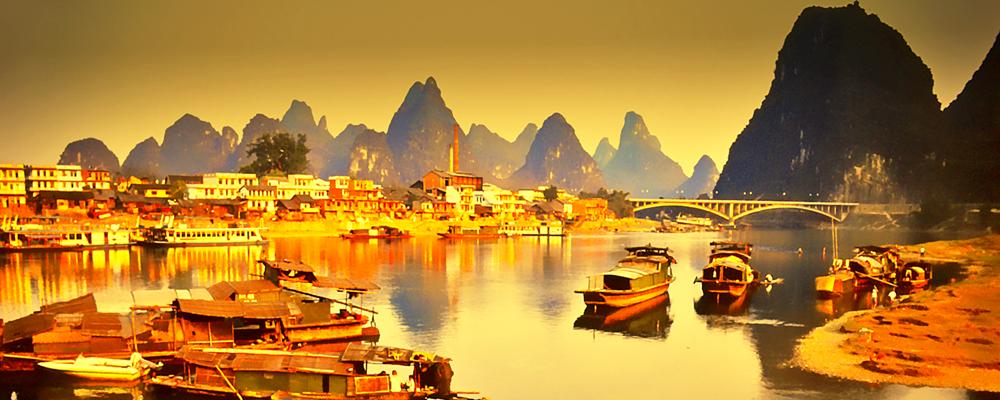
China
( 2 user reviews )China (中国; Zhōngguó) , officially known as the People's Republic of China (中华人民共和国 Zhōnghuá Rénmín Gònghéguó) is a vast country in Eastern Asia (about the same size as the United States of America) with the world's largest population.
With coasts on the East China Sea, Korea Bay, Yellow Sea, and South China Sea, in total it borders 14 nations. It borders Afghanistan, Pakistan, India, Nepal, Bhutan, Myanmar, Laos and Vietnam to the south; Tajikistan, Kazakhstan and Kyrgyzstan to the west; Russia and Mongolia to the north and North Korea to the east. Only Russia has more land borders in Asia.
For Hong Kong, Macau and Taiwan, please see separate articles.
Understand
"I am not one who was born in the possession of knowledge. I am one who is fond of antiquity, and earnest in seeking it there." — Confucius
History
The first civilizations in China arose in the Yangtze and Yellow River valleys at about the same time as Mesopotamia, Egypt and India developed their first civilizations.
For centuries China stood as a leading civilization, outpacing the rest of the world in the arts and sciences. Paper, gunpowder, the compass and printing (both block and movable type) for example, are Chinese inventions. Chinese developments in astronomy, medicine, and other fields were extensive. A Chinese tomb contains a heliocentric model of the solar system, about 1,700 years before Copernicus. In mathematics, "Pythagoras' theorem" and "Pascal's triangle" were known in China centuries before their Western discoverers even lived.
China was also the first civilization to implement a meritocracy. Unlike other ancient cultures, official posts were not hereditary but had to be earned through a series of examinations. Based on mastery of the Confucian Classics and the literary arts (calligraphy, essay writing, poetry, painting), the exams were first conducted during the Han Dynasty. The system was further refined into the formal Imperial Examination System and opened to all regardless of family background during the Tang Dynasty.
Historically, East Asia existed in a China-centric order very different from the nation-state system which emerged in Europe. China is "Zhong Guo," the "Middle Kingdom." Foreigners of all nationalities are "Wai Guo Ren," literally "outside land people." Rather than sovereign states, the Emperor was sovereign over all "under heaven" and thus rulers seeking to be "civilized" would need to enter the tributary system. As the Middle Kingdom, China was surrounded by states which paid tribute to the Emperor. The Emperor did not receive ambassadors from these outlanders, only tribute bearers.
New kings in these surrounding countries were invested by the Emperor and granted seals of authority, thus giving them the "right" to rule. Many areas which are now considered part of China — Ningxia, Qinghai, Gansu, Xinjiang, Yunnan, Tibet, Inner Mongolia and Manchuria — were once tributary kingdoms. Other places not considered part of China — Malacca, Korea, Vietnam, Burma, Mongolia, Okinawa, Japan — were also tributaries at various times in history (Okinawa's Shuri Castle has an interesting exhibit on the tributary system). Of course at times the "tributary" states were actually more militarily powerful than the Chinese dynasty at the time but the idealized image of a harmonious order with China and the emperor at the center endured for centuries.
Tributary relations were complemented by academic, religious, political and cultural exchanges. Tributary rulers received protection, trade benefits, and advisers (academic, political, scientific, etc). In a sense, China really is the "center land." Chinese influence is quite apparent in the traditional culture of many of its neighbors, most notably Vietnam, Korea and Japan. Each of these countries adopted the Chinese writing system at some point, and it is still in use, to varying degrees and with certain modifications, in the latter two today. Confucian philosophy and social theory deeply influenced their societies. Indeed, Japan's ancient capital of Nara was modeled after the Tang dynasty capital of Chang'An (now Xi'an).
China also explored the world and traded extensively with distant lands. By the 5th and 6th centuries AD, voyages to India and the Arab countries were routine. In the 15th century, the Ming Dynasty fleets under Admiral Zheng He reached as far as East Africa. These ships were technologically very advanced, much larger than European ships of the day, and equipped with a system of watertight compartments that Europe was not to match for several centuries. These voyages were not for settlement or conquest, but for trade and tribute. Zheng He's voyages brought tribute and glory but were fabulously expensive. Facing renewed troubles on its northern border, after 1433, China turned inward with a vengeance. Records of the great trading voyages were destroyed in 1477 and the ships rotted away in dry dock.
Interaction with the West and the Decline of the Imperial System
One of the first Westerners to visit China and write about it was Marco Polo in the late 13th century. He wrote of Hangzhou, "The city is beyond dispute the finest and the noblest in the world." and rated Quanzhou as one of the two busiest ports on earth. (The other was Alexandria.) Among the Chinese innovations that Europeans first heard of from Polo were paper money, window glass and coal.
When seaborne Western traders arrived in the 16th century, China was initially hostile to them. The first Western base was Portugal's colony of Macau, awarded by the Ming in gratitude for clearing out a local pirate base.
The Emperor imposed various restrictions on trade, allowing Westerners to trade only at Canton (today's Guangzhou), only with payment in silver, and only through a government-approved monopoly of traders called the Cohong. Export of items that would break Chinese monopolies, such as tea seeds or silk worms, was strictly forbidden. Traders eventually smuggled both out, creating two of India's greatest industries. Western traders resented these restrictions and struggled to interest the Chinese in Western goods, without notable success.
By the end of the 19th century, the situation would be completely reversed. Assorted Western powers had taken various pieces of Chinese territory and relatively free trade was well established through an ever increasing number of treaty ports and spheres of influence. Throughout the century, the Sino-Western relationship continued to be fraught with difficulties. Westerners tended to see China as corrupt and decadent; Chinese often viewed the West as greedy and contemptible. Both were right, at least part of the time.
There was also an enormous difference in world view. To the Chinese court, Western envoys were just a group of new outsiders who should show appropriate respect for the emperor like any other visitors; of course the kowtow (knocking one's head on the floor) was a required part of the protocol. For that matter, the kowtow was required in dealing with any official. Some countries, like the Netherlands, were willing to play along. For others, most notably the United Kingdom, treating China's decadent regime with any respect at all was being generous. The envoy of Queen Victoria or another power might give some courtesies, even pretend the Emperor was the equal of their own ruler. However, they considered the notion that they should kowtow utterly ludicrous.
The greatest contention was opium. For the West, the profitable commodities were "pigs and poison," indentured laborers and opium. Britain's balance of trade — paying for tea and silk in silver and being quite unable to interest Chinese in most British products — would have been disastrous without opium. However, by growing opium in India and exporting vast amounts to China, the British were able to enjoy a healthy trade surplus. Millions of Chinese became addicted to opium; many made fortunes from the trade. But every Chinese government from the Qing to the present has been unalterably opposed to the trade.
The 19th century was a period of wars, rebellions, territorial cession, and turmoil:
-
Two Opium Wars (1839-1842 and 1856-1860) pitted China against Western powers. China quickly lost both wars. After each defeat, the victors forced the Chinese government to make major concessions. After the first war, the treaty ceded Hong Kong island to Britain, and opened five "treaty ports" (Guangzhou, Xiamen, Fuzhou, Shanghai and Ningbo) to Western trade. After the second, Britain acquired Kowloon, and inland cities such as Nanjing and Wuhan were opened to trade.
-
The Taiping Rebellion (1851-1864) was led by a charismatic figure claiming to be Christ's younger brother. It was largely a peasant revolt. The Taiping program included land reform and eliminating slavery, concubinage, arranged marriage, opium, footbinding, judicial torture and idolatry. The Qing government, with some Western help, eventually defeated the Taiping rebels, but not before they had ruled much of southern China for over ten years. This was one of the bloodiest wars ever fought; only World War II killed more people. Nanjing, which was their capital, has an interesting Taiping museum.
-
The Panthay Rebellion (1856–1873) in Yunnan pitted the Hui ethnic group against central authority. Up to one million people died during the revolt.
-
In 1858 and 1860, the Qing signed the Treaty of Aigun and the Treaty of Peking which transferred sovereignty of Outer Manchuria (today's Primorsky Krais, Jewish Autonomous Oblast and parts of Amur Krais and Khabarovsk Krais) to Russia.
-
The Dungan Rebellion (1862-1877) in central China and Xinjiang saw Hui and other Muslim ethnic groups fighting against local authorities. Suppression of the rebellion brought what is now Xinjiang firmly under central rule.
-
In 1879, Japan annexed the Ryukyu Kingdom, then a Chinese tributary state, and incorporated it as Okinawa prefecture. Despite pleas from a Ryukyuan envoy, China was powerless to send an army. The Chinese sought help from the British, who instead awarded the islands to Japan.
-
In 1884-1885, China and France fought a war that resulted in the loss of China's modernized Fuzhou-based naval fleet and China's accepting French control over their former tributary states in what is now Vietnam.
-
In 1895, China lost the Sino-Japanese war and ceded Taiwan, the Penghu islands and the Liaodong peninsula to Japan. In addition, it had to relinquish control of Korea, which had been a tributary state of China for a long time.
-
In 1898, Britain acquired a ninety-nine year lease on the New Territories of Hong Kong in the Second Convention of Peking.
The Chinese resented much during this period — notably missionaries, opium, annexation of Chinese land and the extraterritoriality that made foreigners immune to Chinese law. To the West, trade and missionaries were obviously good things, and extraterritoriality was necessary to protect their citizens from the corrupt Chinese system. To many Chinese, however, these were yet more examples of the West exploiting China.
Around 1898, these feelings exploded. The "Society of Righteous and Harmonious Fists" (the Boxers) led a peasant religious/political movement whose main goal was to drive out evil foreign influences. Some believed their kung fu and prayer could stop bullets. While initially anti-Qing, once the revolt began they received some support from the Qing court and regional officials. The Boxers killed a few missionaries and many Chinese Christians, and eventually besieged the embassies in Beijing. An eight-nation alliance: Germany, France, Italy, Russia, the United Kingdom, the U.S., Austria-Hungary and Japan, sent a force up from Tianjin to rescue the legations. The Qing had to accept foreign troops permanently posted in Beijing and pay a large indemnity as a result. In addition, Shanghai was divided among China and the eight nations.
The Republican Era
The 20th century brought revolution. The empire was overthrown in 1911 and Sun Yat-sen (孙中山, Sūn Zhōngshān in Mandarin), a doctor, Christian, revolutionary, nationalist, socialist and democrat, became president of the newly formed Republic of China (中华民国). He stepped down shortly thereafter allowing the former Qing general Yuan Shih-kai to become president. After an abortive attempt at declaring himself emperor, Yuan died in 1916. Central rule collapsed and China broke into semi-autonomous warlord regions. Until 1949 the various warlords fought challenges to their local power from any outsider, regardless of nationality or ideology.
In 1919 frustrations with China's weakness at the hands of foreign powers, particularly Japan, led to student protests in Beijing. Today known as the "May Fourth Movement" the students called for radical reforms to Chinese society including the use of the vernacular language in writing as well as development of science and democracy. The intellectual ferment of this era gave strength to two rising movements: the Kuomintang (KMT, established in 1919) and the Chinese Communist Party (CCP, established in 1921).
In 1926-28 a united front between the KMT and the CCP united much of eastern China under KMT rule after the "Northern Expedition." However, the KMT under Chiang Kai-shek turned on the Communists killing thousands and driving the movement underground. During this time, Mao Zedong set up a base area in the mountains of Jiangxi Province called the Jiangxi Soviet. The Kuomintang launched a series of extermination campaigns against the Communists. Pressure on the Jiangxi Soviet forced the CCP to flee west in 1934. The epic Long March led the CCP and Red Army from Jiangxi across southern and western China before ending in 1935 in Yan'an in Shaanxi Province.
From 1927 to 1937, the KMT consolidated authoritarian one-party rule. Often called the Nanjing Decade after the Kuomintang capital in Nanjing, the period was one of economic expansion, industrialization and urbanization. Many of the great trading families of Hong Kong made their fortunes in Shanghai during this time. Shanghai became one of the world's busiest ports and the most cosmopolitan city in Asia, home to millions of Chinese as well as a polyglot community of around 60,000 foreigners which included British Taipans, American missionaries, Iraqi Jews and refugees from Nazi Germany, Indian police, White Russians and many other notables. Nonetheless, KMT rule remained fragmented and weak outside of urban centers in eastern China. Severe problems persisted in the countryside including civil unrest, warlord conflict, banditry and major famines.
After the 1895 war, Japan continued its imperial expansion in East Asia. It invaded Manchuria in 1931 and established the puppet kingdom of Manchukuo under the nominal leadership of the last Qing emperor, Pu Yi. Japan launched a full-scale invasion in 1937 and overran much of eastern China by the end of the decade. Japanese behavior was often brutal; the most extreme example was the 1937 Nanjing Massacre. Chinese resistance was spirited. The Japanese generals thought they could take all of China in three months; instead it took them three months just to drive the Chinese army out of Shanghai and they never did manage to take the entire country. After the expected quick victory in China, Japan's generals planned to move most of their army to other fronts, but in fact roughly half the Japanese army was tied up in China throughout the war. The Allies sent aid via the Burma Road.
As a result of the Japanese invasion, the Kuomintang and Communists signed a tenuous agreement in 1937 to form a second united front. The agreement broke down in the early 1940s. The Kuomintang frequently held back troops from fighting the Japanese and used them against the Communists. The Communists used the power vacuum behind the Japanese lines to expand their guerrilla operations and set up rural networks. The stage was set for the Communists under Mao Zedong and the Kuomintang under Chiang Kai-shek to openly fight each other after Japan's defeat.
Outright civil war resumed in 1946. Corruption, hyperinflation, defections and desertions crippled the KMT government and army. In 1949, the Communists won; the Kuomintang took the national gold reserves and imperial treasure and fled to Taiwan. There the KMT reestablished themselves and promised to recapture the Mainland. Various Western countries refused to recognize "Red China" and continued to treat the Kuomintang as the only "legitimate" government of China, some until the early '70s.
The People's Republic
The new Communist government implemented strong measures to restore law and order and revive industrial, agricultural and commercial institutions reeling from more than a decade of war. By 1955 China's economy had returned to pre-war levels of output as factories, farms, labor unions, civil society and governance were brought under Party control. After an initial period closely hewing to the Soviet model of heavy industrialization and comprehensive central economic planning, China began to experiment with adapting Marxism to a largely agrarian society.
Massive social experiments such as the Hundred Flowers Campaign, the Great Leap Forward (intended to industrialize China quickly) and the Cultural Revolution (aimed at changing everything by discipline, destruction of the "Four Olds," and attention to Mao Zedong Thought) rocked China from 1957 to 1976. The Great Leap Forward and Cultural Revolution are generally considered disastrous failures. The cultural and historical damage from the Cultural Revolution can still be seen today. Many traditional Chinese customs, such as the celebration of the Hungry Ghost Festival(中元节), are still thriving in Taiwan, Hong Kong, Macau and overseas Chinese communities, but have largely disappeared in mainland China.
Mao Zedong died in 1976. One month later his widow was arrested as part of the "Gang of Four." The gang was blamed for the excesses of the Cultural Revolution. In 1978, Deng Xiaoping became China's paramount leader. Deng and his lieutenants gradually introduced market-oriented reforms and decentralized economic decision making. Economic output quadrupled by 2000 and continues to grow by about 9% a year, but problems remain — bouts of serious inflation, regional and income inequality, pollution, rural poverty and corruption. Political controls remain tight even though economic policy continues to be relaxed, enough for China to secure admission to the World Trade Organization. In 2003, the CCP changed its statutes to accept a new category of members: "Red Capitalists." October 2007 saw the first official guarantees for private property, a clear step away from doctrinaire communist practice.
The current president and CCP General Secretary, Hu Jintao, has proclaimed a policy for a "Harmonious Society" (和谐社会) which promises to restore balanced economic growth and to channel investment and prosperity into China's central and western provinces, which have been largely left behind in the economic boom since 1978. This policy involves additional tax breaks for farmers, a rural medical insurance scheme, reduction or elimination of school tuition fees and infrastructure development to encourage investment in underdeveloped areas, e.g. the Beijing/Lhasa railway - a dream first put down on paper by Sun Yat-sen in the early 1900s.
Dynasties and capitals
Many cites have served as the capital of China, or of various smaller states in periods when China was divided. Beijing and Nanjing mean northern capital and southern capital respectively; each has been the capital several times.
-
Legend has it that the Three Sovereigns and Five Emperors (三皇五帝), who were mythical God-like kings, ruled China from about 2852 BC to 2205 BC.
-
The Xia dynasty (夏朝) seems to have ruled the Yellow River valley area from about 2100 BC to 1600 BC, though some experts consider this period more legend than history. However, archaeological evidence at Erlitou has shown that at the very least, an early Bronze Age civilization had already developed by that period.
-
The first historically confirmed dynasty, the Shang (商朝) (1700 BC to 1027 BC) ruled only the Yellow River valley and had their capital near Anyang in Henan. Written Chinese characters began to develop during this time, as evidenced by court records carved on turtle and cattle bones.
-
The Zhou Dynasty (周朝), 1027-221 BC, had their first capital at Hao near modern Xi'an. After a military defeat in 771 BC, they continued as the Eastern Zhou with capital Luoyang. The Zhou is the longest dynasty in Chinese history, lasting about 800 years. However, the Eastern Zhou was a period of political turmoil with various feudal lords vying for power, culminating in the Spring and Autumn Period (春秋时代), during which prominent Chinese philosophers like Confucius and Laozi lived, but later stabilized into seven large states during the Warring States period (战国时代).
-
The Qin Dynasty (秦朝), 221-206 BC defeated the Zhou and the six other feudal states, and became the first rulers to unite an area anything like all of China. They were also the first introduce a centralized system of government to China. Their capital was at Xianyang, near modern Xi'an. Our word "China," and the word "Chin" in languages of India, probably comes from their name.
-
The Han Dynasty (汉朝), 206 BC to 220 AD, had its capitals at Chang'an near modern Xi'an (Western Han) and Luoyang (Eastern Han). This was the period of the first Silk Road trade, was also the period when paper was invented. Chinese still use Han as the name of their largest ethnic group and Chinese characters are still called "hànzì" (汉字) in Chinese, with similar cognates in Korean and Japanese. The Han is considered by most Chinese to be the first golden age in Chinese civilization.
-
The fall of the Han Dynasty saw China split into the three states of Wei (魏), Shu (蜀) and Wu (吴), known collectively as the Three Kingdoms (三国). Despite lasting for only about 60 years, it is a greatly romanticized period of Chinese history. The capitals of the three states were at Luoyang, Chengdu and Nanjing respectively.
-
The Jin Dynasty (晋朝), briefly re-unified China from 280-317. Though they continued to exist until 420, they only controlled a small area for most of the period. During the unified period, the capital was at Luoyang and later Chang'an.
-
From 317-581, China was divided. Capitals of various important states included Luoyang, Nanjing and Suzhou.
-
The short-lived Sui Dynasty (隋朝), 581-618, managed to re-unify China. It had its capital at Chang'an.
-
The Tang Dynasty (唐朝), 618-907, had its capitals at Chang'an and Luoyang. This was the golden age of Chinese poetry, Buddhism and statecraft. It saw the development of the imperial examination system, which attempted to select officials by ability rather than family background. The Tang is considered by most Chinese to be the second golden age in Chinese civilization, and Chinatowns overseas are often known as "Street of the Tang People" (唐人街) in Chinese.
-
China was then divided once again for about fifty years, during which it was under then control of several small short-lived states. The capitals of the various states include Fuzhou, Guangzhou, Yangzhou, Changsha and many others.
-
The Song dynasty (宋朝), 960-1279, again united most of China and had its capital at Kaifeng until it fell to the Jurchens. The Song moved the capital to Nanjing and later to Hangzhou. Eventually, the Mongols defeated the Jurchens and proceeded to conquer the Song empire. Although militarily weak, the Song reached a level of commercial and economic development unmatched until the West's Industrial Revolution. Marco Polo, who was in Hangzhou a few years after the Mongol conquest, describes it as one of the richest and most beautiful cities on Earth. The Jurchen Jin Dynasty maintained a capital at modern-day Beijing.
-
The Yuan (Mongol) dynasty (元朝), 1279-1368, used the area that is now Beijing as their capital. Polo mentions it under the name Canbulac, the Khan's camp.
-
The Ming dynasty (明朝), 1368-1644, initially had Nanjing as their capital then moved the capital to Beijing. They built many of Beijing's famous buildings including the Forbidden City and the Temple of Heaven. Several of the most famous Chinese novels including "Journey to The West" (西游记), "Water Margin" (水浒传) and "Romance of The Three Kingdoms" (三国演义) were written during this period.
-
The Qing (Manchu) dynasty (清朝), 1644-1911, used Beijing as the capital of China but they had their own Manchu capital at Shenyang.
-
The Republic of China (中华民国), which ruled from 1911 to 1949, moved the capital back to Nanjing. Since retreating from the mainland in 1949, they have controlled Taiwan and a few small islands off the coast of Fujian. Taipei is their "temporary capital". During the Second World War, Chongqing was also a temporary capital.
-
Beijing has been the capital of the People's Republic of China (中华人民共和国) since the Communist victory in the civil war in 1949.
People and Habits
China is a very diverse place with large variations in culture, language, customs and economic levels. The economic landscape is particularly diverse. The major cities such as Beijing, Guangzhou and Shanghai are modern and comparatively wealthy. However, a majority of Chinese still live in rural areas even though only 10% of China's land is arable. More than half the total population, some 800 million rural residents, still farm with manual labor or draft animals. Government estimates for 2005 reported that 90 million people lived on under ¥924 a year and 26 million were under the official poverty line of ¥668 a year. Generally the southern and eastern coastal regions are more wealthy while inland areas, the west and southwest are much less developed.
The cultural landscape is unsurprisingly very diverse given the sheer size of the country. China has 56 officially recognized ethnic groups; the largest by far is the Han which comprise over 90% of the population. The other 55 groups enjoy affirmative action for university admission, and exemption from the one-child policy. The Han, however, are far from homogeneous and speak a wide variety of mutually unintelligible local "dialects"; which most linguists actually classify as different languages using the same set of Chinese characters. Many of the minority ethnic groups have their own languages as well. Contrary to popular belief, there is no single unified Han Chinese culture, and while they share certain common elements such as Confucian and Taoist beliefs as a basis, the regional variations in culture among the Han ethnic group is actually very diverse. Many customs and deities are specific to individual regions and even villages. Celebrations for the lunar new year and other national festivals vary drastically from region to region. Specific customs related to the celebration of important occasions such as weddings, funerals and births also vary widely. In general contemporary urban Chinese society is rather secular and traditional culture is more of an underlying current in every day life. Among ethnic minorities, the Zhuang, Manchu, Hui and Miao are the largest in size. Other notable ethnic minorities include: Koreans, Tibetans, Mongols, Uighurs, Kirghiz and even Russians. In fact, China is home to the largest Korean population outside Korea and is also home to more ethnic Mongols than the Republic of Mongolia itself.
Some behaviours that are quite normal in China may be somewhat jarring for foreigners:
-
Spitting: in the street, shops, supermarkets, hotel lobbies, hallways, restaurants, on buses and even in hospitals. Traditional Chinese medical thought believes it is unhealthy to swallow phlegm. Spitting has declined considerably in more developed urban areas like Beijing and Shanghai since the SARS epidemic of 2002. However, in most other areas the habit persists to varying degrees, from moderate to ever-present.
-
Smoking: almost anywhere, including areas with "no smoking signs". Few restaurants have no smoking areas although Beijing now forbids smoking in most restaurants; lower class establishments often do not have ashtrays. Masks would be good idea for long distance bus trips.
-
Anyone who does not look Chinese will find that calls of "hello" or "laowai" are common: lǎowài (老外) literally means "old (and thus respected) outsider", a colloquial term for "foreigner"; the more formal term is wàiguórén (外国人). Calls of "laowai" are ubiquitous outside of the big cities (and even there, occasionally); these calls will come from just about anyone, of any age, and are even more likely from the very young and can occur many times in any given day.
-
Staring: This is common through most of the country. The staring usually originates out of sheer curiosity, almost never out of hostility. Don't be surprised if someone comes right up to you and just looks as if they are watching the t.v., no harm done!
-
Loud conversations, noise, discussions or public arguments: These are very common. Many mainland Chinese speak very loudly (including in the early mornings) and it may be one of the first things you notice upon arrival. Loud speech usually does not mean that the speaker is angry or engaged in an argument (although obviously it can). Full-blown fights involving physical violence are not very common, but they do occur. If you witness such an event, leave the vicinity and do not get involved. Foreigners are almost never targets in China and you will be treated with great respect. Noise means life, and China is rooted in a community based culture, so you may want to bring earplugs for the long bus ride!
-
Pushing, shoving and/or jumping queues: This often occurs anywhere where there are queues, particularly at train stations. Often there simply are no queues at all. Best bet is to pick a line that looks like its moving or just wait for everyone to get on or off the bus or train first!
-
General disregard of city, provincial and/or national rules, regulations and laws. This includes (among many other things) dangerous and negligent driving, (speeding, not using lights at night and driving on the wrong side of the street), jaywalking, and smoking in non-smoking areas or defiance of smoking bans.
Some long-time residents say such behaviors are getting worse; others say the opposite. The cause is usually attributed to the influx of millions of migrants from the countryside who are unfamiliar with city life. Some department stores place attendants at the foot of each escalator to keep folks from stopping to have a look-see as soon as they alight - when the escalator behind them is fully packed.
On the whole, however, the Chinese love a good laugh and because there are so many ethnic groups and outsiders from other regions, they are used to different ways of doing things and are quite okay with that. Indeed the Chinese often make conversation with strangers by discussing differences in accent or dialect. They are often very used to sign language and quick to see a non-verbal joke or pun wherever they can spot one. (A laugh doesn't necessarily mean scorn, just amusement.) If you have children, bring them!
Climate and Terrain
The climate is extremely diverse, from tropical regions in the south to subarctic in the north. Hainan Island is roughly at the same latitude as Jamaica, while Harbin, one of the largest cites in the north, is at roughly the latitude of Montreal. North China has four distinct seasons with intensely hot summers and bitterly cold winters. Southern China tends to be milder and wetter. The further north and west one travels, the drier the climate.
There is also a wide range of terrain to be found in China with many inland mountain ranges, high plateaus, and deserts in center and far west. Plains, deltas, and hills dominate the east. The Pearl River Delta region around Guangzhou and Hong Kong and the Yangtze delta around Shanghai are major economic powerhouses, as is the North China plain around Beijing and the Yellow River. On the border between the Tibet Autonomous Region and the nation of Nepal lies Mount Everest, at 8,850 m, the highest point on earth. The Turpan depression, in northwest China's Xinjiang is the lowest point in the country, at 154 m below sea level. This is also the second lowest point on land in the world after the Dead Sea.
Holidays
China is a huge country with endless travel opportunities. During holidays, however, millions of migrant workers return home and millions of other Chinese travel. Travelers may want to seriously consider scheduling to avoid the major holidays. At the very least, travel should be planned well in advance. Every mode of transportation is crowded; tickets of any kind are hard to come by, so it may be necessary to book well in advance (especially for those traveling from remote western China to the east coast or in the opposite direction). Train and bus tickets are usually quite easy to buy in China, but difficulties arising from crowded conditions at these times cannot be overstated. Travelers who are stranded at these times, unable to buy tickets, can sometimes manage to get airplane tickets, which tend to sell out more slowly.
-
2010 - 14 February
-
2011 - 3 February
-
2012 - 23 January
China has five major annual holidays:
-
National Day (国庆节 guóqìngjié) - 1 October
-
Chinese New Year or Spring Festival (春节 chūnjié) - late January/mid-February
-
Labor Day or May Day (劳动节; láodòngjié) - 1 May
-
Dragon Boat Festival (端午节; duanwujie) - 5th day of the 5th lunar month, usually May-June (16 June in 2010). Boat races and eating zongzi (粽子, steamed pouches of sticky rice) are a traditional parts of the celebration.
-
Mid-Autumn Day (中秋节; zhōngqiūjié)- 15th day of the 8th lunar month, usually October (22 Sep in 2010). Also called the Moon Cake Festival after its signature treat. People meet outside, putting food on tables and looking up at the full harvest moon while talking about life.
These are not one-day holidays; nearly all workers get at least a week for Chinese New Year, some get two or three, and students get four to six weeks. For Labor Day and National Day, a week is typical.
The Spring Festival is especially busy. Not only is it the longest holiday, it is also a traditional time to visit family, much as Christmas is in the West. More or less all the university students (twenty-odd million of them!) go home, and more or less all the migrant workers who have left their farms and villages for better pay in the cities go home. This is often the only chance they have. Everyone wants to go home, and China has a lot of "everyone"! Around the Chinese New Year, many stores and other businesses will close for several days, a week, or even longer.
Also, during early July millions of university students go home and in late August they return to school, jamming transportation options especially between the east coast and the western regions of Sichuan, Gansu, Tibet, and Xinjiang.
A complete list of Chinese festivals would be very long since many areas or ethnic groups have their own local ones. See listings for individual towns for details. Here is a list of some of the nationally important festivals not mentioned above:
-
Lantern Festival (元宵节, 上元节) - 15th day of the 1st lunar month, just after Chinese New Year, usually in February or March. In some cities, such as Quanzhou, this is a big festival with elaborate lanterns all over town.
-
Tomb Sweeping Day or Qingming Festival (清明节) - Around April 4-6, cemeteries are crowded with people who go to sweep the tombs of their ancestors and offer sacrifices. Traffic on the way to the cemeteries can be very heavy.
-
Double Seventh Festival (七夕) - 7th day of the 7th lunar month, usually August, is a festival of romance, sort of a Chinese Valentine's Day.
-
Double Ninth Festival or Chongyang Festival (重阳节) - 9th day of the 9th lunar month, usually in October.
-
Winter Solstice Festival (冬至) - December 22 or 23.
In addition to these, some Western festivals are noticeable, at least in major cities. Around Christmas, one hears carols — mostly English, a few in Latin, plus Chinese versions of "Jingle Bells", "Amazing Grace", and for some reason "Oh Susana". Some stores are decorated and one sees many shop assistants in red and white elf hats. For Valentine's Day, many restaurants offer special meals.
Books
Non-guidebooks, either about China, or by Chinese writers.
Travel:
-
The Travels of Marco Polo by Marco Polo - the Venetian traveler's stories in the Middle Kingdom (see also: On the trail of Marco Polo)
-
Dialogues Tibetan Dialogues Han by Hannü (ISBN 9789889799939) - Tibet through the Tibetans with a Han traveler
Literature:
-
Winter Stars by Beatrice Lao (ISBN 988979991X) - a collection of poems born between the Alps and the Tyrrhenian
-
Romance of the Three Kingdoms (三国演义) - the classic Chinese novel of the heroic deeds of the generals and leaders of the three kingdoms following the collapse of the Han dynasty. Noted for its details of cunning military and political strategies. One of the Four Great Classics.
-
Water Margin or Outlaws of the Marsh (水浒传) - a Song Dynasty tale of bandits living in the Huai River Valley to fight against the corrupt government. Noted for the rebellious nature of its main characters against an established order. It's the Chinese version of "sticking it to the man". One of the Four Great Classics.
-
Journey to the West (西游记) - perhaps the most famous Chinese novel, a fantasy account of Xuan Zang's Tang Dynasty journey to retrieve sacred Buddhist texts with the aid of the monkey king Sun Wukong, the gluttonous Zhu Bajie and dependable Sha Wujing. Noted for its extremely creative fantasies and adventures. One of the Four Great Classics.
-
Dream of the Red Chamber (红楼梦) - a lively account of aristocratic life in the Qing dynasty told through the stories of three powerful families. Noted for its extremely accurate portrayal of Chinese aristocrats and the work is often regarded as the zenith of Chinese literature. One of the Four Great Classics.
History:
-
The Open Empire: A History of China to 1600 by Valerie Hansen - presents in colorful detail the history, culture, and socio-economic development of China from the Shang period to the Ming.
-
1421, The Year China Discovered the World by Gavin Menzies (ISBN 0553815229) - well known but well contested account of China's alleged efforts to explore and map the entire world.
-
1587, A Year of No Significance by Ray Huang - describes an uneventful year in the history of Ming Dynasty China.
-
The Sextants of Beijing by Joanna Waley-Cohen - a book that summarizes recent thinking on how China was much more open and less xenophobic than often assumed.
-
The Search for Modern China by Jonathan Spence - Chinese history since 1644
-
Red Star Over China by Edgar Snow- recounts the months that he spent with the Chinese Red Army in the summer and fall of 1936.
-
The Rape of Nanking by Iris Chang (ISBN 0140277447) - the forgotten Holocaust in WWII
-
The Good Man of Nanking: The Diaries of John Rabe by John Rabe - firsthand description of the sadistic rapes, torture and slaughter perpetrated by Japanese soldiers in WWII and Rabe's ultimate success in saving perhaps a quarter of a million lives
-
Wild Swans by Jung Chang (ISBN 0007176155) - a biography of three generations, from the warlord days to the end of Mao's era, illustrating life under China's version of nationalism and communism (banned in China)
-
Red China Blues: My Long March from Mao to Now by Jan Wong, a reporter for the Globe and Mail of Toronto, Canada. The book describes her experiences as one of the first foreign exchange students to study in China after the Cultural Revolution and her life and experiences as a reporter in China until the mid 1990s.
Cinema
-
Bernardo Bertolucci - The Last Emperor (1987)
-
Zhang Yang - Shower (1999)
-
Chen Kaige - Farewell My Concubine (1993)
-
Feng Xiao Gang - Sorry Baby (1999)
-
Zhang Yimou - Raise the Red Lantern (1991)
-
Zhang Yimou - To Live (1994)
-
Wu Ziniu - Don't Cry, Nanking (1995)
-
Zhang Yimou - Keep cool (1997)
-
Zhang Yimou - Not one less (1999)
-
Xiaoshuai Wang – Beijing bicycle (2001)
-
Zhang Yimou - Riding Alone for Thousands of Miles (2005)
-
Gianni Amelio - La stella che non c’è or The Missing Star (2006)
-
Zhang Yuan - Little Red Flowers (2006)
-
Daniel Lee - Three Kingdoms: Resurrection of the Dragon (2008)
-
Roger Spottiswoode - The Children of Huangshi (2008)
History
The first civilizations in China arose in the Yangtze and Yellow River valleys at about the same time as Mesopotamia, Egypt and India developed their first civilizations.
For centuries China stood as a leading civilization, outpacing the rest of the world in the arts and sciences. Paper, gunpowder, the compass and printing (both block and movable type) for example, are Chinese inventions. Chinese developments in astronomy, medicine, and other fields were extensive. A Chinese tomb contains a heliocentric model of the solar system, about 1,700 years before Copernicus. In mathematics, "Pythagoras' theorem" and "Pascal's triangle" were known in China centuries before their Western discoverers even lived.
China was also the first civilization to implement a meritocracy. Unlike other ancient cultures, official posts were not hereditary but had to be earned through a series of examinations. Based on mastery of the Confucian Classics and the literary arts (calligraphy, essay writing, poetry, painting), the exams were first conducted during the Han Dynasty. The system was further refined into the formal Imperial Examination System and opened to all regardless of family background during the Tang Dynasty.
Historically, East Asia existed in a China-centric order very different from the nation-state system which emerged in Europe. China is "Zhong Guo," the "Middle Kingdom." Foreigners of all nationalities are "Wai Guo Ren," literally "outside land people." Rather than sovereign states, the Emperor was sovereign over all "under heaven" and thus rulers seeking to be "civilized" would need to enter the tributary system. As the Middle Kingdom, China was surrounded by states which paid tribute to the Emperor. The Emperor did not receive ambassadors from these outlanders, only tribute bearers.
New kings in these surrounding countries were invested by the Emperor and granted seals of authority, thus giving them the "right" to rule. Many areas which are now considered part of China — Ningxia, Qinghai, Gansu, Xinjiang, Yunnan, Tibet, Inner Mongolia and Manchuria — were once tributary kingdoms. Other places not considered part of China — Malacca, Korea, Vietnam, Burma, Mongolia, Okinawa, Japan — were also tributaries at various times in history (Okinawa's Shuri Castle has an interesting exhibit on the tributary system). Of course at times the "tributary" states were actually more militarily powerful than the Chinese dynasty at the time but the idealized image of a harmonious order with China and the emperor at the center endured for centuries.
Tributary relations were complemented by academic, religious, political and cultural exchanges. Tributary rulers received protection, trade benefits, and advisers (academic, political, scientific, etc). In a sense, China really is the "center land." Chinese influence is quite apparent in the traditional culture of many of its neighbors, most notably Vietnam, Korea and Japan. Each of these countries adopted the Chinese writing system at some point, and it is still in use, to varying degrees and with certain modifications, in the latter two today. Confucian philosophy and social theory deeply influenced their societies. Indeed, Japan's ancient capital of Nara was modeled after the Tang dynasty capital of Chang'An (now Xi'an).
China also explored the world and traded extensively with distant lands. By the 5th and 6th centuries AD, voyages to India and the Arab countries were routine. In the 15th century, the Ming Dynasty fleets under Admiral Zheng He reached as far as East Africa. These ships were technologically very advanced, much larger than European ships of the day, and equipped with a system of watertight compartments that Europe was not to match for several centuries. These voyages were not for settlement or conquest, but for trade and tribute. Zheng He's voyages brought tribute and glory but were fabulously expensive. Facing renewed troubles on its northern border, after 1433, China turned inward with a vengeance. Records of the great trading voyages were destroyed in 1477 and the ships rotted away in dry dock.
Regions
- North-east - dōngběi, "rust belt" cities, vast forests, Russian, Korean, and Japanese influence, and long, snowy winters
- North - The Yellow River Basin area, cradle of China's civilization and historic heartland
- North-west - Grasslands, deserts, mountains, nomadic people, and Islam
- South-west - The exotic part, minority peoples, spectacular scenery, and backpacker havens
- Southern-central - Farming areas, semi-tropical or temperate mountains and forests
- South-east - Traditional trading center, manufacturing powerhouse, and ancestral homeland of most overseas Chinese
- East - The "land of fish and rice", traditional water towns, and China's new cosmopolitan economic center
Cities
China has many large and famous cities. Below is a list of the nine most important to travelers in mainland China. Other cities are listed under their specific regional section. See the Dynasties and capitals section for a detailed list of China's many previous capitals.
-
Beijing (北京) - the capital, cultural center, and host of the 2008 Olympics
-
Guangzhou (广州) - one of most prosperous and liberal cities in the south, near Hong Kong
-
Guilin (桂林) - popular destination for both Chinese and foreign tourists with sensational mountain and river scenery
-
Hangzhou (杭州) - famously beautiful city and major center for the silk industry
-
Kunming (昆明) - capital of Yunnan and gateway to a rainbow of ethnic minority areas
-
Nanjing (南京) - a renowned historical and cultural city with many historic sites
-
Shanghai (上海) - famous for its riverside cityscape, China's largest city is a major commercial center with many shopping opportunities
-
Suzhou (苏州) - "Venice of the East," an ancient city famous for canals and gardens just west of Shanghai
-
Xi'an (西安) - the oldest city and ancient capital of China, home to ten dynasties including the Han and the Tang, terminus of the ancient Silk Road, and home of the terracotta warriors
You can travel to many of these cities using the new fast trains. In particular, the Hangzhou - Shanghai - Suzhou - Nanjing line is a convenient way to see these historic areas.
Other destinations
Some of the most famous tourist attractions in China are:
-
Great Wall of China (万里长城)
-
Tibet (西藏)
-
Silk Road (丝绸之路)
-
Hainan island, tropical paradise (海南)
-
Yangtze River (Three Gorges) (三峡)
China has dozens of UNESCO World Heritage sites.
Sacred sites
For sacred mountains, see the next section.
Several sites in China have famous Buddhist art:
-
Yungang Grottoes in Shanxi Province - more than 51,000 Buddhist carvings, dating back 1,500 years, in the recesses and caves of the Yangang Valley mountainsides
-
Mogao Caves in Gansu province - art and manuscripts dating back to the 4th century
-
Dazu Rock Carvings near Chongqing - dating from the 7-13th century
-
Longmen Grottoes near Luoyang - 5-10th century
Mountains
China is home to many sacred mountains.
The Five Great Mountains (五岳 wǔyuè), associated with Taoism:
-
Mount Tai (泰山), Shandong Province (1,545 meters)
-
Mount Hua (华山), Shaanxi Province (1,997 meters)
-
Mount Heng (Hunan) (衡山), Hunan Province (1,290 meters)
-
Mount Heng (Shanxi) (恒山), Shanxi Province (2,017 meters)
-
Mount Song (嵩山), Henan Province, where the famous Shaolin Temple (少林寺) is located (1,494 meters)
The Four Sacred Mountains (四大佛教名山 sìdà fójiào míngshān), associated with Buddhism:
-
Mount Emei (峨嵋山), Sichuan Province (3,099 meters)
-
Mount Jiuhua (九华山), Anhui Province (1,342 meters)
-
Mount Putuo (普陀山), Zhejiang Province (297 meters, an island)
-
Mount Wutai (五台山), Shanxi Province (3,058 meters)
The three main sacred mountains of Tibetan Buddhism:
-
Mount Kailash, Tibet (5,656 meters), also known as Gang Rinpoche in Tibetan, also one of Hinduism's holiest mountains visited by many Hindu pilgrims
-
Kawa Karpo
-
Amnye Machen
There are also several other well-known mountains. In China, many mountains have temples, even if they are not especially sacred sites:
-
Mount Qingcheng (青城山), Sichuan Province
-
Mount Longhu (龙虎山), Jiangxi Province
-
Mount Lao (崂山), Shandong Province
-
Mount Wuyi (武夷山), Fujian Province, a major tourist/scenic site with many tea plantations
-
Mount Everest, straddling the border between Nepal and Tibet, world's highest mountain
-
Mount Huang (黄山) (Yellow Mountain), in Anhui province, with scenery and temples
-
Mount Wudang (武当山), near Danjiangkou in Hubei, Taoist mecca, birthplace of taichi and Wudang kung fu
-
Changbaishan/Paektusan (Chinese:长白山 Korean:백두산), the most sacred mountain in the world to both ethnic Manchus and Koreans, located on the border with North Korea
Revolutionary Pilgrimage Sites
-
Shaoshan (韶山) - First CCP Chairman and Chinese leader Mao Zedong's hometown
-
Jinggangshan (井冈山) - The first CCP rural base area after the 1927 crackdown by the KMT
-
Ruijin (瑞金) - Seat of the China Soviet Republic from 1929 to 1934
-
Zunyi (遵义) - Site of the Zunyi Conference where Mao Zedong joined the Politburo Standing Committee
-
Luding (泸定) - Site of a famous forced crossing of a high mountain river
-
Yan'an (延安) - Primary base area for the Communist Party from 1935 to 1945
Itineraries
Some itineraries cover trips that are entirely within China:
-
Two weeks to a month in China
-
A week near Hong Kong
-
Along the Yangtze river
-
Along the Yellow river
-
Along the Grand Canal
-
Overland Kunming to Hong Kong
-
Yunnan tourist trail
-
Overland to Tibet
-
Long March Others are partly in China:
-
Europe to South Asia over land
-
Overland from Singapore to Shanghai
-
Silk Road - ancient caravan route from China to Europe
-
Karakoram Highway - Western China to Pakistan through the Himalayas
-
On the trail of Marco Polo
Getting there
Visas
Most travelers will need a visa, called a qianzheng (签证) in Chinese, to visit mainland China. In most cases, this should be obtained from a Chinese embassy or consulate before departure. Visas for Hong Kong and Macau can be obtained through a Chinese embassy or consulate, but must be applied for separately from the mainland Chinese visa. However, citizens from most Western countries do not need visas to visit Hong Kong and Macau. See those guides for more information.
The most notable exception to this rule is transit through certain airports. Most airports allow a 12-hour stay without a visa so long as you do not leave the airport, but Shanghai Pu Dong International and Shanghai Hongqiao International Airports permit a forty-eight hour stay without a visa.
Nationals of Singapore, Brunei and Japan do not need a visa to visit China for a stay of up to 15 days, regardless of the reason of visit. To visit mainland China, Hong Kong and Macau residents of Chinese nationality need to apply at the China Travel Service, the sole authorized issuing agent, to obtain a Home Return Permit, a credit card sized ID allowing multiple entries and unlimited stay for 10 years.
Citizens of the Republic of China (Taiwan) may obtain an entry permit (valid for 3 months) at airports in Dalian, Fuhzou, Haikou, Qingdao, Sanya, Shanghai, Wuhan, Xiamen and China Travel Services in Hong Kong and Macau. Visitors must hold a Republic of China passport, Taiwanese Identity Card and Taiwan Compatriot Pass (台胞证). The Compatriot Pass may be obtained for single use at airports in Fuzhou, Haikou, Qingdao, Sanya, Wuhan and Xiamen. The entry permit fee is ¥100 plus ¥50 for issuing a single use Taiwan Compatriot Pass. Travelers should check the most up-to-date information before traveling.
-
G visa - transit
-
L visa - tourism, family visits
-
F visa - business trips, internships, short study
-
Z visa - working, multi-entry
-
X visa - study more than 6 months
Getting a tourist visa is fairly easy for most passports as you don't need an invitation, which is required for business or working visas. The usual tourist single-entry visa is valid for a visit of 30 days and must be used within three months of the date of issue. A double-entry tourist visa must be used within six months of the date of issue. It is possible to secure a tourist visa for up to 90 days for citizens of some countries.
Some travelers will need a dual entry or multiple entry visa. For example, if you enter China on a single entry visa, then go to Hong Kong or Macau, you need a new visa to re-enter mainland China. In Hong Kong, multiple entry visas are officially available only to HKID holders, but the authorities are willing to bend the rules somewhat and may approve three-month multiple entry visas for short-term Hong Kong qualified residents, including exchange students. It is recommended to apply directly with the Chinese government in this case, as some agents will be unwilling to submit such an application on your behalf.
Obtaining a Visa on Arrival is possible usually only for the Shenzhen or Zhuhai Special Economic Zones, and such visas are limited to those areas. When crossing from Hong Kong to Shenzhen at Lo Wu KCR station, and notably not at Lok Ma Chau, a five day Shenzhen-only visa can be obtained during extended office hours on the spot for ¥160 (Oct 2007 price) for passport holders of many nationalities, for example Irish or New Zealand or Canadian. Americans are not eligible, while British nationals have to pay ¥450. The office now accepts only Chinese yuan as payment, so be sure to bring sufficient cash.
There may be restrictions on visas for political reasons and these vary over time. For example:
-
As of January 2008, the visa fee for American nationals was increased to US$130 (or US$110 as part of a group tour) in reciprocation for increased fees for Chinese nationals visiting America.
-
As of April 2008, visas issued in Hong Kong are generally limited to 30 days, same day service is difficult to get. Multiple-entry visas have also become much harder or impossible to get.
-
Indian nationals are limited to 10 or 15 day tourist visas, and have to show US $100 per day of visa validity in the form of traveler's checks (US $1000 and US $1500, respectively), likely owing to the contested border and migration fears.
A few years ago, the Z (working) visa was a long-term visa. Now a Z visa only gets you into the country for 30 days; once you are there, the employer gets you a residence permit. This is effectively a multiple-entry visa; you can leave China and return using it. Some local visa offices will refuse to issue a residence permit if you entered China on a tourist (L) visa. In those cases, you have to enter on a Z visa. These are only issued outside China, so getting one may require a trip to Hong Kong or Korea. They also usually require an invitation letter from the employer. In other cases it is possible to convert an L visa to a residence permit; it depends upon which office you are dealing with and perhaps on your employer's connections.
One option for foreigners married to Chinese citizens (see Marriage in China) is to obtain a six to twelve month tanqin visa (探亲), or visting relatives visa. A tanqin visa is actually a tourist (L) visa that permits individuals to remain in China continuously for the duration of their visa and does not require the visa holder to exit and reenter the country to maintain the validity of the visa. Individuals seeking to apply for a tanqin visa should first enter the country on a different visa and then apply for a tanqin visa at the local Public Security bureau in the city that your marriage was registered in, which is usually your Chinese spouse's hometown. Make sure to bring your marriage certificate and spouses shenfenzheng (身份证) identification card.
Registering your abode
If staying in a hotel, guest house or hostel, the staff will request to see, and often scan, your passport, visa, and entry stamps at check-in.
If you are staying in a private residence you are required to register your abode with the local police within 24 (city) to 72 (countryside) hours of arrival. The police will ask for (1) a copy of the photograph page of your passport, (2) a copy of your visa, (3) a copy of your immigration entry stamp, (4) a photograph, (5) a copy of the tenancy agreement or other document concerning the place you are staying in. That agreement might not be in your name but it will still be asked for.
As a result of the H1N1-flu pandemic there are some kinds of health-checks currently in effect. These may be as simple as a customs person judging your appearance to IR-cameras checking for elevated body temperature. If there is a suspicion of flu, you will be quarantined for seven days.
By plane
The main international gateways to mainland China are Beijing, Shanghai and Guangzhou. Almost every sizable city will have an international airport, but options are usually restricted to flights from Hong Kong, neigbouring countries such as South Korea and Japan, and sometimes Southeast Asia.
If arriving in Hong Kong or Macau there are ferries that can shuttle passengers straight to another destination such as Shekou or Bao'an Airport in Shenzhen, Macau Airport, Zhuhai and elsewhere without actually "entering" Hong Kong or Macau. A shuttle bus takes transit passengers to the ferry terminal so their official entry point, where they clear immigration, will be the ferry destination rather than the airport. Please note that the ferries do have different hours so landing late at night may make it necessary to enter either territory to catch another bus or ferry to one's ultimate destination. For example, it would be necessary to clear immigration if going from HK Int'l Airport to Macau via the Macau Ferry Terminal. The most recent information on the ferries to Hong Kong can be found at the Hong Kong International Airport website.
While many major airlines now fly to Beijing, Shanghai, Guangzhou and Hong Kong, budget seats are often scarce. For good offers, book as early as possible. Tickets are particularly expensive or hard to come by at the beginning or end of summer when Chinese students abroad return home or fly back to their universities around the world. As with other travel in China, tickets can be difficult to get and expensive around Chinese New Year.
If you live in a city with a large overseas Chinese community (such as Toronto, San Francisco, Sydney or London), check for cheap flights with someone in that community. Sometimes flights advertised only in Chinese newspapers or travel agencies cost significantly less than posted fares in English.
See also: Discount airlines in Asia
Airlines and Routes
China's carriers are growing rapidly - from 500 planes in 2000 to 863 as of May 2006. The national fleet should have 1580 planes by 2010 and 3200 by 2024. They are also working hard at becoming highly competitive in both service and pricing. Airlines include China Southern , China Eastern , Air China , and Hainan Airlines .
Fliers may prefer Asian airlines as they generally have more cabin staff and quality service. Hong Kong based Cathay Pacific is an obvious possibility. Other candidates include Singapore Airlines , Japan Airlines , and Garuda Indonesia . Korean Air often has good prices on flights from various places in Asia such as Bangkok via Seoul to North America. Connecting flights may be cheaper than direct flights so keep this in mind. Korean Air also flies to more than a dozen Chinese cities, including Shanghai.
-
North America: Northwest Airlines serves Hong Kong, Beijing, Shanghai and Guangzhou through its hub at Narita. United has the most nonstop flights, serving Hong Kong, Beijing, and Shanghai from Chicago, San Francisco and Washington. Continental Airlines flies to Hong Kong and Beijing from Newark. American flies nonstop to Shanghai from Chicago. Delta offers nonstop service from Atlanta to Shanghai. Air Canada serves Beijing, Shanghai and Hong Kong from Toronto and Vancouver.
-
Australia: Qantas offers direct flights from Sydney, Melbourne, Brisbane and Perth to Hong Kong. Qantas also flies to Beijing and Shanghai from Sydney but only offers a code-share service to Shanghai from Melbourne
-
New Zealand: Air New Zealand is the only direct option to Mainland China. They offer direct flights to Beijing, Shanghai and Hong Kong.
-
Southeast Asia: Singapore has arguably the best connections, due to its large ethnic Chinese population, with flights to all the major cities as well as some regional centers such as Xiamen and Shenzhen. Besides Singapore, Kuala Lumpur and Bangkok offer good connections. Tiger Airways , Bangkok Airways , Air Asia , and Cebu Pacific offer low-priced flights from Southeast Asia (Bangkok, Chiang Mai, Singapore, Kuala Lumpur and Manila) to various destinations in southern China, including Xiamen, Jinghong, Guangzhou, Haikou and Macau.
-
Europe: Most of the major European airlines — from Air France and British Airways to Finnair — have direct flights from their hubs to Hong Kong, Beijing and Shanghai; several fly to Guangzhou as well. A few have links to other Chinese cities. For example KLM flies direct from Amsterdam to Chengdu and Lufthansa flies a Frankfurt to Nanjing route.
-
Taiwan: Regular direct flights between Taiwan and Mainland China, which had not taken place since 1949, finally commenced on 4 July 2008. Since 15 December 2008, there are daily direct flights and planes no longer need to be routed through Hong Kong airspace. This has cut flight times significantly on some of the more popular routes such as Shanghai to Taipei.
By train
China can be reached by train from many of its neighboring countries and even all the way from Europe.
-
Russia & Europe - two lines of the Trans-Siberian Railway (Trans-Mongolian and Trans-Manchurian) run between Moscow and Beijing, stopping in various other Russian cities, and for the Trans-Mongolian, in Ulaanbaatar, Mongolia.
-
Kazakhstan & Central Asia - from Almaty, Kazakhstan, one can travel by rail to Urumqi in the northwestern province of Xinjiang. There are long waits at the border crossing for customs, as well as for changing the wheelbase for the next country's track.
-
Hong Kong - regular services link mainland China with Hong Kong.
-
Vietnam - from Nanning in Guangxi province into Vietnam via the Friendship Pass. Services from Kunming have been suspended since 2002.
-
North Korea - four weekly connections between the North Korean capital Pyongyang and Beijing.
Myanmar
Entering China from Myanmar is possible at the Ruili (China)-Lashio (Myanmar) border crossing, but permits need to be obtained fromt the Burmese authorities in advance. Generally, this would require you to join a guided tour.
Vietnam
For most travelers Hanoi is the origin for any overland journey to China. There are currently three international crossings:
- Dong Dang (V) - Pingxiang (C)
You can catch a local bus from Hanoi's eastern bus station (Ben Xe Street, Gia Lam District, tel: 04/827-1529) to Lang Son, where you have to switch transport to minibus or motorbike to reach the border at Dong Dang. Alternatively there are many offers from open-tour providers; for those in a hurry, they might be a good option if they offer a direct hotel to border crossing transfer.
You can change money with freelance money changers, but check the rate carefully beforehand.
Border formalities take about 30 minutes. On the Chinese side, walk up past the "Friendship-gate" and catch a taxi (about ¥20, bargain hard!) to Pingxiang, Guangxi. A seat in a minibus is ¥5. There is a Bank of China branch right across the street from the main bus station; the ATM accepts Maestro cards. You can travel by bus or train to Nanning.
-
Lao Cai (V) - Hekou (C)
-
Mong Cai (V) - Dongxing (C)
At Dongxing, you can take a bus to Nanning, a sleeper bus to Guangzhou (approximately ¥180), or a sleeper bus to Shenzhen (approximately ¥230, 12 hours) (March 2006).
Laos
From Luang Namtha you can get a bus leaving at around 8 a.m. going to Boten (Chinese border) and Mengla. You need to have a Chinese visa beforehand as there is no way to get one on arrival. The border is close (about 1 hr). Customs procedures will eat up another good hour. The trip costs about 45k Kip.
Also, there is a direct Chinese sleeper bus connection from Vientiane to Kunming (about 32 hours). You can jump in this bus at the border, when the minibus from Luang Namtha and the sleeper meet. Don't pay more than ¥200, though.
Pakistan
The Karakoram Highway from northern Pakistan into Western China is one of the most spectacular roads in the world. It's closed for tourists for a few months in winter. Crossing the border is relatively quick because of few overland travelers, and friendly relations between the two countries.
Nepal
The road from Nepal to Tibet passes near Mount Everest, and through amazing mountain scenery. Entering Tibet from Nepal is only possible for tourists on package tours.
Mongolia
From Zamiin Uud. Take a local train from Ulaanbaatar to Zamiin Uud. Then Bus or Jeep to Erlian in China. There are local trains leaving in the evening most days and arriving in the morning. The border opens around 8:30. From Erlian there are buses and trains to other locations in China.
Kazakhstan
The sole border crossing to China is located at Khorgos. Buses run almost daily from Almaty to Urumqi and Yining. No visa-on arrival is available so ensure both your Chinese and Kazakh visas are in order before attempting this.
Kyrgyztan
It is possible to cross the Torugart pass to/from Kyrgyztan, but the road is very rough and the pass is only open during the summer months (June-September) every year. It is possible to arrange crossings all the way from Kashgar, but ensure that all your visas are in order.
Alternatively, while less scenic, a smoother crossing is located at Irkeshtam to the south of Torugart.
Tajikistan
There is a single border crossing between China and Tajikistan at Kulma, which is open on weekdays from May-November. A bus operates across the border between Kashgar in Xinjiang and Khorog in Tajikistan.
Russia
The sole border crossing is located at Manzhouli in Inner Mongolia. Buses run from Manzhouli to Zabaikalsk in Russia. Ensure both your Russian and Chinese papers are in order before attempting this crossing
North Korea
Crossing overland into North Korea is possible, but must be pre-arranged on a guided tour from Beijing. In the reverse direction, the crossing is fairly straightforward if you have arranged it as part of your North Korean tour. Ensure both your Chinese and North Korean papers are in order before attempting this.
Hong Kong
There are four road border crossings into the mainland from Hong Kong at Lok Ma Chau, Sha Tau Kok, Man Kam To and the Shenzhen Bay Bridge. A visa on arrival is available for some nationalities at Lok Ma Chau, but visas must be arranged in advance for all other crossings.
Macau
The two border crossings are at the Portas do Cerco and the Lotus Bridge. A visa-on-arrival can be obtained by certain nationalities at the Portas do Cerco.
By boat
There is regular ferry and hovercraft service between various points on the mainland, such as Guangzhou, Shenzhen and Zhuhai to Hong Kong and Macau. In the fall, several cruise lines move their ships from Alaska to Asia and good connections can generally be found leaving from Anchorage, Vancouver, or Seattle.
Japan
There is a 2-day ferry service from Shanghai and Tianjin to Osaka, Japan. Service is once or twice weekly, depending on season.
A twice-weekly ferry also connects Qingdao to Shimonoseki.
South Korea (ROK)
There is a ferry service from Shanghai and Tianjin to Incheon, a port city very close to Seoul. Another line is from Qingdao or Weihai to Incheon or Dalian to Incheon.
Thailand
Golden Peacock Shipping company runs a speedboat three times a week on the Mekong river between Jinghong in Yunnan and Chiang Saen (Thailand). Passengers are not required to have visas for Laos or Myanmar, although the greater part of the trip is on the river bordering these countries.
Taiwan
Star Cruises operates between Keelung in Taiwan and Xiamen in mainland China, stopping at one of the Japanese islands on the way.
Traveling around
By plane
China is a huge country, so unless you enjoy spending a couple of days on the train or on the road getting from one area to another, you should definitely consider domestic flights. China has many domestic flights connecting all the major cities and tourist destinations. Airlines include the three international carriers: Air China, China Southern, and China Eastern, as well as regional ones including Hainan Airlines, Shenzhen Airlines, Sichuan Airlines and Shanghai Airlines.
Traveling between Hong Kong or Macau and mainland cities is considered an international flight and so can be quite expensive. Hence if arriving in, or departing from, Hong Kong or Macau it is much cheaper to fly to or from Shenzhen or Zhuhai, just across the border, or Guangzhou, which is a little further afield but offers flights to more destinations. As an example, the distance from Fuzhou to Hong Kong, Shenzhen or Guangzhou is about the same, but as of mid-2005 flying to Hong Kong cost ¥1400 while list price for the other cities was ¥880 and for Shenzhen discounts to ¥550 were available. Overnight bus to any of these destinations was about ¥250.
Prices for domestic flights are set at standard rates, but discounts are common, especially on the busier routes. Most good hotels, and many hostels, will have a travel ticket service and may be able to save you 15%-70% off the price of tickets. Travel agencies and booking offices are plentiful in all Chinese cities and offer similar discounts. Even before considering discounts, traveling by plane in China is not expensive.
For travel within China, it is usually best to buy tickets in China. Overseas, especially online, vendors often charge much higher rates. That said, two websites that offer many flights within China are:
Be prepared for flight delays as these are common despite pressure from both the government and consumers. Flight cancellations are also not uncommon. If you buy your ticket from a Chinese vendor they will likely try to contact you (if you left contact information) to let you know about the change in flight plan. If you purchased your ticket overseas, be certain to check on the flight status a day or two before you plan to fly.
As everywhere in the world, prices for food and drink at Chinese airports are vastly inflated. Coffee that is ¥25 in a downtown shop is ¥78 at the same chain's airport branches. KFC seems to be the one exception; their many airport shops charge the same prices as other branches. Paying ¥20 or more for a KFC meal may or may not be worthwhile when there are ¥5 noodles across the street, but at the airports it is usually the best deal around.
By train
Train travel is the major mode of long-distance transportation for the Chinese themselves. Their extensive, and rapidly expanding, network of routes covers the entire country. Roughly a quarter of the world's total rail traffic is in China.
China is in the process of building a network of high-speed trains, similar to French TGV or Japanese bullet trains. These trains are already in service on several routes. They are called CRH and train numbers have a "C" or "D" prefix. If your route and budget allow, these are much the best way to get around. For more detail, see High-speed rail in China.
During busy seasons tickets sell out rapidly at train stations. It may be better to get tickets in advance through an agent. In cities like Beijing there are also agents who sell train tickets in the normal time frame with a nominal markup (there is an agent across from Tian'anmen Square). The convenience of avoiding a trip to the train station and waiting in the queue is well worth the small increase in cost.
On the regular non-CRH trains there are five classes of travel:
-
hard seats (硬座 yìngzuò)
-
soft seats (软座 ruǎnzuò)
-
hard sleepers (硬卧 yìngwò)
-
soft sleepers (软卧 ruǎnwò)
-
standing (无座 wuzuo)
Soft sleepers are the most comfortable mode of transportation and are still relatively cheap by Western standards. The soft sleeper compartments contain four bunks stacked two to a column (though some newer trains have two-bunk compartments), a latchable door for privacy, and are quite spacious. Hard sleepers, on the other hand, have 3 beds per column open to the corridor. The highest bunk is very high up and leaves little space for headroom. Taller travelers (6'3" and above) may find this to be the best bunk since when sleeping your feet will extend into the passageway and they will not be bumped. The top bunk is also useful for people with things to hide (i.e. cameras). When placed by your head they are harder for would-be thieves to reach. It should be noted that the "hard" sleeper is not "hard"; the beds have a mattress and are generally quite comfortable. All sleepers have pillows and a blanket.
Hard seats (which are actually padded) are not for everyone, especially overnight, as they are 5 seats wide, in a three and two arrangement. It is in this class, however, that most of the backpacker crowd travels. Despite the "no smoking" signs, there remain occasional smokers within the car. There is invariably a crowd of smokers at the ends of the cars. On most trains, particularly in China's interior, the space between the cars is a designated smoking area although the signs for "designated smoking area" are only in Chinese so this fact may not be clear to many travelers. Overnight travel in the hard seats can safely be deemed uncomfortable for just about everyone. Soft seats are cloth-covered, generally reclining seats and are a special category that you will rarely find. These are only available on day trains between destinations of about 4-8 hours of travel time.
At the point where a given train starts, train tickets can usually be bought up to five days in advance. After the point where a given train starts, a small number of tickets might be reserved for purchase in larger towns along the route of travel. Usually these are "no seat" tickets (wuzuowei) that allow access to the train but give no seat assignment. Consider carrying a tripod chair in your backpack to make such journeys more comfortable. If you want to get a seat assignment (zuowei) or a sleeper (wopu), then find the train conductor and he will tell you if there is availability. It is a good idea to ask a local friend to buy 'hard' tickets as the sellers are not always willing to sell them to foreigners although this is rapidly changing. Travel Agencies will accept money and bookings for train tickets in advance but no one can guarantee your ticket until the station releases them onto the market, at which point your agency will go and buy the ticket they had previously "guaranteed" you. This is true anywhere in China.
Chinese trains are split into different categories designated by letters and numbers indicated on the ticket. A rough guide to the hierarchy of Chinese trains from fastest to slowest are as follows:- C-series - 350kmh high-speed expresses - currently only between Beijing and Tianjin. D-series (dong che) - 250kmh CRH high speed trains. Z-series - Non-stop services connecting Beijing and Shanghai to other major cities. Accommodation is mostly soft-sleeper and deluxe soft sleeper, although they often have a couple of hard-sleepers too. T-series - Intercity trains calling at major cities only - similar to Z trains although they usually have soft-seat and hard-seat accommodation. K-series (kuai che) - calls at more stations than a T train and has more hard-sleepers and seats. Pu kuai che - No letter designation - these are non-A/C hard-class only trains that stop almost everywhere and are little use to travellers apart from short hops - the cheapest class available but the slowest and most unpleasant. L-series - temporary trains added to the schedule during the Chinese Spring Festival travel season. Y-series - Trains primarily serving tourist destinations - currently the only Y-series trains operate on the Beijing Suburban Railway between Beijing North and Yaoqing County via Badaling (Great Wall).
The toilets on trains tend to be more usable than on buses or most public areas because they are simple devices that empty the contents directly onto the track. Soft sleeper cars usually have European throne-style toilets at one end of the car and Chinese squat toilets at the other. Be aware that if the train will be stopping at a station, the conductor will normally lock the bathrooms prior to arrival so that people will not leave deposits on the ground at the station.
Long distance trains will have a buffet or dining car, which serves hot, but generally overpriced, at ¥25 or so and frankly not very tasty, food. The menu will be entirely in Chinese, but if you're willing to take the chance, interpret some of the Chinese characters, or ask for common dishes by name, you can eat very well. If you are on a strict budget, wait until the train stops at a station. There are normally vendors on the platform who sell noodles, snacks, and fruit at better prices. Trains generally have boiled water available so bring tea, soups and instant noodles to make your own food.
Be careful of your valuables while on the train; property theft on public transportation has gone up in recent years.
On most higher-level trains (K, T, Z and CRH trains) pre-recorded announcements are made in Chinese, English and occasionally Cantonese (if the train serves Guangdong province or Hong Kong). On local trains there are no English annoucements so knowing when to get off can be harder.
Motion sickness pills are recommended if you are inclined toward that type of ailment. Ear plugs are recommended to facilitate uninterrupted sleep. In sleeper cars, tickets are exchanged for cards on long distance trains. The cabin attendants return the original tickets when the train approaches the destination station thus ensuring everyone gets off where they should even if they can't wake themselves up.
If you have some things to share on the train, you'll have fun. The Chinese families and business people traveling the route are just as bored as the next person and will be happy to attempt conversation or share a movie shown on a laptop. All in all, the opportunity to see the countryside going by is a neat experience.
You'll need your ticket to enter and exit the station - usually there will be an inspection at the departure hall entrance or the boarding gate and another at the exit gate. Once in the departure hall, follow the digital indicator boards to find the right boarding gate (they are in Chinese but will display the train service number which is printed at the top of your ticket). Approx 10 minutes before boarding your train and platform will be announced and the gate will be opened, just follow the crowd to the platform - at larger stations the train will already be waiting, in smaller stations look for your car number written on the platform edge - make sure you're waiting in the right place because often the train will only stop for a couple of minutes. Some newer stations have high-level platforms that are level with the door, but at smaller stations the platforms are very low and you have to ascend several steep steps to board the train so be prepared if you have a large suitcase. Generally passengers are friendly and will offer to help you with bulky luggage.
Smoking is not permitted in the seating or sleeping areas but is allowed in the vestibules at the end of each car, and in the restaurant car. On the new CRH trains, the Guangzhou-Kowloon shuttle train and the Beijing Suburban Railway smoking is completely forbidden. Smoking is banned inside station buildings apart from in designated smoking rooms, although these places are often unpleasant and poorly ventilated.
Useful websites for planning train travel in China include:
-
Absolute China Tours or China Highlights have English time and fare information (note that while extremely useful, these sites' lists are not 100% complete)
-
OK Travel has more schedules. This site is mostly in Chinese, but includes romanized place names and you can use it without knowing Chinese. On the search page, simply choose from the lists provided: the left-hand side is the place of departure, the right-hand side is the destination. Note that you have to choose the province(s) or region(s) in the drop-down box before the corresponding list of cities will appear. You choose the cities you want, then press the left-hand button below (marked 确认, "confirm") to carry out the search. If you can enter place names in Chinese characters, the search function can even help you plan multi-leg journeys.
By bus
Travelling by public city buses (公共汽车 gōnggòngqìchē) or long distance buses (长途汽车 chángtúqìchē) is inexpensive and ideal for in-city and short distances transportation.
City buses vary from city to city - generally expect plastic seats, many people, no English signs and unhelpful drivers. However, if you can understand the bus routes then they are cheap and go almost everywhere. Buses will normally have recorded announcements telling you the next stop - examples of which might include 'xia yi zhan - zhong shan lu' (next stop Zhongshan Road) or 'Shanghai nan huo che zhan dao le' (Shanghai South railway station - now arriving). Some major cities such as Beijing or Hangzhou will have English announcements on some major routes. Fares are usually about 1 or 2 yuan (the former for older buses with no air-conditioning, the latter for air-conditioned modern buses) or more if travelling into the suburbs. Most buses simply have a metal cash-box next to the entrance where you can insert your fare (no change - save up those 1 yuan coins) or on longer routes a conductor that will collect fares and issue tickets and change. Note that the driver usually prioritises speed over comfort so hold on tight.
Sleeper buses are common in China; instead of seats they have bunk beds. These are a good way to cover longer distances — overnight at freeway speeds is 1000 km or more — but they are not all that comfortable for large or tall travelers.
Generally, these are fast smooth and comfortable in the prosperous coastal provinces and less so in less developed areas. Try to avoid getting the bunk at the very back of the bus; if the bus hits a major bump, passengers there become airborne.
You have to remove your shoes as you enter the bus; a plastic bag is provided to store them. If there are food or restroom stops, you put the shoes back on. If you normally travel in boots, it is worth getting a pair of kung fu slippers to make this easy.
Coaches, or long-distance buses, differ drastically and can be a reasonably comfortable or very unpleasant experience. Coaches originating from larger cities on the east coast tend to be air conditioned with soft seats or sleepers. The roads are very good and the ride is smooth, allowing you to enjoy the view or take a snooze. Coaches are often a better, though more expensive option than trains. Bus personnel tend to try to be helpful, but they are much less familiar with foreigners than airline personnel and English ability is very rare. Some coaches have toilets, but they are frequently dirty and using them can be difficult as the bus turns a corner and water in the basin splashes around.
A coach or bus in rural China is a different experience altogether. Signs in the station to identify buses will only be in Chinese or another local language, routes may also be posted or pasted on bus windows and drivers or touts will shout their destinations as you pass, the coach's license plate number is supposed to be printed on the ticket, but all too often that is inaccurate. Due to different manners and customs, foreigners may find bus personnel to be lacking in politeness and other passengers lacking in manners as they spit on the floor and out the window and smoke. The vehicle can get crowded if the driver decides to pick up as many passengers as he can cram into the bus. The roads in rural China are frequently little more than a series of potholes, which makes for a bumpy and painful ride; if you have a seat in the back of the bus you'll spend much of your trip flying through the air. Scheduled times of departure and arrival are only rough estimates, as many buses won't leave until every seat is sold, which can add hours, and breakdowns and other mishaps can significantly extend your trip. The misery of your ride is only compounded if you have to travel for 10 or 20 hours straight. As gut-wrenching as all this sounds, short of shelling out the cash for your own personal transport, rural coaches are the only forms of transportation in many areas of China. On the bright side, such rural coaches are usually more than willing to stop anywhere along the route should you wish to visit more remote areas without direct transport. Buses can also be flagged down at most points along their route. The ticket price the rest of the way is negotiable.
Everywhere in China drivers often disregard the rules of the road, if there are any, and accidents are frequent. Sudden swerves and stops can cause injury, so keep a good hold wherever possible. Horn honking is widespread among Chinese drivers, so a set of earplugs is a good idea if you plan on sleeping during the trip.
Getting a ticket can be fairly easy. Large bus stations have ticket counters who sell printed tickets displaying the departure time, boarding gate and license plate number of your bus (not always accurate) and have fixed prices. Smaller bus stations will have touts shouting destinations and will direct you to your bus where you pay on board. Even large stations have touts outside - generally they will call the bus driver of a departing bus, who will wait up the road while the tout takes you there on the back of a motorcycle to the waiting bus - you can then negotiate the fare with the driver. This is sometimes a complete scam and sometimes you can save around 30% of the fare - depending on your bargaining and Chinese abilities.
By subway
Major cities — at least Beijing, Tianjin, Shanghai, Guangzhou, Shenzhen, Xian and Nanjing — have a subway (地铁 dìtiě) system. Chongqing and Wuhan have monorail systems. Xiamen has a system of bus-only roads, mostly elevated. Generally these are modern, clean and efficient. The signs and ticket machines are in both English and Chinese.
Most of these systems are being expanded, and new ones are under construction (as of early 2009) in other cities such as Hangzhou and Chengdu. The long-term plans are quite ambitious, with multiple subway lines per city planned. By 2020 or so China seems likely to have some of the world's most extensive urban transport infrastructure. Subway systems which link into regional rail systems such as between Guangzhou and Shenzhen are planned in many regions.
By taxi
Taxis (出租车 chūzūchē or 的士 dishì, pronounced "deg-see" in Cantonese-speaking areas) are generally common, and reasonably priced. Flagfalls range from ¥5 in some cities to ¥12 in others, with a per kilometer charge around ¥2. In most situations, you can expect between ¥10 and ¥50 for an ordinary trip within the city. There is no extra charge for luggage, but in many cities rates are a bit higher at night. Tips are not expected.
While it is not unheard of for drivers to cheat visitors by deliberately selecting a longer route, it is not that common, and usually shouldn't be a nuisance. When it does happen, the fare difference will usually be minimal. However, should you feel you have been seriously cheated on the way to your hotel, and you are staying at a mid- or high-range hotel that has a doorman, you can appeal to him and/or the desk staff for assistance: A single sharp sentence pointing out the deception may resolve the issue.
Also beware of taxi hawkers who stalk naive travelers inside or just outside the airport terminals and train stations. They will try to negotiate a set price to bring you to your destination and will usually charge 2x or 3x more than a metered fare. If you’re not familiar with the area then stick with the designated taxi areas that are outside most major airport terminals and insist that the driver use the meter. The fare should be plainly marked outside the taxi.
Finding a taxi during peak hours can be a bit hard. But it really gets tough if it is raining. Away from peak hours, especially at night, it is sometimes possible to get a 10% to 20% discount especially if you negotiate it in advance, even if with the meter on and asking for a receipt. As with everything else in China you should not tip. (It's seen as a form of corruption.)
Sitting in the front passenger seat of taxis is acceptable; some taxis even mount the taxi meter down by the gearbox, where you can only see it from the front seat. Be warned that drivers may start smoking without asking by just opening their window and lighting up. In some cities it is also common for drivers to try and pick up multiple passengers if their destinations are in the same general direction. Each passenger pays full fare but it saves the time of waiting for an empty cab at rush hour.
Even in major cities like Shanghai or Beijing, you are unlikely to find an English-speaking taxi driver, though Beijing made progress toward this in preparation for the Olympics. Anywhere else it is basically impossible. If you try say the name of your destination in Mandarin (but with your native pronunciation), you may not be understood. Therefore, it is advisable to keep a written note of the name of place where you want to go to by taxi. Chinese characters are far better for this than a romanized (pinyin) version, as many drivers cannot read pinyin, and the same pinyin may correspond to different characters. Get business cards for your hotel, and for restaurants you like, to show taxi drivers. It will be a good idea to equip yourself with sound tracked guide to conversation in Chinese. Such tools can be easily found on the Internet in different languages.
If you are in China for any length of time, consider getting a cell phone so you can call Chinese friends and let them tell the driver where to take you. Cellphones are inexpensive, and pay-as-you-go GSM SIM cards are readily available.
In some cities, taxi companies use a star-rating system for drivers, ranging from 0 to 5, displayed on the driver's name-plate, on the dashboard in front of the passenger seat. While no or few stars do not necessarily indicate a bad driver, many stars tend to indicate good knowledge of the city, and willingness to take you to where you ask by the shortest way. Another indicator of the driver's ability can be found on the same name-plate - the driver's ID number. A small number tells you he has been around for a long time, and is likely to know the city very well. A quick tip to get a taxi driver's attention if you feel you are being ripped off or cheated: Get out the car and start writing down his license plate number and if you speak some Chinese (or have a good phrasebook) threaten to report the driver to the city or the taxi company. Most drivers are honest and fares are not very high but there are the bad ones out there who will try to use your lack of Chinese skills to their advantage.
Chinese can sometimes be very assertive when it comes to finding a taxi. The person who flags down a particular car is not necessarily entitled to that ride. Having locals move farther up in traffic to intercept cars or being shoved out of the way while trying to enter a taxi is not unheard of. If there are others in the area competing for rides, be ready to reach your car and enter it as soon as possible after flagging it down.
Wear your seat belt at all times (if you can find it) however much the taxi driver insists you don't need it.
By bicycle
Bicycles (zìxíngchē, 自行车) are the most common form of transportation in China; at rush hour almost anywhere in China there will be thousands of them. Most are traditional heavy single-speed roadsters, but basic multi-geared mountain bikes are pretty common as well. For the traveler, bicycles can be a cheap, convenient means of transport that is better than being squeezed into a public bus for hours on end.
There are two great dangers for cyclists in China:
-
One is the rest of the traffic; cars and motorcycles frequently pull out without any warning, and in some areas red lights are apparently optional. See the more extensive comment at Driving in China.
-
If your bike doesn't get run over by a motorcycle, it is still under threat from thievery. Bicycle theft is rampant throughout China, though now that electric bikes are popular, the manual kind are comparatively less vulnerable. Bring at least one high-grade lock from home if you plan to use bikes much, especially if you will have a fancy, new foreign bike. Also, try to park in designated areas with a guard as much as possible; there will usually be a very small fee, but it is worth it.
In most tourist areas — whether major cities like Beijing or heavily-touristed villages such as Yangshuo — bicycles are easy to rent and there is a repair shop around every corner. Guided bike tours are also readily available.
Buying a bicycle is not too much of a hassle, as most supermarkets carry a good stock of bikes, starting from as little as ¥150. The problem is that the average bike sold in China is of low quality, and it is not unheard of for a pedal or fender to fall off after riding a new bike for only one block. Bicycle repair shops are frequent in most Chinese cities; it might be a bit difficult for the average tourist to identify them if they cannot read Chinese, but usually you can just look for bikes and tires. For a quick fix to a sudden flat tire, there are also many people standing by along the road with a bowl of water and a repair kit ready.
China is a vast country and it may not appeal to the average tourist to bike across mountains and desert. Despite the difficulties of travelling by bicycle in China it is not unheard of to see foreign tourists biking across the Tibetan Plateau or through some ethnic minority village. See Karakoram Highway for one spectacular but difficult route. Companies such as Bike China and Intrepid Travel organize such tours for small groups.
By car
See also: Driving in China
The PRC generally does not recognize International Driving Permits and does not permit foreigners to drive in China without a Chinese license. This supposedly changed in 2007 and short-term driving without a Chinese license became legal. However, as with many laws in China, official changes and changes in practice do not necessarily correspond; as of December 2008 it is still illegal for foreigners to drive without a Chinese license. Importing foreign vehicles is nearly impossible.
Rented cars most often come with a driver and this is probably the best way to travel in China by car. Driving in China is not recommended unless you are used to extremely chaotic driving conditions. Traffic moves on the right in mainland China. Many neighbors, such as India, Pakistan, Nepal, Bhutan as well as the Special Administrative Regions of Hong Kong and Macau have traffic that moves on the left.
English directional signs are ubiquitous in Beijing, Shanghai and other major cities which see many Western tourists. However, they are spotty at best in other cities and virtually non-existent in the countryside. As such, it is always a good idea to have your destination written in Chinese before you set off so that locals can point you in the right direction should you get lost.
Foreigners should really avoid driving outside of major cities. "One Way" signs usually mean "mostly but not always one way". Expect someone who misses an exit ramp on a freeway to slow down just before the upcoming entry ramp and make a 270° turn to engage on that ramp. Expect drivers to take creative shortcuts at traffic circles.
As a pedestrian ALWAYS look both ways every time you cross any street. Not only may a bicycle come along traveling in the wrong direction, so may increasingly popular electric motorbike -- and they are silent.
By motorcycle
See also: Driving in China
Motorcycle taxis are common, especially in smaller cities and rural areas. They are usually cheap and effective but somewhat scary. The fares are negotiable.
Regulations for riding a motorcycle vary from city to city. In some cases, 50cc mopeds can be ridden without a driving license although many cities have now banned them or reclassified them due to numerous accidents. Riding a 'proper' motorcycle is much harder - partly because you'll need a Chinese license, partly because they are banned in many cities and partly because production and importing have slowed with the focus on automobiles and electric scooters. The typical Chinese motorcycle is 125cc, can do about 100km/h and is a traditional cruiser style. They are gnerally slow, mundane to ride and have little sporting potential. Government restrictions on engine size mean that sports bikes are rare but can still be found. Another popular choice is a 125cc automatic 'maxi' scooter based loosely on the Honda CN250 - it's a bit quicker than a moped and more comfortable over long distances but has the benefit of automatic transmission which makes negotiating stop-start urban traffic much easier.
Most cities will have a motorcycle market of some description and will often sell you a cheap motorcycle often with fake or illegal license plates - although a foreigner on a motorbike is a rare sight and it will grab the police's attention. Helmets are essential on 'proper' bikes but optional on scooters. Technically you'll need a license plate - they are yellow or blue on a motorcycle or green on a scooter and can cost several thousand RMB to register the bike yourself although fake plates are easily available at a lower price - do so at your own risk.
By pedicab (rickshaw)
The terms pedicab and rickshaw are often used interchangeably by foreigners in China, but refer to two different modes of transportation - one of which no longer exists. The (in)famous rickshaw was a two-wheeled contraption with two poles at the front, which the operator held while walking or running passengers to their destinations. These proliferated in the late 19th century but were gradually phased out by the 1950s. Videos of Western elites playing polo on rickshaws propelled by Chinese workers showcased the exploitative nature of rickshaws. A distant relative of the rickshaw can still be seen when day-laborers in smaller or less developed cities gather with their rickshaw-like carts each morning waiting for work delivering construction materials, coal, or other odds and ends. The rickshaw has been replaced by the pedicab - a three-wheeled conveyance ridden much like a bicycle.
In some mid-sized cities, pedicabs are a much more convenient means of traveling short distances. Sanlunche (三轮车), the Chinese term used both for pedal-powered and motorized rickshaws, are ubiquitous in rural China and lesser developed (which is to say, less touristy) areas of larger cities. Negotiating the fare in advance is a must.
Reports that "the drivers will frequently try and rip you off" probably refer to rip-off artists working tourist destinations, like Silk Alley, Wangfujing, and the Lao She Tea House in Beijing in particular. Perhaps the rule of thumb should be, "Beware of anyone selling anything near tourist traps."
If you see normal Chinese families using the "sanlun" - for instance, traveling between the Beijing Zoo and the nearest subway stop - then it's safe. Don't patronize any sanlun wearing some old fashioned costume to attract tourists. He'll try to charge you ten times the going rate.
Where possible try to choose pedicabs over motorized transport. You'll be helping the truly poor stay in business and preserving part of China's traditional charm.
See
Karst Scenery
The gumdrop mountains and steeply sloping forested hills with bizarre rock formations favored by traditional Chinese artists are not creative fantasy. In fact, much of southern and southwestern China is covered in strangely eroded rock formations known as Karst. Karst is type of limestone formation named after an area in Slovenia. As limestone layers erode, the denser rock or pockets of different stone resist erosion forming peaks. Caves hollow out beneath the mountains which can collapse forming sinkholes and channels leading to underground rivers. At its most unusual Karst erodes to form mazes of pinnacles, arches and passageways. The most famous example can be found in the Stone Forest (石林 Shílín) near Kunming in Yunnan. Some of the most famous tourist areas in China feature spectacular karst landscapes — Wu Yi Mountain in Fujian, Guilin and Yangshuo in Guangxi, and much of central and western Guizhou province.
Things to do
Massage
Massage is available all over China, often both high quality and reasonably priced. Traditionally, massage is a trade for the blind in Asia. Expert work costs ¥15 to ¥30 an hour.
-
Almost any hairdresser will give a hair wash and head massage for ¥10. This often includes cleaning out ear wax and some massage on neck and arms. With a haircut and/or a shave, ¥15 to ¥25.
-
Foot massage (足疗 zúliáo) is widely available, often indicated by a picture of a bare footprint on the sign. Prices are from ¥15 to about ¥60.
-
Whole body massage is also widespread, at prices from ¥15 an hour up. There are two varieties: ànmó (按摩) is general massage; tuīná (推拿) concentrates on the meridians used in acupuncture. The most expert massages are in massage hospitals, or general Chinese medicine hospitals, usually at ¥50 an hour or a bit more. The best value is at tiny out-of-the-way places some of whose staff are blind (盲人按摩 mángrén ànmó).
These three types of massage are often mixed; many places offer all three.
Some massage places are actually brothels. Prostitution is illegal in China but quite common and often disguised as massage. Most hot spring or sauna establishments offer all the services a businessman might want for relaxation. As for the smaller places, if you see pink lighting or lots of girls in short skirts, probably considerably more than just massage is on offer, and quite often they cannot do a good massage. The same rule applies in many hair salons which double as massage parlors/brothels.
The non-pink-lit places usually give good massage and generally do not offer sex. If the establishment advertises massage by the blind, it is almost certain to be legitimate.
It is possible to take a nap for a few hours in many massage places and even to spend the night in some. Hairdressers generally do not have facilities for this, but you can sleep on the table in a body massage place or (much better) on the couch used for foot massage. Fees are moderate; this is probably the cheapest way to sleep in China. Note, however, that except in high-end saunas with private rooms, you will share the staff's toilet and there may not be any way to lock up luggage.
Language for massage:
-
tòng (痛) and bú tòng (不痛) are "pain" and "no pain"
-
hǎo (好) and bù hǎo (不好) are "good" and "not good"; hěn hǎo (很好) is "very good" or "great"
-
yào (要) is "want", bú yào (不要) "don't want"
-
yǎng (痒) is "that tickles"
There are several ways a masseur or masseuse might ask a question. For example "does this hurt" might be asked as tòng bú tòng? or tòng ma?. For either, answer tòng or bú tòng.
Traditional arts
If you are planning to spend a longer time in China then you may want to consider learning some of the traditional arts. Traveling to China is after all a unique chance to learn the basics, or refine already acquired skills, directly from master practitioners in the arts' home country. Many cities have academies that accept beginners, and not knowing Chinese is usually not a problem as you can learn by example and imitation. Calligraphy (书法 shūfǎ), a term that covers both writing characters and painting scrolls (that is, classical landscapes and the like) remains a popular national hobby. Many calligraphers practice by writing with water on sidewalks in city parks. Other traditional arts which offer classes include learning to play traditional Chinese instruments (inquire in shops that sell these as many offer classes), cooking Chinese cuisine, or even singing Beijing Opera (京剧 jīngjù). Fees are usually extremely modest, and materials you need will not exactly break the bank. The only requirement is being in the same place for a long enough time, and showing sufficient respect; it is better not to join these classes as a tourist attraction.
Martial Arts and Taichi
As with traditional cultural arts, those with the time and inclination may be interested in studying China's famed martial arts. Some, such as tai chi (太极拳 tàijíquán) can be studied by simply visiting any city park in the early morning and following along. You will likely find many eager teachers. Other martial arts require more in-depth study. Famous martial arts programs include those at the Shaolin Temple on Mount Song and Wu Wei Temple near Dali.
Traditional pastimes
China has several traditional games often played in tea gardens, public parks, or even on the street. Players often attract crowds of on-lookers. Two famous strategy board games that originated in China are Go (围棋 wéiqí) and Chinese chess (象棋 xiàngqí). Mahjong (麻将 májiàng), a game played with tiles, is very popular and often (well-nigh always) played for money, although its vast regional variations mean that you will have to learn new rules everywhere you go. Among the most well known variants of this game are the Cantonese, Taiwanese and Japanese versions. Chinese checkers (跳棋 tiǎoqí ), despite its name, did not originate in China but can be found. Many Chinese are skilled card (扑克牌 pūkèpái) players with the three player game dǎ dìzhǔ (打地主 "beat the landlord") being particularly popular.
Golf
Golf is rapidly becoming a popular hobby for wealthy Chinese. With more land available for development, the Pearl River Delta has seen a boom in golf courses and country clubs catering to both Hong Kong clients and local elites. For more information on courses and rules, please see the Golf in China article.
Eat
Food in China varies widely from region to region so the term "Chinese food" is pretty much a blanket term, just like "Western food." While visiting, relax your inhibitions and try a bit of everything. Do keep in mind that undercooked food or poor hygiene can cause bacterial or parasitic infection, particularly during warm or hot weather. Thus it is advisable to take great care about (and perhaps abstain from) eating seafood and meat on the street during the summer. In addition, unless you're in Hong Kong, raw meat and seafood should always be avoided. That said, hygiene is better than in, say, the Indian subcontinent. Chinese gourmands place emphasis on freshness so your meal will most likely be cooked as soon as you order it. Searing hot woks over coal or gas fires make even street food usually safe to eat. Do be on the lookout for ripoffs though; it is not at all uncommon to order a common dish (particularly at lowbrow restaurants) and receive a portion that is obviously much smaller than that ordered by a local sitting next to you, while still being charged the full price. However, if you can avoid such blatant tricks, eating in China can be a highlight (perhaps, the highlight) of your trip.
Certain Chinese dishes contain ingredients some people may prefer to avoid, such as dog meat. Similarly, some dishes are prepared from endangered species, such as stew made from near-extinct turtles from South East Asia or soup flavored by the threatened facai moss. Therefore, it is advisable to check the contents of dishes before ordering. However, dishes made from rare, extremely exotic, or endangered ingredients will likely be phenomenally expensive - and obviously not listed on the regular menu - and are therefore out of the question or realm of experience for most travelers. Restaurants specializing in dog (狗肉), snake (蛇肉), or other delicacies tend to advertise this fact prominently; just look for the characters if you do not wish to partake.
Generally speaking, rice is the main staple in the south, while wheat, mostly in the form of noodles, is the main staple in the north.
Regional Cuisines
-
Beijing (京菜 Jīng Cài ): home-style noodles and baozi (包子 bread buns), Peking Duck (北京烤鸭 Běijīng Kǎoyā), cabbage dishes, great pickles. Not fancy but can be great and satisfying.
-
Imperial (宫廷菜 Gōngtíng Cài): the food of the late Qing court, made famous by the Empress Dowager Cixi, can be sampled at high-end specialized restaurants in Beijing. The cuisine combines elements of Manchu frontier food such as venison with unique exotica such as camel's paw, shark's fin and bird's nest.
-
Cantonese / Guangzhou / Hong Kong (广东菜 Guǎngdōng Cài, 粤菜 Yuè Cài): the style most Western visitors are already familiar with to some extent. Not too spicy, the emphasis is on freshly cooked ingredients and seafood. Dim Sum (点心 Diǎnxīn), small snacks usually eaten for breakfast or lunch, are a highlight. Authentic Cantonese cuisine is also among the most adventurous in China in terms of variety of ingredients as the Cantonese are famous, even among the Chinese, for their expansive definition of what is considered edible.
-
Shanghai (沪菜 Hù Cài): because of its geographical location, Shanghai cuisine is considered to be a good mix of northern and southern Chinese cooking styles. The most famous dishes are xiaolongbao (小笼包 Xiǎolóngbāo) and chives dumplings (韭菜饺子 Jiǔcài Jiǎozi). Another specialty is "pulled noodles" (拉面 lāmiàn), from which Japanese ramen and Korean ramyeon are believed to be derived. Sugar is often added to fried dishes giving Shanghainese food a sweet flavor.
-
Sichuan (川菜 Chuān Cài): Famously hot and spicy. A popular saying is that it is so spicy your mouth will go numb. However, not all dishes are made with live chilis. The numbing sensation actually comes from the Sichuan peppercorn (花椒). Arguably the finest PRC cuisine, it is widely available outside Sichuan. If you want really authentic Sichuanese food outside Sichuan, look for small eateries sporting the characters for Sichuan cuisine in neighborhoods with lots of migrant workers. These tend to be much cheaper and often better than the ubiquitous up-market Sichuan restaurants.
-
Hunan (湖南菜 Húnán Cài, 湘菜 Xiāng Cài): the cuisine of the Xiangjiang region, Dongting Lake and western Hunan Province. Similar to Sichuanese cuisine, it can actually be "spicier" in the Western sense.
-
Teochew / Chaozhou (潮州菜 Cháozhōu Cài): originating from the Shantou area in northern Guangdong, a unique style which nonetheless will be familiar to most Southeast Asian and Hong Kong Chinese. Famous dishes include braised duck (卤鸭 Lǔyā), yam paste dessert (芋泥 Yùní) and fishballs (鱼丸 Yúwán).
-
Fujian (福建菜 Fújiàn Cài, 闽菜 Mǐn Cài): uses ingredients mostly from coastal and estuarial waterways. "Buddha Jumps over a Wall" (佛跳墙 Fó Tiào Qiáng) is particularly famous. According to legend, the smell was so good a monk forgot his vegetarian vows and leapt over the wall to have some. Fujian cuisine can be split into at least two distinct cuisines: Minnan cuisine from the area around Xiamen and Mindong cuisine from the area around Fuzhou.
-
Guizhou (贵州菜 Guìzhōu Cài, 黔菜 Qián Cài): combines elements of Sichuan and Xiang cuisine, making liberal use of spicy, peppery and sour flavors. The peculiar zhergen (折耳根 Zhē'ěrgēn), a regional root vegetable, adds an unmistakable sour-peppery flavor to many dishes. Minority dishes such as Sour Fish Hot Pot (酸汤鱼 Suān Tāng Yú) are widely enjoyed.
-
Zhejiang (浙菜 Zhè Cài): includes the foods of Hangzhou, Ningbo, and Shaoxing. A delicately seasoned, light-tasting mix of seafood and vegetables often served in soup. Sometimes lightly sweetened or sometimes sweet and sour, Zhejiang dishes frequently involve cooked meats and vegetables in combination.
-
Hainan (琼菜 Qióng Cài): famous among the Chinese, but still relatively unknown to foreigners, characterised by the relatively heavy use of coconuts. The signature specialties are the "Four Famous Dishes of Hainan" (海南四大名菜 Hǎi Nán Sì Dà Míng Cài) which are Wenchang chicken (文昌鸡 Wénchāng jī), Dongshan goat (东山羊 Dōngshān yáng), Jiaji duck (加积鸭 Jiājī yā) and Hele crab (和乐蟹 Hélè xiè).
Fast food
Various types of Chinese food provide quick, cheap, tasty, light meals. Street food and snacks sold from portable vendors can be found throughout China's cities. Wangfujing district's Snack Street in Beijing is a notable, if touristy, area for street food. Street side food vendors are called gai bin dong in Cantonese, such ventures can grow into a substantial business with the stalls only barely 'mobile' in the traditional street food sense. Various quick eats available nationwide include:
-
Various items from the ubiquitous bakeries.
-
A great variety of sweets and sweet food found in China are often sold as street food, rather then as a post-meal dessert course in restaurants as in the West.
-
Barbecued sticks of meat from street vendors. Yang rou chuan (羊肉串), or fiery Xinjiang-style lamb kebabs, are particularly renowned.
-
Jiaozi (饺子), which Chinese translate as "dumplings", boiled, steamed or fried ravioli-like items with a variety of fillings. These are found throughout Asia; momos, mandu, gyoza, and jiaozi are all basically variations of the same thing.
-
Baozi (包子), steamed buns stuffed with salty, sweet or vegetable fillings.
-
Mantou (馒头), steamed bread available on the roadside - great for a very cheap and filling snack.
-
Lanzhou-style lamian (拉面), fresh hand-pulled noodles - look for a tiny restaurant with staff in Muslim dress, white fez-like hats on the men and head scarves on the women.
-
In Guangdong and sometimes elsewhere, dim sum (点心). At any major tourist destination in China, you may well find someone serving dim sum for Hong Kong customers.
The Western notion of fast food is arguably just as popular as the domestic variety. McDonald's (麦当劳), KFC (肯德基), and Pizza Hut (必胜客) are ubiquitous, at least in mid cities. There are a few Burger Kings (汉堡王) as well but limited to major cities. Chinese chains are also widespread. These include Dicos (德克士) - chicken burgers, fries etc., cheaper than KFC and some say better - and Kung Fu (真功夫) - which has a more Chinese menu.
Etiquette
China is the birthplace of chopsticks and unsurprisingly, food is most commonly eaten with chopsticks in China. There are some points to be observed when eating with chopsticks:
-
Do not stick your chopsticks vertically into your bowl of rice as it resembles joss sticks burning at the temple and so carries the connotation of wishing death for those around you. Instead, place them on the chopstick rest if provided, or across the edge of your bowl if there is no chopstick rest.
-
Chopsticks should not be used to make noise or played with in any way as it is considered rude, just as it is considered rude to play with your fork and knife in the West.
-
Chopsticks are not used to spear food or move bowls and plates.
-
When eating rice, bring the edge of the bowl to your mouth and use your chopsticks to push in the rice.
Other dining rules include:
-
For watery dishes such as soup or porridge, a spoon will be provided. Unlike in Western culture, the dish should be scooped towards you using the spoon, as the Chinese believe that this rakes in wealth.
-
In many households and eateries, serving spoons or communal chopsticks (公筷) are not provided. Diners typically use their own chopsticks to transfer food to their bowl. While many Westerners find this unhygienic, it is extremely rare for diseases to be spread this way. If desired, it is perfectly acceptable to request communal utensils.
-
Flowers are not used to decorate the dinner table as the Chinese believe that this will allow pollen to fly into the food, making it unhygienic.
-
Talking at the dinner table, often loudly, is common as it is the place where most Chinese socialize.
-
Making slurping noises when eating noodles, while common, is considered uncivilized. However some Chinese insist slurping, like "cupping" when tasting coffee, enhances the flavor.
Drink
The Chinese love a tipple and the all-purpose word jiǔ (酒) covers quite a range of alcoholic drinks.
Toasting
Chinese toast with the word gānbēi (干杯, literally "dry glass"). Traditionally one is expected to drain the glass in one swig. Toasts usually involve only two people, rather than the whole group as in the West. During a meal, the visitor is generally expected to drink at least one glass with each person present; sometimes there may be considerable pressure to do this.
Be sure to reciprocate any toast to you. In 1970 when in China preparing for President Nixon's historic visit, Secretary of State Alexander Haig and his staff neglected to do this. For failing to do so they were sent out on the West Lake in Hangzhou in an unheated boat with no food in the middle of winter and left there. Beijing had to intervene to tell local officials to be nice to them anyhow.
Exercise caution. Fortunately, the glasses are usually small — even beer is often drunk from an oversized shot glass. The Chinese liquor, baijiu, is definitely potent (up to 65% alcohol). Baijiu is often drunk in small shot glasses for a good reason. US president Nixon practiced drinking before his first trip to China to be ready to drink with Mao Zedong. Unless you are used to imbibing heavily, be very careful when drinking with Chinese.
If you want to take it easy but still be sociable, say suíbiàn (随便) before you make the toast, then drink only part of the glass. It may also be possible to have three toasts (traditionally signifying friendship) with the entire company, rather than one separate toast for every individual present.
Alcohol
Beer (啤酒 píjiǔ) is very common in China and is served in nearly every restaurant. The most famous brand is Tsingtao (青島) from Qingdao, which was at one point a German concession. Other brands abound and are generally light beers in a pilsner or lager style with 3-4% alcohol. In addition to national brands, most cities will have one or more cheap local beers. Some companies (Tsingtao, Yanjing) also make a dark beer (黑啤酒 hēipíjiǔ). In some regions, beers from other parts of Asia are fairly common and tend to be popular with travellers — Filipino San Miguel in Guangdong, Singaporean Tiger in Hainan, and Laotian Beer Lao in Yunnan, The typical price for beer is about ¥2.5-4 in a grocery store, ¥4-18 in a restaurant, around ¥10 in an ordinary bar, and ¥20-40 in a fancier bar.
Unfortunately, most places outside of major cities serve beer at room temperature, regardless of season, though places that cater to tourists have it cold.
Locally made grape wine (葡萄酒 pútaojiǔ) is common and much of it is reasonably priced, from ¥15 in a grocery store, about ¥100-150 in a fancy bar. That said, most of the stuff bears only the faintest resemblance to Western wines: the Chinese like their wines red and very, very sweet, and they're typically served over ice or mixed with Sprite. Great Wall and Dynasty are large brands with a number of wines at various prices; their cheaper (under ¥40) offerings are generally not impressive. Chang Yu is another large brand; some of their low end wines are a bit better. If you're looking for a Chinese-made, Western-style wine, try to find these labels:
-
Yizhu, located in Yili and specializing in ice wine
-
Les Champs D'or, French-owned and probably the best overall winery in China.
-
Imperial Horse and Xixia, from Ningxia
-
Mogao Ice Wine, Gansu
-
Castle Estates, Shandong
-
Shangrila Estates, from Zhongdian, Yunnan
There are also several brands and types of rice wine. These do not generally much resemble Japanese sake, the only rice wine well-known in the West. Travelers' reactions to these vary widely.
Báijiǔ (白酒) is distilled liquor, generally about 80 to 120 proof made from sorghum and sometimes other grains depending on the region. As the word "jiǔ" is often loosely translated as "wine" by Chinese beverage firms and English speakers, baijiu is frequently referred to as "white wine" in conversation. Baijiu will typically be served at banquets and festivals in tiny shot glasses. Toasts are ubiquitous at banquets or dinners on special occasions. Most foreigners find baijiu tastes like diesel fuel, while a liquor connoisseur may find high quality, expensive baijiu quite good. Baijiu is definitely an acquired taste, but once the taste is acquired, it's quite fun to "ganbei" a glass or two at a banquet.
The cheapest baijiu is the Beijing brewed èrguōtóu (二锅头) which comes in two variants 56% and 65% alcohol by volume. Ordering "xiǎo èr" (Erguotou's diminutive nickname) will likely raise a few eyebrows and a chuckle from working class Chinese.
Máotái (茅台), made in Guizhou Province, is China's most famous brand of baijiu and China's national liquor. Made from sorghum, Maotai and it's expensive cousins (such as Kaoliang in Taiwan) are actually sweeter than western clear liquors as the sorghum taste is preserved - in a way.
Chinese brandy (白兰地) is excellent value, about the same price as grape wine or baijiu, and generally far more palatable than either. A ¥16-20 local brandy is not a ¥200+ imported brand-name cognac, but it is close enough that you should only buy the cognac if money doesn't matter. Expats debate the relative merits of brandies from French-owned Louis Wann , Chinese brand Changyu , and several others. All are drinkable.
The Chinese are also great fans of various supposedly medicinal liquors, which usually contain exotic herbs and/or animal parts. Some of these have prices in the normal range and include ingredients like ginseng. These can be palatable enough, if tending toward sweetness. Others, with unusual ingredients (snakes, turtles, bees, etc.) and steep price tags, are probably best left to those that enjoy them.
Bars, discos and karaoke
Western style pubs are becoming increasingly popular across the country. Especially in the more affluent urban centers such as Shenzhen, Shanghai, and Hangzhou one can find painstakingly recreated replicas of traditional Irish or English pubs. Like their Western counterparts most will have a selection of foreign beers on tap as well as provide pub food (of varying quality) and often feature live cover bands. Most of these pubs cater to and are frequented by the expatriate communities so you should not expect to find many Chinese in these places. Be aware that imported beer can be very expensive compared to local brew.
To just go out for a few drinks with friends, pick a local restaurant and drink beer at around ¥5 for a 600 ml bottle. It will be Chinese lager, around 3% alcohol, with a limited choice of brand and may be served warm. Many residents frequent outdoor restaurants or roadside stalls and barbecues (shāokǎo - 烧烤) for a nice and inexpensive evening.
In discos and fancy bars with entertainment, you normally buy beer ¥100 at a time; this gets you anywhere from 4 import-brand beer (Heineken, Bud, Corona, Sol, ..) to 10 local beers. A few places offer cocktails; fewer have good ones.
Other drinks are sold only by the bottle, not by the glass. Red wine is in the ¥80-200 range (served with ice and Sprite) and mediocre imported whiskeys (Chivas, Johnny Walker, Jim Beam, Jack Daniels; extremely rarely single malts) and cognacs, ¥300-800. Both are often mixed with sweet bottled green or red tea. Vodka, tequila and rum are less common, but sometimes available. Bogus "brand name" products are fairly common and may ruin your next day.
These places often have bar girls, young women who drink a lot and want to play drinking games to get you to consume more. They get a commission on whatever you buy. In general, these girls will not leave the bar with you; they are professional flirts, not prostitutes.
Karaoke (卡拉OK) is huge in China and can be broadly split into two categories. More common is the no-frills karaoke box or KTV, where you rent a room, bring your friends and the house gives you a mike and sells you booze. Much favored by students, these are cheap and fun with the right crowd, although you need at least a few people for a memorable night. Bringing your own booze can keep the price tag down but must be done on the sly - many places have windows in the door so the staff can make sure you only drink liquor they sold to you.
Rather different is the distinctly dodgier special KTV lounge, more oriented to businessmen entertaining clients or letting their hair down, where the house provides anything and everything at a price. At these often opulent establishments — over-the-top Roman and Egyptian themes are standard — you'll be joined by short-skirted professional karaoke girls, who charge by the hour for the pleasure of their company and whose services may not be limited to just singing badly and pouring your drinks. It's highly advisable not to venture into these unless you're absolutely sure somebody else is footing the bill, which can easily run into hundreds of dollars even if you keep your pants on.
As elsewhere, never never accept an invitation to a restaurant or bar from an available-looking woman who just picked you up in the street sometime after sundown. At best, suggest a different place. If she refuses, drop her on the spot. More than likely, she will steer you into a quiet little place with too many doormen and you will find yourself saddled with a modest meal and beer that will cost you ¥1,000 or worse. And the doormen won't let you leave till you pay up. This is somewhat rare. But it does happen.
Tea
At the risk of stating the obvious, there's a lot of tea (茶 chá) in China. Green tea (绿茶 lǜchá) is served up for free in almost every restaurant. The most common types served are:
-
gunpowder tea (珠茶 zhūchá): a green tea so-named not after the taste but after the appearance of the bunched-up leaves used to brew it (the Chinese name "pearl tea" is rather more poetic)
-
jasmine tea (茉莉花茶 mòlihuachá): green-tea scented with jasmine flowers
-
oolong (烏龍 wūlóng): a half-fermented mountain tea.
However, specialist tea houses serve a vast variety of brews, ranging from the pale, delicate white tea (白茶 báichá) to the powerful fermented and aged pu'er tea (普洱茶 pǔ'ěrchá). Always check prices carefully before ordering as some of the best varieties can be very pricey indeed. Most tea shops have some teas at several hundred yuan per jing (500 g) and prices up to ¥2,000 are not uncommon. The record price for top grade tea sold at auction was well over ¥7000 a gram.
Various areas of China have famous teas. Hangzhou, near Shanghai, is famed for its "Dragon Well" (龙井 lóngjǐng) green tea. Fujian has the most famous oolong teas, "Dark Red Robe" (大红袍 dàhóngpáo) from Mount Wuyi and "Iron Goddess of Mercy" (铁观音 tiěguānyīn) from Anxi. Pǔ'ěr in Yunnan has the most famous fully fermented tea, pǔ'ěrchá (普洱茶). This comes compressed into hard cakes, originally a packing method for transport by horse caravan to Burma and Tibet. The cakes are embossed with patterns; some people hang them up as wall decorations.
Most tea shops will be more than happy to let you sit down and try different varieties of tea. "Ten Fu Tea" is a national chain and in Beijing "Wu Yu Tai" is the one some locals say they favor.
Normal Chinese teas are always drunk neat, with the use of sugar or milk unknown. However, in some areas you will find Hong Kong style "milk tea" (奶茶 nǎichá) or Tibetan "butter tea". Taiwanese bubble tea (珍珠奶茶 Zhēnzhū Nǎichá) is also popular and widely available. The type of tea most common in the West is known in China as "red tea" (紅茶 hóngchá).
Coffee
Coffee (咖啡 kāfēi) is becoming quite popular in urban China, though it is nearly impossible to find in smaller towns.
Several chains of coffee shops have branches in many cities, including Starbucks (星巴克), UBC Coffee (上岛咖啡), Ming Tien Coffee Language and SPR . All offer coffee, tea, and both Chinese and Western food, generally with good air conditioning, wireless internet, and nice decor. ¥15-40 or so a cup.
There are also lots of smaller independent coffee shops or local chains. These may also be high priced, but often they are around ¥15 a cup. Quality varies from excellent to abysmal.
For cheap coffee just to stave off withdrawal symptoms, there are several options. Go to a Western fast food chain (KFC, McD, etc.) for some ¥8 coffee. Additionally, almost any supermarket of convenience store will have both canned cold coffee and instant Nescafé (black or pre-mixed with whitener and sugar) - just add hot water.
Cold drinks
Many drinks that are usually served chilled or with ice in the West are served at room temperature in China. Ask for beer or soda in a restaurant, and it may arrive at room temperature, though beer is more commonly served cold, at least in the summer. Water will generally be served hot. That is actually good, because only boiled (or bottled) water is safe to drink, but it's not pleasant to drink hot water in the summer.
You can get cold drinks from small grocery stores and restaurants, just look for the cooler (even though it might not actually be cool). You can try bringing a cold beverage into a restaurant. Most small restaurants won't mind--if they even notice--and there is no such thing as a "cork" charge in China. Remember that most people will be drinking tea, which is free anyway, so the restaurant is probably not expecting to profit on your beverage consumption.
Asking for ice is best avoided. Many, perhaps most, places just don't have it. The ice they do have may well be made from unfiltered tap water and arguably unsafe for travelers sweating bullets about diarrhea.
Sleep
Availability of accommodation for tourists is generally good and ranges from shared dorm rooms to five-star luxury hotels. In the past, Chinese laws restricted or outright banned foreign tourists from the cheapest hotels, although this is slowly changing. The traditional prohibition, still widely practiced, is not always a bad thing. Many cheap establishments are still locally state-run affairs and haven't changed much since the Maoist era. Other ultra-cheap options are used as temporary housing by migrant workers and would not appeal to most travelers for security and cleanliness reasons. That said, there's a dizzying number of sleeping options in most Chinese towns, and despite language and legal barriers you should be able to find something in your budget and comfort range.
Finding a hotel when first arriving in a Chinese city can be a daunting task: a mob of passengers is pushing to disembark from the train or bus, touts are tugging at your arm and screaming in your face to go with them, everything is in incomprehensible Chinese and you are just looking for a place to put down your bag. It doesn't get any better once you get in a cab because the driver doesn't speak any English and every hotel in your guide book is full or closed! This can be the experience for many travelers in China, but the pains of finding a hotel room can be avoided if you know where to look and what you're looking for.
If you're willing to pay ¥200 or more for a room, then you'll probably have little problem finding a room. But if you want something cheaper yet still comfortable, you'll need more information than many guide books provide. The cheapest options include hostels, dorms, and extra rooms called zhusu. Every city has plenty of hotels charging ¥150 and up. Sleeper trains and sleeper buses can also be a decent option if you schedule your long-distance travel overnight (see the Get around section of this page for more information). If you're in a town and you can't find a hotel, try looking near the bus or train station, an area that typically has a larger selection of cheap hotels. Hotels that are not licensed to accept foreigners can be heavily fined if they are caught housing foreign occupants, but enforcement of this law appears spotty and many unlicensed hotels will find you a room anyway. In the cheapest range of hotels it is important to ask if hot water is available 24 hours-a-day (有没有二十四个小时的热水 yǒuméiyǒu èrshisì ge xiǎoshí de rèshuǐ), and check if the shower, sink and toilet actually work. It is also advisable to avoid checking into a room next to a busy street as traffic may keep you up late and wake you up early. If you do plan on just showing up in town and looking for a place to sleep, it's best to arrive before 6PM-7PM. or the most popular places will be booked for the night. If you are absolutely at a loss for finding housing you should seek out the local police (警察) or Public Security Bureau (公安局). They can help you find a place to crash - at least for one night.
Prices are often negotiable, and a sharp reduction from the price listed on the wall can often be had, even in nicer hotels, by just asking "what's the lowest price?" (最低多少 zuìdī duōshǎo). When staying for more than a few days it is also usually possible to negotiate a lower daily rate. However, these negotiating tactics won't work during the busy Chinese holiday seasons when prices sky-rocket and rooms are hard to get. Many hotels, both chains and individual establishments, have membership cards offering discounts to frequent guests.
In mid-range and above hotels, it is common for guests to receive phone calls offering "massage" services; this is actually a thinly-veiled front for prostitution.
Booking a room over the Internet with a credit card can be a convenient and speedy method of making sure you have a room when you arrive at your destination, and there are numerous websites that cater for this. Credit cards are not widely used in China, particularly in smaller and cheaper hotels. Such hotels usually ask to be paid in cash, with a security deposit, up front. Some new online services allow you to book without a credit card and pay cash at the hotel. During Chinese holidays, when it is difficult to get a room anywhere, this may be an acceptable option, but in the off-season rooms are plentiful almost everywhere and it may be just as easy to find a room upon arrival as it is to book one over the Internet.
Low-cost Housing
There are various ways to sleep very cheaply in China: hostels, dorms, zhusu, massage shops, saunas, and spas.
-
Hostels (青年旅社) are, by far, the most comfortable low-cost options. They typically cater to foreigners, have English speaking employees, and can provide cheap, convenient transport around town. Some of them are even cleaner and better furnished than more expensive places. Hostels also have a cozy, international atmosphere and are a good place to meet other travelers and get some half-decent Western food, which can be a godsend after days or weeks surviving off rice and noodles. In most cities of any size there is at least one hostel available, and in travel hot spots such as Beijing, Yangshuo, Dali, and Chengdu there are plenty of hostel options, although they can still fill up quickly because of their popularity with backpackers. Hostels can often be booked on-line in advance although you definitely should bring a print out of your confirmation as not all hostels are aware you can book their rooms (and pay a portion of the cost) on-line in advance. In Beijing, many hostels are located in Hutongs - traditional courtyard homes in the midst of a maze of traditional streets and architecture. While many of Beijing's Hutongs have been demolished a movement to save those which remain has led to a boom in youth hostels for backpackers and boutique hotels for the mid range traveler.
-
Dorm rooms (宿舍) are located on university campuses, near rural tourist attractions and as part of some hotels. Most travelers have spotty luck with dorms. It is not unusual to have rowdy or intoxicated roommates, and shared bathrooms can take some getting used to, especially if you're not used to traditional squat toilets or taking cold showers. However in some areas, especially on top of some of China's holy mountains, dorm rooms might be the only budget option in a sea of luxury resorts.
-
Zhùsù (住宿), which simply translates as "accommodation", can refer to any kind of sleeping accommodation, but those places that have the Chinese characters for zhusu written on the wall outside are the cheapest. A zhusu is not an actual hotel, but simply rooms for rent located in homes, restaurants, and near train and bus stations. Zhusu rooms are universally spartan and bathrooms are almost always shared. The price can be quite low, costing only a few dozen renminbi. Officially a zhusu should not provide a room to a foreigner, but many times the caretaker is eager to get a client and will be willing to rent to anyone. There are never any English signs advertising a zhusu, so if you can't read Chinese you may have to print out the characters for your hunt. Security in zhusu's is sketchy, so this option is not recommended if you have valuables with you.
-
Massage shops, saunas, and spas: spa costs vary but can be as low as ¥25. Entering a spa very late at night (after 1AM) and leaving before noon may get you a 50% discount. When in the spa there are beds or reclining couches in addition to showers, saunas etc. Admission to a spa is typically for 24 hours, and a small locker is provided for bags and personal possessions. This is ideal if you are traveling light. Furthermore spas often provide complimentary food, and paid services such as massages and body scrubbing. There is no privacy because usually everyone sleeps in one room. However, there is more security than in a dorm, since there are attendants who watch over the area, and your belongings (even your clothes!) are stored away in the lockers. Don't be fooled when receptionists try to make up reasons why you have to pay more than the listed rate. They may try to convince you that the listed rates are only for members, locals, women, men, or include only one part of the spa (i.e. shower, but no bed/couch). To verify any claims, strike up a conversation with a local a good distance away from the spa and inquire about the prices. Don't let them know that you are checking the spa's claims. Just act as if you are thinking about going there if the price is good. If they know that the spa is trying to overcharge you, they will typically support the spa's claim.
Budget Hotels
The next level of hotels, which cater to Chinese clients, are usually officially off-limits to foreigners but you may be able to convince them to accept you, especially if you can speak a smattering of Chinese. The cheapest range of Chinese budget hotels (one step above the zhusu) are called zhāodàisuǒ (招待所). Unlike zhusu these are licensed accommodations but are similarly spartan and utilitarian, often with shared bathrooms. Slightly more luxurious budget hotels and Chinese business hotels may or may not have English signs and usually have the words lǚguǎn (旅馆, meaning "travel hotel"), bīnguǎn or jiǔdiàn (宾馆 and 酒店, respectively, meaning "hotel") in their name. Room options typically include singles and doubles with attached bathrooms, and dorms with shared baths. Some budget hotels include complementary toiletries and Internet. In small, rural towns a night's stay might be as cheap as ¥25; in bigger cities you can usually get a room for ¥80-120. One problem with such hotels is that they can be quite noisy as patrons and staff may be yelling to each other across the halls into the wee hours of the morning. Another potential inconvenience is booking a room with a shared bath as many of these hotels have one bathroom for twenty or thirty rooms. You may have to wait a while to use the toilet and half an hour or more to take a shower. In smaller budget hotels the family running the place may simply lock up late at night when it appears no more customers are coming. If you plan on being late, try to explain this in advance or else you may have to call the front desk, bang on the door, or climb over the gate to get in.
Mid-range hotels
These are usually larger hotels, clean and comfortable but not too expensive, with rooms ranging from ¥150 at the low end to over ¥300. Frequently the same hotels will also have more expensive and luxurious rooms. The doubles are usually quite nice and up to Western standards, with a clean private bathroom that has towels and complimentary toiletries. A buffet breakfast may be included, or a breakfast ticket can be purchased for around ¥10.
Sprouting up around China are a number of Western-quality budget hotels that include the following chains, all of which have rooms in the ¥150-300 range and on-line advance booking in English:
Splurge
At the high end of the hotel food chain are international hotel chains or resorts, such as the Marriott, Hyatt and Shangri-La. These can charge hundreds of yuan per night for luxurious accommodations. There are suites in Shanghai, for example, for ¥10,000 a night. Many cater to traveling business-types with expense accounts and charge accordingly for food and amenities (i.e. ¥20 for a bottle of water which costs ¥2 at a convenience store). Some hotels in the ¥400-700 range such as Ramada or Days Inn are willing to lower their prices when business is slow. If you are coming to China on a tour, the tour company may be able to get you a room in a true luxury hotel for a fraction of the listed price.
Buy
The official currency of the People's Republic of China is the renminbi (人民币 "People's Money"), often abbreviated RMB. The base unit of this currency is the yuan (元), international currency code CNY. All prices in China are given in yuan, usually either as ¥ or 元.
For years, the yuan was pegged at 8.29 to the U.S. dollar, but in 2005 it was floated and has been slowly strengthening ever since. As of December 2009, it is around ¥6.83 to the U.S. dollar. This rate of exchange has been stable since July 2009 and represents the strongest the yuan has been against the dollar.
-
10 fen (分) is 1 jiao (角)
-
10 jiao is 1 yuan (元), the base unit
-
yuan is commonly called kuai (块)
-
jiao is commonly called mao (毛)
-
10 is shí (十)
-
100 is bǎi (百)
-
1000 is qiān (千)
-
10000 is wàn (万)
When dealing with numbers, note that for example wu bai san, literally "five hundred three", means 530 or "five hundred three tens", with the trailing unit dropped. The number 503 would be read as wu bai ling san, literally "five hundred zero three". Similarly yi qian ba, literally "one thousand eight", means 1800. When using larger numbers, keep in mind that Chinese has a word for ten thousand, wàn (万), and thus for example 50000 becomes wu wan, not wu shi qian.
A lot of Chinese currency will be in the form of bills — even small change. Bills are more common in some areas, coins in others, but both are accepted anywhere. Even the jiao, at just one tenth of a yuan, exists as both a bill (the smallest) and two different coins. Conversely, one yuan exists both as a coin and as two different bills. You should be prepared to recognize and handle either version.
Counterfeiting is a major problem, especially of ¥50, and ¥100 bills, though even fake ¥10 bills exist. When you buy currency at a bank, ask the teller to check for counterfeit bills; some travelers and citizens report receiving counterfeits from the ATMs of ICBC bank. Examine all bills you receive as change. Be suspicious when you get several bills with lower denominations on top. The following are indicators of a possible counterfeit bill: Sharp-edged watermark, No metal strip, Smooth paper, Flat smooth ink, Reflective number on bottom-left of a ¥50 or ¥100 bill is the wrong color, or the color of the reflective number doesn't change when you tilt the bill. The following are indicators of a real bill: Blurry-edged watermark, Metal strip, Rough paper, Raised ink, Reflective number on bottom-left of a ¥50 or ¥100 bill is the correct color, and the color of the reflective number changes when you tilt the bill. Note that old style bills do not have a metal strip or the bottom-left reflective number. Some of the ink on 50 and 100 yuan notes should come off when the note is rubbed against a hard dry surface. Counterfeits often have very (too) bright and luminous colours or too much contrast. It is not considered impolite to refuse bills and to ask to have them changed. ATMs at Bank of China and Merchants Bank are reliable.
Avoid paying for taxi fares with large bills as the driver will need to give you change, and inside a dark taxi it's hard to determine whether bills are real or fake. Try to break your hundreds at larger stores or restaurants so you do not have to accept a fifty (probably the most counterfeited bill). If staying anywhere longer, patronize the same shops: shopkeepers do not pass off fake bills to regulars.
Changing money
If your Western bank will not sell you RMB, just check with any travel agent in your local Chinatown; if it will, the exchange rate will still be better in your Chinatown. Chinese currency is now accepted readily throughout SE Asia -- if you're earning RMB, it's pointless to buy USD to go to, say, Thailand or Myanmar. ATMs are all over the country and it is inceasingly harder to find one that will only accept domestic banking cards.
Keep proof of the source of your funds only if you are leaving China with larger amounts of money. If you are going to anywhere in SE Asia you can change it easily at destination. This includes cash withdrawals from ATMs, and any other exchange medium. Exchanging currency outside of official channels is technically illegal, although enforcement of these currency controls is lax, but above all it is stupid because of the risk of counterfeits.
ATM cards
Most Chinese ATMs will allow for withdrawals from foreign bank accounts for a small, flat, out of network fee. Before traveling, find out if your home bank charges a currency conversion fee (often between 0-3%) on such transactions. It may be worthwhile to open a zero conversion fee account beforehand (such as through an online banking institution) for the purposes of your trip. Whichever bank you use, you will likely need to contact them before your trip and tell them to allow ATM withdrawals from China (as these actions might be flagged as suspicious and blocked otherwise). Be sure to specify if you plan to make transactions in Hong Kong, Macau, or Taiwan as well, as your bank may consider these regions separate from Mainland China.
In recent years the official exchange crossrates are the real rates because it has become far easier to purchase foreign exchange directly from banks: Chinese simply have to fill in a form and specify the reason for the forex purchase. The airports in Beijing and Shanghai have cash machines which accept major international debit/credit cards. Be sure to check for the Plus or Cirrus symbols (whichever your bank supports; those on the PULSE network can use most UnionPay ATMs, a slight edge over the rest), as there are many ATMs which are not linked to international networks and may retain your card, a very unpleasant prospect, although your card will very probably simply be rejected.
Some machines that show the Maestro or Visa or Cirrus signs will not necessarily deliver cash for a foreign card. However an adjacent, apparently identical machine in the same bank lobby may work. If you cannot get cash from one machine, just try another.
If you have trouble because the ATM requires a 6 digit PIN and you only have 4 digits, try 2 leading zeroes (although this may not be necessary - try your actual PIN first). Also, when venturing into more remote regions, it is advisable to carry sufficient cash, as ATMs with international network access may not be available. If you find yourself in a town with a Bank of China branch but no international network-capable ATM, it may be possible to get a cash advance on a credit card inside the bank. Just ask.
There is some counterfeit currency in circulation even among bank ATMs so it is prudent to inspect even the bills received from ATMs. There have been several reports of counterfeit 100 yuan notes being dispensed by ATMs of the ICBC bank, for example.
Travelers cheques
Most banks and upscale hotels will exchange currency and travelers' cheques. You will need identification; in second-tier cities you will need to go to the head branch of Bank of China or Merchants' Bank.
Cash to cash conversions
Exchanging U.S. currency for RMB can be much simpler, but expect the bills to be heavily scrutinized before the exchange is processed. Opportunities to buy RMB before entering China, for example when coming overland from Hong Kong or Vietnam, should be taken, as the rates are better. The same is true going the other way - selling just across the border will often net a more favourable rate. Also, most banks will allow you to get a cash advance via a debit or credit card. It's useful to carry an international currency such as British Pounds, US Dollars, or Japanese Yen to fall back on should you not have access to a cash machine.
As Counterfeiting is a major issue when exchanging money in China, beware the private money changers found in markets and hanging around large banks. While their exchange rates may look attractive, unless you have a local friend to help you out, do not exchange money with them. It is not uncommon to exchange a large amount of cash only to find that most of what you got is fake. Stick with the Bank of China or one of the other large banks as even though you get slightly worse rates, the risk of getting counterfeit bills from them is close to zero.
Electronic transfers
Electronic money transfers to another country are difficult. Most banks don't offer this service; you need to use the main branch of the Bank of China, and even they may not do it except in major cities. Service charges are high, the staff is often not properly trained, and the process can take up to a week.
It will be MUCH easier if you have an dual-currency account with the Bank of China - opened at the branch from which you plan to get your money. Electronic transfers to dual currency accounts incur no or very low fees although it will usually take about one week. Transfers to Chinese accounts from overseas also take from three to ten business days. All you need to start an account is your passport, visa and a small initial deposit (can be RMB) plus the new-account fee (¥10-20). If you open a foreign currency account or a dual currency account, be sure to check if you will be able to access it in another province (e.g. the Bank of China does not allow this as of 2006).
Western Union has deals with China Agricultural Bank and with China Post so there are a lot of Western Union signs around. This is what overseas Chinese sending money to relatives, or expats sending money out of China, generally use; it is generally easier and cheaper than the banks. A list of locations is available through Western Union's website. There may, however, be problems. Their "system" may be "down" or the employee you deal with may ask for silly things — for an overseas transfer, the recipient's passport number and visa number; for a within-China transfer, cash in U.S. dollars. Just try another branch if you are having difficulties.
Credit cards
Outside of hotels, major supermarkets, and high-class restaurants, credit cards are generally not accepted (not even in places such as KFC), and most transactions will require cash. However, those with Discover credit cards will find that their card is much more widely accepted (under the UnionPay system) than those with Visa/Mastercard/AmEx. Most convenience stores take UnionPay, as do most restaurant chains, stores selling high-value items, grocery store chains, and most ATMs. Beware of pickpockets.
Many stores have point-of-sale terminals for Chinese bank cards; typically these will not work for foreign cards. However, because of the nature of Discover's agreement with the UnionPay network, it is treated as a domestic card at ATMs and point-of-sale. If you are going to spend a lot of time in China and use significant amounts of money, consider getting a Chinese bank account.
Costs
Unless you are heading to Hong Kong or Macau, China is generally a cheap place to visit. If you eat local food, use public transport and stay in a very inexpensive budget hotel or hostel then ¥100 to ¥200 is a perfectly serviceable daily backpacker budget. However, if you want to live an extravagant lifestyle and eat only Western food and stay in star-rated hotels, then ¥1000 a day would not be nearly enough. There is a high degree of variation in prices depending on where you go. Major cities like Shanghai, Beijing and Guangzhou generally cost much more than second tier cities and rural, inland parts of the country. Shenzhen and Zhuhai are also known for being expensive by Chinese standards but they are still relatively cheap by Western standards. Many Hong Kong or Macau residents, who are generally more affluent than their mainland Chinese counterparts, often go to these cities to shop.
Tipping
As a rule, tips remain an insult. However in professions swarmed by foreign tourists, tips are anything from welcome to demanded. If you absolutely must tip, then go to trouble to get some "red envelopes" from a stationery shop, put the money inside and present it as a gift. The victim of your gift will refuse and you need to present a convincing reason for the gift. If you don't, the refusal may become adamant. But as stated, in tourist traps, you can behave a like a tourist.
Banking
Opening a bank account in China is a very straightforward process. You only need your passport with a valid visa (tourist visas are acceptable). For long-term travel or residence, a Chinese bank account is a very good idea. Your ID and PIN are required for withdrawals at the counter although deposits can be made no questions asked if you have the bank book they issued with your account. Depending on the bank, the minimum initial deposit is ¥1-10. You will receive a bank book as standard in which will be recorded all transactions and balances - including foreign currency balances. Banks usually charge a fee (around 1%) for depositing and withdrawing money in a different city than the one you opened your account in. ATMs are now present in almost all towns and cities except in the most remote areas. Many ATMs accept Visa, Mastercard, AMEX, Maestro, and Plus debit and credit cards although some only accept Union Pay cards.
Bank of China Bank of China ATMs are occasionally the only ATMs where an international bank card will work. This bank has good international banking experience.
China Construction Bank & Bank of America Bank of America and China Construction Bank have business ties, and because of this, Bank of America customers can use China Construction Bank ATM's without any fees to withdraw RMB.
China Merchants Bank This bank gets best reviews from expatriates as at July 2009.
ICBC Very difficult to get complete bank statements from them.
Do note that if you are employed in China, you may not get a choice: many companies and schools deposit into only one bank, and therefore you must have an account with that bank to get paid.
Shopping
China's government passed a law in May 2007 banning the export of antiques from before 1911. It is now illegal to purchase antiques from before 1911 and take them out of China. Even antiques bought in proper auctions cannot be taken out of the country. As violation of this law could lead to heavy fines and a possible jail term, it would be wise to heed it. However if you let vendors know you are aware of this law they may lower their prices since they know you know their "antiques" really aren't Ming Dynasty originals.
As China's emergent middle class finds itself with increasing amounts of disposable income, shopping has become a national pastime. A wide range of goods are available to suit any budget. In most brand name shops or more upscale malls and supermarkets, the prices of goods already have Value-Added Tax (VAT) and any sales tax included. Thus anything with a marked price tends to be sold at that price or, perhaps, slightly below especially if you do not require a receipt for your purchase. For unmarked goods, there is wide room for bargaining.
In the West, sales are often advertised with big percentage numbers on the windows which show the actual discount. In China, the tell-tale sign to look for when bargain hunting is 折 (zhé), which tells you what fraction of the original price you pay. For example, a 20% discount would be displayed as 8折.
China excels in handmade items, partly because of long traditions of exquisite artisanship and partly because labor is still relatively inexpensive compared to other countries. Take your time, look closely at quality and ask questions, but don't take all the answers at face value! Many visitors come looking for antiques, and hunting in the flea markets can be great fun. The overwhelming majority of the "antique" items you will be shown are fakes, no matter how convincing they look and no matter what the vendor says. Should you buy a real antique you may not be able to export it (See Infobox). Do not spend serious money unless you know what you are doing, since novices are almost always taken for a ride.
-
Porcelain with a long history of porcelain manufacture, China still makes great porcelain today. Most visitors are familiar with Ming-style blue and white, but the variety of glazes is much greater, including many lovely monochrome glazes which are worth seeking out. Specialist shops near hotels and the top floors of department stores are a good place to start, though not the cheapest. The "antique" markets are also a good place to find reproductions, though it can be hard to escape from attempts to convince you that the items are genuine antiques (with prices to match). Two of the most famous centers for porcelain are Jingdezhen and Quanzhou.
-
Furniture in the last 15 years China has become a major source of antique furniture, mostly sourced from the vast countryside. As the supply of old items dwindles many of the restorers are now turning to making new items. The quality of the new pieces is often excellent and some great bargains can still be had in new and old items. Furniture tends to be concentrated in large warehouses on the outskirts of town, Beijing, Shanghai and Chengdu all have plenty of these and hotels can tell you how to find them. Major sellers can also arrange international shipment in most cases. Zhongshan has a huge furniture market.
-
Art and Fine Art the art scene in China is divided into three non-interacting parts. First, there are the traditional painting academies which specialize in "classical" painting (bird and flower, landscapes with rocks and water, calligraphy), with conservative attitudes and serving up painting that conforms to the traditional image of Chinese art. Second, there is a burgeoning modern art scene, including oil painting, photography and sculpture, bearing little relation to the former type. Both "scenes" are worth checking out and include the full range from the glorious to the dreadful. The center of the modern scene is undoubtedly Beijing, where the Da Shan Zi (sometimes called 798) warehouse district is emerging as the new frontier for galleries, reminiscent of New York's Soho in the mid-80s. The third arts scene fits closely with China's prowess in mass-production. China has become famous for producing hand painted reproductions of great works. The Shenzhen suburb of Dafen is particularly renowned for its reproductions.
-
Jade There are two types of Jade in China today: one type is pale and almost colorless and is made from a variety of stones mined in China. The other type is green in color and is imported from Myanmar (Burma) - if genuine!. The first thing to be aware of when buying Jade is that you will get what you pay for (at best). Genuine Burmese jade with a good green color is extraordinarily expensive and the "cheap" green jade you will see in the markets is made either from synthetic stone or from natural stone that has been colored with a green dye. When buying jade look closely at the quality of the carving (How well finished is it? Is it refined, or crude with tool marks visible?). The quality of the stone often goes along with the quality of the carving. Take your time and compare prices before buying. If you are going to spend a fair sum of money, do it in the specialist stores, not in the flea markets. Khotan in Xinjiang is a famous area for jade production.
-
Carpets China is home to a remarkable variety of carpet-making traditions. These include Mongolian, Ningxia, Tibetan and modern types. Many tourists come looking for silk carpets: these are actually a fairly recent "tradition", most of the designs being taken from middle-eastern traditions rather than reflecting Chinese designs. Be aware that though the workmanship is quite fine on these carpets they often skimp on materials, particularly dyes. These are prone to fading and color change, especially if the carpet is displayed in a brightly lit place. Some excellent wool carpets are also made in China. Tibetan carpets are amongst the best in terms of quality and construction, but be aware that most carpets described as Tibetan are not made in Tibet, with a few notable exceptions. As with jade, best to buy from stores with a reputation to uphold.
-
Pearls & Pearl Jewelry cultured Akoya and freshwater pearls are mass-produced and sold at markets across China. The use of large scale aquaculture makes pearl jewelry affordable and available to virtually anyone in the world. Big, lustrous, near-round and round freshwater pearls come out with a variety of colors and overtones. In addition to pearl jewelry, pearl-based cosmetics are also widely available.
-
Silver Coins a variety of silver coins are sold in China's markets with good reason: in the 19th century, the emperor decreed that foreigners had to pay for all silk and tea in silver. The United States even minted a special silver "trade dollar" just to meet this requirement. Collectors can find Mexican, U.S., French Indochinese, Chinese and other silver dollars available for purchase, mostly dated 1850-1920. Unfortunately, most of the coins on sale now are counterfeit. If you want to collect coins, carry a small portable scale to check their weights. In a tourist area, expect at least 90% to fail this simple test.
-
Other arts and Crafts Other items to look for include Cloisonne (colored enamels on a metal base), lacquer work, masks, kites, shadow puppets, Socialist-realist propaganda posters, wood carvings, scholar's rocks (decorative rocks, some natural, some less so), paper-cuts, and so on.
Luxury goods such as jade, expensive ceramics and other artwork, antiques or carpets are risky. Most of the antique furniture available are replicas. Much of the jade is either glass or low quality stone that has been dyed a nice green; some is even plastic. Various stone carvings are actually molded glass. The samurai swords are mostly either inferior weapons mass produced for the Japanese military and Manchurian soldiers in World War II or modern Chinese copies. At the right price, such goods can be a very good buy. However, none of them are worth anywhere near the price of real top-quality goods. Unless you are an expert on whatever you want to buy, you are quite likely to get sold low quality merchandise at high prices.
There are two solutions. Either stick to the cheaper products, some of which are quite nice, or if you do decide to spend a substantial amount, then deal with a large and reputable vendor; you may not get the bargains an expert could find elsewhere, but you probably won't get cheated either.
Clothing
China is one of the world's leading manufacturers of clothing, shoes and accessories. Name-brand goods, whether Chinese or foreign, tend to be expensive when compared with the unbranded clothing sold in markets throughout the country. See next section for additional comment. Chinese brands, similar in look, feel and style to their foreign counterparts, are often an excellent deal.
Travelers would be wise to try on the item they wish to purchase as sizes tend to be very erratic. Items of clothing which may be a size XL in the U.S. can be anywhere from an L to a XXXL in China. Most nicer stores have a tailor on call who will adjust the length and hem of pants in 15-30 min for free.
There are very affordable tailors anywhere in China. In the major cities, some of them can make a fine job of Western-style garments. Shirts, pants and suits can be measured, fitted, assembled and delivered within three days in many cases. Some tailors have their own fabric selections while others require customers to purchase it in advance from fabric markets. The quality of the tailors, as everywhere, varies widely. More reputable tailors will often come to hotels to do measurements, fittings and final sales.
Brand-name goods
Items with big worldwide brand labels sold in China may be bogus, especially expensive sporting goods like brand name running shoes or golf clubs. By no means all are bogus; major companies do market in China, but some will be unauthorized or downright bogus. There are a number of sources of these.
-
The most common variant comes from a Chinese firm that gets a contract to deliver, say, 100,000 shirts to BigBrand. They actually have to make a few more than that because some will fail quality control. Maybe 105,000? What the heck, make 125,000. Any extras will be easy to sell; after all they have the BigBrand label. So 25,000 shirts — a few "factory seconds" and many perfectly good shirts — arrive on the Chinese market, without BigBrand's authorization. A traveler might be happy to buy these — just check carefully to avoid the seconds and you get exactly the shirt BigBrand sells for a much better price.
-
However, it doesn't end there. If the factory owner is greedy, he goes on to crank out a bunch more. Only now he doesn't have to worry about BigBrand's strict quality control. He can cut a few corners, slap the BigBrand label on them, and make a great profit. These may or may not be a good buy, but in any case they are not what you would expect from BigBrand.
-
Finally, of course, some other factory may be cranking out utterly bogus "BigBrand" shirts. On these outright forgeries, they often misspell the brand name, which is a dead giveaway.
Such fake brand oddities include items such as a reversible jacket with "Adidas" on one side and "Nike" on the other or a similar pair of reversible socks found in Guangzhou. While these might be interesting curiosities, they definitely are not genuine examples of either brand.
There are two basic rules for dealing with expensive brand name goods in China.
-
First, you cannot just trust the brand; inspect the goods carefully for flaws. Check the spelling on labels.
-
Second, if the deal seems too good to be true, be very suspicious. China makes a lot of good cheap products, but a hundred dollar "Rolex" is utterly certain to be bogus.
Bogus goods can cause legal problems. Selling "pirate" DVDs or forged brand name goods is illegal in China, but enforcement is lax. It is generally much less lax at customs for travelers' home countries. Customs officials will seize pirate DVDs or bogus brand name goods if they find them. Some Western travelers have even reported having to pay hefty fines after being caught returning home with bogus products.
Counterfeit and swing production markets in Shanghai, Hong Kong, and Beijing are fantastically amusing and a great place to get a completely new "designer" wardrobe for a fraction of the cost in a Western country. Feel free to purchase these items but remove the tags prior to packing them out of the country, if you have a suitcase full of brand new tagged designer knock-offs or swing produced clothes, you are likely to be hassled at home. The likely worst case scenario is you will lose the items and receive a fine; the best case scenario is you will lose the items. Simply remove the tags and they will almost certainly go unnoticed with the rest of your belongings.
Software, Music and Movies
Most CDs (music or software) and DVDs in China are unauthorized copies. The ones that sell for ¥6-10 and come in cheap flat paper envelopes are absolutely certain to be bogus. Some of the ones at higher prices with better packaging might be legal copies, but it can be hard to tell. Probably the best way to avoid bogus discs is to buy at one of the larger bookstores or department stores; most of these have a CD/DVD section. The prices are ¥15-40.
Some good checks, or dead giveaways, for a fake are:
-
Credits on the back of the case which do not match the movie.
-
Covers which are obviously made from cinema poster images ("Coming Soon", the release date, etc. mentioned on them.)
-
Covers which feature uncomplimentary reviews ("Heavy on the spice and light on the meat", "Nothing more than you could get from an episode of CSI", etc.)
In stores, it is usually acceptable to ask the owner to test the DVD to make sure it works and has the correct language soundtrack.
If you buy DVDs or CDs and plan to take them home, be sure to get a receipt that will prove your good faith to Western customs officers.
Endangered species
There are products that are fairly common in China which you should avoid purchasing — coral, ivory, and parts from endangered animal species. China's economic miracle has been a disaster for the world's wildlife and has left such species as the elephant, tiger, rhinoceros, Tibetan antelope and Snow Lotus decimated or on the verge of extinction. The city of Pingyao and several markets on the outskirts of Beijing are notorious for selling rare animal skins, furs, claws, horns, skulls, bones, and other parts from endangered (even extinct) species. Anyone purchasing such items is encouraging the further destruction of the species in question.
It is illegal to trade in such products in nearly all countries, including China, under the . Enforcement in China is somewhat lax, but anyone buying such products risks serious hassles either when trying to leave China with them or when trying to import them into another country. This can bring substantial fines and/or jail time. So if a store clerk seems eager to sell you a leopard skin or an ivory trinket, use your better judgment and move on.
Ivory is an odd special case. Trade in modern ivory is illegal worldwide, but some antique ivory items are legal. If you want to take any ivory items home, there will be paperwork — at an absolute minimum, you will need a letter from a reputable dealer stating the date of origin. Check with your own country's customs department for other requirements. Also note that China restricts export of anything older than 1911 (see infobox), and that many of the "ivory" items in China are fakes made from various synthetics and ground bone.
Bargaining
See also: How to haggle
If you are buying anything which is not from a fixed price store, bargaining is normal. Indeed, it is almost a national hobby. The Chinese tend to engage in hard bargaining behavior that foreigners may consider rude such commenting unfavorably on the quality of the merchandise. However negotiations generally remain calm; Monty Python-style histrionics usually fail to make progress. But if you speak enough of the language to say things like "Do you think I'm stupid?" or "Do I look like a baby?" it may help. Once you both agree on a price, it is set in stone. This does not mean you must buy, just that the negotiation is over. Note that in touristy areas vendors may be much less willing to drastically lower their asking prices since they know a more amiable tourist should be along shortly.
Bargaining is a game. Sane vendors want the highest price; sane buyers want the lowest. Foreign and domestic tourists are victimized equally. To get a good idea of accurate pricing, pick an item that you want, and is common to many stalls. Ask the price, and when they answer, laugh loudly and reply with an absurdly low price. Starting at 1-5% of the calling price is fair. However, calling too low of a price in touristy areas will likely cause the shop owner to ignore you thinking you aren't worth their time. When the proprietor says "No, are you crazy?", look at the item a bit longer, then start to leave. They will typically call out progressively lower and lower prices the farther you get from them. Remember the lowest price they call out (they may even accept your "absurdly low" price). Go to the next stall, and repeat, with a price that is about 50-75% of the previous lowest. Eventually, you will find a fair price. You can obtain obscenely low prices this way, but don't abuse your bargaining power! Many people depend on making decent margins off of tourists to survive. It never hurts to pay a little more than the lowest price, and it might make all the difference to a poor merchant whose monthly rent or food costs may be little more than your purchase price. Many vendors will offer better prices if you are making bulk purchases or buying several items at the same time.
Another option for getting better prices is to let a local person do the buying for you. Vendors will start off with a lower asking price and you can save time and money. If you want to get the best price possible, arrange for a friend to visit the store or stall in question and make the purchase without you. Even if a Chinese person is doing the bargaining, the sight of a foreigner will inflate the price.
Western goods
Areas with large expatriate communities like Beijing, Shanghai, Guangzhou and Shenzhen have specialty grocery stores catering to those communities. These are often no larger than a 7-Eleven, usually stock imported snacks, alcohol, groceries and often meat and cheese, and are often expensive. See the individual articles for details.
Several Western-owned supermarket chains are widespread in China — Wal-mart (沃尔玛), Metro (麦德龙), and Carrefour (家乐福). All have some Western groceries. Metro is probably the best of these; in particular it usually has a fine selection of alcohol. Asian-owned chains include Jusco (佳世客), RT-Mart (大潤發) and SM; these also carry imported goods. Some larger Chinese chains such as Beijing Hualian (北京华联) also carry a limited selection of foreign products.
Tobacco products
Many Chinese smoke so cigarettes (xiang yan) are relatively cheap compared to Western countries and a good variety are on offer. Cigarettes can be purchased from small neighbourhood stores, convenience stores, counters located in supermarkets and in department stores. Note that in some cities such as Guangzhou and Shanghai, foreign retailers such as 7-Eleven and FamilyMart are not permitted to sell cigarettes, but there is always another place nearby that does.
Most mainstream Chinese brands sell at around ¥5-20 for a 20-pack - popular national brands include Zhongnanhai, Honghe, Baisha, Nanjing, Liqun, Shuangxi and Double Happiness. Some local brands sold in certain regions can be much cheaper whilst others are more expensive. Chinese cigarettes are stronger than many foreign cigarettes (13mg tar is the norm) although Zhongnanhai is popular with foreign visitors, having a similar taste to Marlboro Light but only half the price. Western brands are available including Marlboro (mai ba lou), 555 (san wu - lit. Three Five), Davidoff (Da Fei Dou), Kent, Salem and Parliament. Western cigarettes are a little more expensive - stick to major convenience store chains such as C-Store or Kedi as many smaller stores sell counterfeit or illegally imported cigarettes.
Premium-brand cigarettes are often ridiculously overpriced and are vary rarely smoked personally - they are usually offered as gifts or bribes as an expression of wealth. The two most famous 'premium brands' include Zhonghua (¥50) and Panda (¥100). If you choose to buy them then stick to major department stores - those sold in neighbourhood cigarette stores are likely to be fake. Rolling tobacco and papers are very rare in China. Lighters (da huo ji) are usually cheap (about ¥1) but flimsily made. Zippos are easily available but expensive.
Cigars can be bought from some specialist tobacco stores and Chinese-made cigars are surprisingly good - expect to pay around 20-30RMB for 10 locally produced cigars. Beware of fake western-brand cigars sold in bar-districts - they are usually terrible and ridiculously overpriced. Genuine Cuban cigars are available in cigar bars and upscale establishments in large cities but are often very expensive.
Duty-free stores in international airports, international rail stations (e.g. Beijing, Shanghai, Guangzhou East) and at land borders sell a greater range of imported brands - expect to pay between 80-150RMB for a 200-cigarette carton.
Talk
The official language of China is Standard Mandarin, which is based on but not identical to the Beijing dialect of Mandarin, known in Chinese as Putonghua (普通话, "common speech"). It has been the only language used in education on the mainland since the 1950s, so most people speak it. Unless otherwise noted, all terms, spellings and pronunciations in this guide are in standard Mandarin. As Mandarin is tonal, getting the four tones correct is necessary for one to be understood.
Many regions, especially in the southeast and south of the country, also have their own tonal "dialect." These are really different languages, as different as French and Italian, although referring to Chinese dialects as separate languages is a touchy political issue. Of true dialects within Mandarin, pronunciation varies widely between regions and there is often a liberal dose of local slang or terminology to liven up the mix. After Mandarin, the largest groups are Wu, spoken in the region around Shanghai, Zhejiang and southern Jiangsu, followed by Cantonese, spoken in most of Guangdong Province, Hong Kong and Macau, and the Min (Fujian) group which includes Minnan (Hokkien) spoken in the region around Xiamen and in Taiwan, a variant of Minnan known as Teochew spoken around Shantou and Chaozhou, as well as Mindong (Hokchiu) spoken around Fuzhou. Most Chinese are bilingual in their local vernacular and Mandarin. A few who are older, less educated or from the countryside may speak only the local dialect, but this is unlikely to affect tourists. It often helps to have a guide that can speak the local language as it marks that person as an insider, and you as a friend of the insider. While you can easily get by in most parts of China speaking Standard Mandarin, locals always appreciate any attempt to say a few words or phrases in the local dialect or language, so learning a few simple greetings will help you get acquainted with the locals much more easily. In general, an understanding of or appreciation for the local speech can be useful when traveling to more remote areas. But in those areas a phrase book that includes Chinese characters will still be a big help as written Chinese is more or less the same everywhere.
Formal written Chinese is for all intents and purposes the same everywhere. Even Japanese and Korean use many of the same characters with the same or similar meaning. There is a complication in this, however. Mainland China uses "simplified characters", adopted to facilitate literacy during the mid-1950s. Traditional characters are used in Taiwan, Hong Kong, Macau, and by many overseas Chinese, but also on the mainland in advertising and commercial signs. As a result you will just as often see 银行 (yínháng) as 銀行 for "bank". The simplification was however fairly systematic, which means that all hope is not lost for the traveler trying to pick up some sign-reading skills. On the other hand, native speakers usually do not encounter problems reading either script so learning how to write either one would usually suffice.
Note that in calligraphy, the number of scripts is much more varied as different painters use different unique styles, though these have been grouped into five different styles. They are zhuanshu(篆书/篆書), lishu(隶书/隸書), kaishu (楷书/楷書), xingshu (行书/行書) and caoshu (草书/草書), of which kaishu is the official script used in China today. When calligraphy is written in kaishu, it is usually traditional Chinese characters that are used due to their superior aesthetic value. The casual traveler can easily get by without learning the other four styles though learning them would certainly help those with a deep interest in traditional Chinese art.
In the far western reaches of the country, Turkic languages such as Uighur, Kirghiz, and Kazakh as well as other languages such as Tibetan are spoken by some of the non-Han ethnic minorities. In the north and northeast other minority languages including Manchu, Mongolian and Korean are also spoken in areas populated by the respective ethnic minorities. Yunnan, Guizhou, Hainan and Guangxi in the south are also home to many other ethnic minorities such as the Miao, Dong, Zhuang, Bai and the Naxi who speak their own languages. However, with the possible exception of the elderly, Mandarin is generally usable in these areas too, and all educated individuals will be bilingual in both their minority language and Mandarin. Sadly some of the minority languages such as Manchu are dying out.
See also: Chinese phrasebook, Cantonese phrasebook, Minnan phrasebook
English speakers
All Chinese are taught English as it is a compulsory subject starting from late elementary school. Passing an English exam is a requirement to earn a four-year university degree, regardless of major. However, the focus of the instruction is formal grammar and writing rather than conversation. As a result, few learn it well enough to be able to participate in an English conversation. Outside of the largest cities and the major tourist areas, it is quite rare to find locals conversant in English. Nevertheless, staff at most major hotels and most airline staff throughout the country will be able to speak English.
That said, a few locals who have studied English as their major in university, especially at a prestigious university, or studied abroad generally have a reasonable to very good standard of English.
To facilitate communication, it is often helpful to try and simplify your English. Refrain from using complex phrasing like "Would you mind if I come back tomorrow?" and stick to simpler, more abrupt phrasing like "Tomorrow I will return." This brings the phrase closer to its Chinese equivalent and is therefore not necessarily condescending.
One way to meet people is to ask about the "English Corner", a time and place in town where local residents meet to practice English with one another. Typically, they are held on Friday evenings or Sundays in public parks, bookstores, or on university campuses. There may also be Corners for French, German, Russian and perhaps other languages.
Learning Chinese
See also: Learn
In the West, Chinese has an undeserved reputation for being difficult to learn. While it is very different from English and other Western languages, there is no reason that a traveler cannot learn to speak some basic Chinese. Elementary Chinese grammar is quite simple; the main difficulties are pronunciation and using tones.
Written Chinese is famously complex and requires a great deal of study to master. However, learning to recognize even a limited number of characters will allow you to obtain a lot of important information, and learning even the fifty most common characters will get you quite far. In Chinese it is relatively straightforward to pick up the characters, say, for "Internet cafe" (网吧) or "fried noodles" (炒面), without knowing anything else about the language. If you have a good visual memory, you may even end up knowing what a sign means without being able to pronounce it - a useful skill even if only to distinguish "Exit" (出口) from "Entrance" (入口) or "Lady's" (女) from "Men's" (男). To bridge the gap between recognizing and reading out loud, pinyin was developed, which uses Latin script as an aid to teaching Chinese. Pronouncing pinyin is not intuitive for English speakers, as certain letters and consonant clusters are not pronounced as a westerner would expect. Nonetheless, learning it at even a basic level has enormous practical value for the traveler.
To advance more rapidly in study of the Chinese language, and to learn to distinguish the tones, it might be a good idea to equip yourself with a audio guide to conversation in Chinese. You can find many such tools on the Internet.
Etiquette
A few basic guidelines and tips can help you avoid faux pas in China.
-
Tipping: is not necessary and sometimes considered an inappropriate gesture, but under certain rare circumstances — such as a doorman allowing you into a building at a late hour — a tip is welcome. (A ¥1 tip would suffice for the above example.) Taxi drivers do not require tips, and many will even refuse them. However, in areas such as Beijing that are heavily touristed the drivers are now used to tips and some even ask for them. Staff in small eateries do not expect tips. They would find it very strange to get ¥100 and be told to keep the change. Leave a few yuan on the table and their most likely reaction would be to chase you down the street to return it.
-
Business Cards: When presenting a business card or any other important piece of paper, it is always considered polite to hand it with both hands at the same time, with the thumbs and index fingers holding either side of the document. Accept one the same way. It's also polite to spend a quick minute reading it over.
-
Visitation: A small gift taken to a host's home is always very welcome.
-
Hosting meals: If inviting Chinese friends for a meal, be sure to order too much food as ordering "just enough" will make you seem stingy in the eyes of the Chinese. Likewise, if invited for a meal, finishing your food will usually be taken to mean that you are still hungry and will usually prompt your hosts to order more food. If you do not wish to waste food, be sure to tell your hosts explicitly that you are full.
-
Dining: It is usually best to place the bones found in food directly on the table or a small plate for such purpose, or skillfully take them out with your chopsticks and place them there, rather than using your fingers. This may be totally unacceptable to most people from other countries but it is the rule in China. Sticking your chopsticks into your rice and leaving them there is considered taboo, as it is reminiscent of sticks of incense burning at a shrine or funeral and therefore you are seen to be wishing death upon the people at the table. While many locals do it, making slurping or similar noises is considered to be uncivilised, and would definitely not portray you in a positive light. Also, if someone clears his/her throat and spits on a restaurant floor, accept it, as it is also very common indeed throughout most of the country.
-
Drinking: If offered a drink and you do not wish to do so, you can politely, but firmly, refuse and wave your hand. Alternately, you turn your "wine" cup upside down (if it is empty!) and place it on the table in such manner, but do this with a smile. When toasting, it is best to look directly in the eyes of those with whom you are toasting. Keep in mind that although the Chinese love to drink copious amounts of alcohol, public drunkenness is frowned upon. If you see some people getting or being obnoxiously drunk in public, by no means think that it is OK - it isn't.
-
Tobacco: If you smoke (and even if you don't), it is always considered polite to offer a cigarette to those you meet, as long as they are of adult age. This rule applies almost exclusively to men, but under certain circumstances, such as a club, bar or tea house, it is OK to apply the rule toward women, particularly in the larger, more cosmopolitan cities. If someone offers you a cigarette and you don't smoke, you can turn it down by politely and gently waving your hand.
-
Staring: As a traveler, you may find that your language, color of hair and skin, behavior, and manner of dress will draw long and sustained stares, especially in rural areas or outside the major cities. While there is a great deal of diversity in China, it is also true that in some areas people have little or no contact with people outside of their village or social circle. Do not be put off by this fact or you may spoil your own time in China. It is tempting to find this irritating, but far preferable to give folks a big grin and wave of the hand.
-
Saving Face: The Chinese tend to be very concerned about correct behavior and "saving face", and also tend to be very conscious of social status. Pointing out mistakes or failings, even for innocent and/or justified reasons, may cause intense humiliation and embarrassment for the person on the receiving end. This does not mean that you have to accept a significant error or mistake that has a negative effect on you; it means that if you must point out a problem or give criticism, do so in the most polite (but firm) manner that you can.
-
Politics: Tibet, Taiwan, Falun Gong, the Tiananmen uprising, Japanese atrocities during World War II and the semi-colonization of China before it are touchy topics best avoided unless you know your company. It's fine to listen, but attempting to actively debate or change people's opinions is likely to be ineffective and taken as rude.
Gay and lesbian travelers
China is relatively safe for gay and lesbian travelers. Homosexuality was legalized in the late 90s and removed from the state list of mental disorders in 2003. Since then the country's gays and lesbians have begun to slowly, tentatively come out of the closet. However, the government currently does not recognize same-sex relationships, and homosexual-related content in the media are often censored or banned in China (e.g., Brokeback Mountain). Most Chinese do not have the same fascination with the sexuality of those around them found in the West so they can sometimes appear to be more accepting. Nonetheless, opinions can vary widely between rural and urban areas. Chinese friends of the same sex tend to touch more often than Westerners are used to, and it is not uncommon to see women (and men on occasion) holding hands or walking arm in arm as they walk down the streets in cities. This is a sign of friendship, not homosexuality. Violence against gays and lesbians is relatively rare but public displays of affection beyond holding hands are not welcome (even for straight couples). China's first ever gay pride festival took place in Shanghai in the summer of 2009 but had issues with enforcers as the crowd grew in size.
Stay healthy
Personal hygiene
Outside major cities, public washrooms vary from mildly unpleasant to utterly repulsive. In cities, it varies from place to place. High quality bathrooms can be found inside major tourist attractions (e.g., the Forbidden City), at international hotels, office buildings, and upper-class department stores. Washrooms in McDonald's, KFC, Pizza Hut, or any of the coffee chains listed in the drink section are usually more or less clean. While those in common restaurants and hotels are barely acceptable, those in hotel rooms are generally very clean. Some public facilities are free, others cost from a few mao up to one or two kuai (¥.1-2). Separate facilities are always provided for men (男) and women (女), but sometimes there are no doors on the front of the stalls.
The sit-down toilet familiar to Westerners is rare in China in public areas. Hotels will generally have them in rooms, but in places where Westerners are scarce, expect to find squat toilets more often than not. Many private homes in urban areas now have sit down toilets, and one major benefit from having a local host is that they have clean bathrooms. As a rule of thumb, a western establishment such as McDonald's will have a western toilet.
Carry your own tissue paper (wèishēngzhǐ - 卫生纸, or miànzhǐ - 面纸) as it is rarely provided. You can sometimes buy it from the money-taker at a public toilet; you can also buy it in bars, restaurants and Internet cafes for ¥2. Put used paper in the bucket next to the toilet; do not flush it away as it may block the often poor plumbing systems.
Chinese tend to distrust the cleanliness of bathtubs. In hotels with fixed bathtubs, disposable plastic bathtub liners may be provided.
Wash your hands often with soap, or better carry some disposable disinfectant tissues (found in almost any department or cosmetics store), especially after having used public computers; the main cause for getting a cold or flu is through touching your face, especially the nose, with infected hands.
Food & drink
There are no widely enforced health regulations in restaurants. Restaurants generally prepare hot food when you order. Even in the smallest of restaurants, hot dishes are usually freshly prepared, instead of reheated, and rarely cause health problems. Most of the major cities have chain fast food places, and the hygiene in them tends to be good. Be cautious when buying food from street vendors. This is especially the case for meat or seafood products; they can be very unsafe, particularly during warm weather, as many vendors don't have refrigeration.
A rule of thumb regarding street food is to make certain it is cooked thoroughly while you are watching; also, visit stalls frequented by locals, and look for plastic-wrapped disposable chopsticks. Minor stomach discomfort may still be experienced from street food and restaurant food alike, but is said to pass as one becomes accustomed to the local food. Ginger is effective against nausea, though it does not kill bacteria.
Chinese people do not water straight from the tap, and you should not either, even in cities. All hotels (and even boats!) provide either a thermos flask of boiled water in your room (refillable by your floor attendant) or a kettle you can use to do it yourself. Generally, tap water is safe to drink after boiling. Purified drinking water in bottles is available everywhere, and is generally quite cheap. ¥1 is normal for a small bottle, but it will be more in some places. Check that the seal on the cap is not broken. Beer, wine and soft drinks are also cheap and safe.
Health care
Drugs are generally available from a pharmacist without prescriptions. You can usually ask to see the instructions that came with the box. Western medicine is called xīyào (西药).
-
Caught a cold: 感冒 gǎnmào
-
Fever: 发烧 fāshāo
-
Headache: 头痛 tóutòng
-
Stomach ache: 肚子痛 dùzǐtòng
-
Sore throat: 喉咙痛 hóulóngtòng
-
Cough: 咳嗽 késòu
See Chinese phrasebook for more.
Most Chinese doctors and nurses speak no English, even in larger cities. However, medical staff are in plentiful supply and hospital wait times are generally short - usually less than 10 minutes at general clinics (ménzhěn), and virtually no wait time at emergency rooms (jízhěn).
Ensure that needles used for injections or any other procedure that requires breaking the skin are new and unused - insist on seeing the packet being broken open. In some parts of China it is acceptable to re-use needles, albeit after sterilization.
For acupuncture, it is recommended to provide your own needles, as the disposable type used in Hong Kong and Taiwan are not yet in common use in mainland China. Note that there should be no bleeding when the needle is inserted and removed if the acupuncturist is sufficiently skilled.
While Traditional Chinese Medicine is widespread in China, regulation tends to be lax and it is not unheard of for Chinese physicians to prescribe herbs which are actually detrimental to one's health. Do some research, and ensure you have some trusted local friends to help you out if you wish to see a Chinese physician. Alternatively, head to Hong Kong or Taiwan instead, as the practice is better regulated there.
If making more than a short trip to China, it may be a good idea to get vaccinated against Hepatitis A and Typhoid as they can be spread via contaminated food.
Parts of southern China have mosquitoes which transmit malaria, dengue fever, etc.
China has only officially recognised the threat of an AIDS/HIV epidemic since 2001. According to the United Nations "China is currently experiencing one of the most rapidly expanding HIV epidemics in the world. Since 1998, the number of reported cases has increased by about 30% yearly. By 2010, China could have as many as 10 million infections and 260,000 orphans if without intervention"; Chinese President Hu Jintao has recently pledged to fight the spread of AIDS/HIV within China. Sex workers, clients of sex workers and injecting drug users are the most infected groups.
New diseases are sometimes a threat in China. In 2003 China experienced a serious SARS outbreak; this is no longer considered a major threat. More recently, there have been cases of bird flu; avoid undercooked poultry or eggs. Partly as a result of the SARS experience, China's government has taken the global threat of Swine Flu very seriously. If you are running a fever or otherwise obviously ill, as of Summer 2009, it is possible you will face several days in quarantine upon entry into China.
Safety
Crime
Petty crime remains relatively low, and it is common for people to quietly carry large amounts of cash. At the same time, one should take the usual precautions against being conspicuously wealthy. In some areas, there are many pickpockets. In crowded markets, buses, and even dance clubs it is common for wallets and mobile phones to disappear. Items such as purses left unguarded at restaurants are also liable to be stolen. The major cities in Southern China, especially Shenzhen, have soaring crime rates. They are typically no more dangerous than a major American city and violent crime is especially rare, but keep your eye on your bags and if you see a local wearing a backpack on their front, it's probably a good idea to do the same. Wearing a money belt or "clip wallet" will offer additional projection at the cost of some convenience. Bicycle theft is common - if you have a bicycle then make sure you use a high-grade lock (the O-lock fitted on most Chinese bikes is not enough). Keeping your bike clean and polished is also not recommended - most thieves will sell your bike on and will choose clean, fancy looking bikes as they can be sold at a higher price. If you have an electric bicycle or scooter then take extra caution as thieves will target the battery-packs. Carry them inside if possible and fit a cross-bar lock to the floor to prevent the battery from being removed. If you carry a hand-bag and you're walking alongside a bicycle-lane then it's advisable to carry your bag facing away from the road as it's common for gangs on electric bikes (which are silent) to sneak up behind you and snatch your bag.
Traffic
Traffic in China can be very dangerous, and driving in China is not for the faint hearted.
Walking, especially in rural areas, can be very dangerous because of oncoming traffic, which includes bicycles and motorbikes which have their own lane, in addition to cars and larger vehicles. In urban areas traffic will sometimes slow down if they see you in the way. More often — and almost always outside of major cities — they will just honk and expect you to get out of the way. Stop signs do exist in China but are rare, and cars almost never stop there. The safest way to cross a street is via a pedestrian overpass or subway, if available. When having to cross on the street, a safe bet is to cross with the locals, as they know what they're doing and tend to cross in numbers.
Don't be fooled by pedestrian crossings with traffic lights, either. You still have to look in all directions. Motorists are allowed to turn right against a red light, which means you can be attacked by vehicles coming from your left. You can also be attacked by vehicles turning left from the direction you are heading to, and if that's not enough, you will also be attacked by vehicles turning right, as you get to the other side of the road.
See also driving in China.
Begging
Once taboo, begging is no longer an uncommon sight in China, particularly in major tourist areas. In Beijing begging is particularly bad, especially around hotels and markets frequented by foreigners. Shanghai has seen a return of the child begging gangs from the pre-revolutionary era. Shenzhen is also full of beggars; the most aggressive types are in front of the Hong Kong border at Luo Hu/Lo Wu. Be aware that as soon as you give money to a beggar, you WILL be accosted by every other beggar.
Beggars in China are almost exclusively professional and many have obvious deformities, which are more effective at eliciting pity. Others are fully functional. Children are frequently coerced into begging by adults, who force the children to beg and then take the money that they collect. In some areas, especially Beijing, beggars can be rather aggressive and persistent even though there are traditionally strong social norms against begging, as it is considered shameful. The Mandarin phrase "qù nǐ de", literally "go to your (place)", has roughly the force of "bugger off". It might be appropriate for rude aggressive beggars, though almost certainly not for others.
Begging is common in and around train stations. Often, women will hold babies and say that their kids are hungry. True or not, just be aware of your surroundings if you do decide to give any money.
If you do feel it appropriate to give a beggar some money, keep in mind that many Chinese only make ¥20-30 per day working hard labor jobs. Giving ¥1 to a beggar is very generous.
See begging for more detailed discussion.
Scams
See also: Common scams, Pickpockets
In touristy places in China be cautious about strangers approaching you on the street and striking up a conversation in English, as this may be a prelude to a scam. Be polite, but there is no need to come along if they start insisting on you coming with them some special place you had not planned on going in the first place. If you intend to continue the conversation, be very sure that YOU choose the bar, café, or tea house.
In Beijing these scams are most common around places like Tiananmen Square, which attract tourists but don't charge for admission. But they also happen in other big cities such as Shanghai when strolling through touristy places such as Nanjing Road.
An example of this type of scam is the Chinese tea ceremony. Just as you're leaving a tourist attraction, a friendly couple approaches you to invite you to a tea ceremony or sampling which turns out to be very expensive. Figures well in excess of ¥1,000 yuan are common. Whenever sampling tea, ask for and keep the menu to ensure you know how much you are spending as even legitimate tea shops often charge ¥150 or more for a cup of specialty tea.
Another common scam is the free art gallery tour. Tourists are lured into small shabby art shops and pressured to buy overpriced Chinese art which is nothing but a copy. This is common in Beijing, and the scammers may claim to be struggling art students and want you to visit their professor's personal studio. However, if you are prepared to bargain and aware that what you are buying are copies and not originals, this one isn't so bad.
One other scam is the bargain tour of city where somebody who is supposedly a driver offers to take you to all the major tourist attractions of the city for a cutthroat price, and with no time limit. He may even offer you his identity card and show you some sort of "tour operator license". These people can typically be found in the arrival halls of airports, train stations, and ferry terminals as well as at major border crossings. If one accepts the offer, the driver would typically drug his passengers and coax them to hand over all the valuables, which the passenger would usually comply under the influence of the drugs (a similar scam is often practiced in Thailand). More often however, they will just drive you to a series of overpriced souvenir shops in hopes that you'll buy something, for which they will get a commission. Such people can be rather persuasive so be firm with them and walk away if they continue to pester you. If they get too persistent, threaten to report them to the police since touting is illegal in China. If you require a vehicle with a driver, arrange for one through your hotel instead or negotiate with a friendly taxi driver as most offer all day reserved vehicle service.
Most locals however are genuinely curious people who may see that you're looking lost or who want nothing more than a chat and a photo with foreigners. If you want more opportunities to meet people, you can also ask about "English Corner" (or "French Corner" or "German Corner"). These are weekly gatherings of people who meet in a park or other public area to keep up their language areas and interact with any native speaker who might turn up.
Try to strike a balance. Avoid obvious scams but do not be rude and unfriendly to people who may just be genuinely helpful and curious. Just don't be afraid to say no to any offer. If you meet someone who wants to have a cup of coffee and a chat, suggest going to Starbucks or another big chain, as you are unlikely to be scammed there. But consider treating your new friend(s): a cup of Starbucks, or even KFC or McDonald's coffee, is relatively expensive for the average Chinese person.
Overall, be positive but cautious when on the road and enjoy your trip. China has one of the lowest crime rates in the world.
Banned items
The Chinese government is known to have strong media controls and to enforce them vigorously. Books or magazines mailed in are almost always delayed at customs and sometimes disappear.
-
In particular, support for Tibetan or Taiwan independence is unacceptable. Under this law, the movies Kundun and Seven Years in Tibet and publications written by or supporting the Dalai Lama are banned.
-
Lonely Planet's China guidebook is reportedly also banned because its map depicts Taiwan as an independent state, but is very commonly seen.
-
Some historical books are banned; everybody deplores the Cultural Revolution nowadays. These include Jung Chang's Wild Swans (an introduction to recent Chinese history) and all the works of the only Chinese to win the Nobel Prize for literature, Gao Xingjian , who now lives in France.
-
Publications by the Knights of Columbus, the Roman Catholic Church, Latter-Day Saints, Jehovah's Witnesses, Unification Church, and Seventh-Day Adventists may not be imported. Generic religious items, such as Bibles, have reportedly also been seized. Typically however, one Bible in the visitor's native language is allowed.
-
Publications concerning Falun Gong are strictly forbidden.
Most importantly, do not bring in an item that could be perceived as an insult to Mao Zedong, the Chinese Communist Party, or the Chinese people or government.
Trying to bring in a banned book might get you stopped at the border, prevented from entering. If police notice one in the country, they would confiscate it and you may face questioning but detention is rare. You may or may not be deported and permanently banned from China. Actually, most of what is confiscated is pornography -- any such material depicting children WILL get you denial of entry at the very least.
Learn
Foreign students have different educational needs. China's universities offer many different types of courses and teaching methods to cater to these needs as well as to the different educational levels of the students that come from abroad.
Language trainees Universities accept students who have achieved the minimum of a high school education for courses in the Chinese language. These courses usually last 1 or 2 years. Students are given certificates after they complete their course. Students who do not speak Chinese and want to study further in China are usually required to complete a language training course.
Undergraduates Undergraduate degrees usually require 4-5 years of study. International students have classes together with native Chinese students. In accordance with each student's past education, some classes of a degree course can be cancelled and some have to be added. Students receive a Bachelor's degree after passing the necessary exams and completing a thesis.
Postgraduates Master's degrees are granted after 2-3 years of study. Oral examinations are also taken as well as written exams and a postgraduate thesis.
Doctoral students Three years of study are needed to obtain a PhD.
Research scholars Research is usually conducted independently by the student under the supervision of an assigned tutor. Any surveys, experiments, interviews, or visits that a research scholar has to make need to be arranged beforehand and authorised.
Short-term training courses Short-term courses are now offered in many areas such as Chinese literature, calligraphy, economics, architecture, Chinese law, traditional Chinese medicine, art, and sports. Courses are offered in the holidays as well as during term time.
Foreign students are encouraged to continue their studies and obtain Master's or doctoral degrees in China's universities, and those who have graduated in China are welcome to return for further education. Some universities offer courses taught in foreign languages, but most courses are in Chinese, and you need to demonstrate a sufficient proficiency in Chinese before you can enroll. You do this by passing the HSK test (汉语水平考试 hànyǔ shuǐpíng kǎoshì), the official way to certify your skills on a Basic, Intermediate or Advanced level. The test involves reading, writing and listening, but no speaking. See the HSK homepage for dates and locations.
Scholarships
In order to promote its culture and language, the Chinese government offers scholarships to foreigners who want to study in China. Partial scholarships will cover the tuition fees of the study of your choice. Full scholarships cover pretty much everything, including books, rent, some medical coverage, and a monthly allowance for food and expenses. Although studying pins you down to a specific city and limits the time you can spend travelling, a scholarship is a great way to help you cut through some red tape, get a Residence Permit, and, if you're lucky, live in China practically for free.
To inquire about scholarships, you can directly contact the embassy in your area, or ask around at universities and language schools that have China-related courses. Scholarships are pre-distributed by quota to every country, so if too many people want one, you will be competing against your fellow citizens, not against the entire world. The procedure varies from country to country, but normally requires the following paperwork :
-
authorized copies of your highest (preferably university) degree, including the exam scores;
-
two letters of recommendation
-
proof of a full health check-up (blood-test, ECG, X-Ray, ...)
-
a motivation
-
plenty of passport-sized photos
All of this is shipped by the embassy to Beijing, which then decides who is accepted, where, and under what modalities. Application usually rounds up by the end of march, and the answer may not come until as late as august, with classes starting in September.
If all goes well, this will net you a letter of acceptance by the university of your choice, plus a visum that lets you stay in China for about two months. Once in China, you will have to do the medical tests all over again, and upgrade the visum to a residence permit. This however is where being part of a university comes in handy, as they should be able to handle all of the paperwork, going so far as to bring a medical team on campus to check you up — much preferable over you running from police station to hospital to consulate, especially if you don't speak Chinese!
When all is said and done, you will have a residence permit that lets you stay one year in China, lets you leave and enter the country as you want, and a fair ability to travel during weekends, holidays, and the occasional class-skipping stint.
For more information, visit the China Scholarship Council and China Service Center for Scholarly Exchanges websites.
Work
Teaching a language, most commonly English, is a very popular source of employment for foreigners. There are English-teaching jobs all over China. The market for teachers of other languages is more limited. However most universities require all English majors to study another foreign language as well, and there are specialised universities for foreign languages in major cities such as Beijing , Guangzhou , Xi'an , Dalian and Shanghai which teach most major world languages. Guangzhou is establishing itself a reputation as a hub for so-called rare languages.
Requirements and qualifications range from just having a pulse and speaking a bit of English up to needing an MA and experience. Typically, the good jobs want at least one, preferably two or three of:
-
a 4-year degree
-
a teaching certificate for primary school or high school from your own country
-
teaching experience
If you want to go and do not already have good qualifications, get a TEFL (Teaching English as a Foreign Language) certificate. It really helps.
There are a fairly strong preferences for native English speakers and for citizens of major English-speaking countries — UK, US, Canada, Australia, and NZ are on every employer's list, Ireland and South Africa on most. Some schools will not even read the rest of your resume if you do not have one of those passports. Various prejudices may also come into play; overseas Chinese (even with perfect English), Filipinos, Indians, Malaysians, American Blacks, and especially Africans all report some difficulties finding jobs, or getting lower offers. Members of all those groups are happily employed in other schools, and many are well-paid, but getting a job is easier for people who fit a stereotype — Caucasians and especially blue-eyed blondes. Accent can also be an issue; a really thick Scots or Aussie accent will bother some employers, for example.
Pay and conditions vary greatly depending on location, experience and qualifications. Free accommodation, provided by the institution, is common. Generally this means an apartment of your own, though some tightfisted schools want teachers to share. Most jobs pay for all or part of an annual trip home. Teachers nearly always make enough to live well in China, though some have a problem in summer because many university or high school jobs pay for only the 10 months of the academic year. It is often possible to teach private lessons on the side - in fact your students or their parents may ask about this incessantly. Make certain you understand your employer's policies on outside work as some are quite restrictive. Foreign teachers generally earn two or three times their Chinese colleagues' salaries but the differences are gradually narrowing. A public college or university will often pay less than a private school, but will also require fewer teaching hours.
If you plan to work as a teacher in China, research very carefully. You might get your dream job or a nightmare. Take great care in your selection of employer; broken contracts and general unscrupulousness and dishonesty are common. As a rule, government schools give the best all-around deals and if there is any dispute, you can appeal to the Foreign Experts Office of the provincial education ministry. If you can document your case and it is a valid one, they will take action. And it tends to be fast. Before filing an appeal, try to resolve the issue through direct discussion. If that fails, ask someone to function as a go-between -- a Chinese if possible, but otherwise another expatriate will do. Only appeal as a last resort: as in other aspects of life everywhere, the threat of action is often more effective than action itself.
See also Teaching English.
Work visas
To work as teacher in China you need either a Foreign Teacher's Certificate (FTC) or a Foreign Expert's Certificate (FEC). Both are issued by the State Administration for Foreign Experts Affairs (SAFEA) . In theory, the FTC is for elementary or high school teachers; the FEC is for tertiary education. In practice, everyone seems to get the FEC. In theory, both require a degree; this is usually, but not always, enforced. Whether it is depends at least on where you are, how well-connected your school is, and how much trouble they are willing to go to. It helps if you have other certifications or diplomas.
If you plan to teach in China, you are strongly advised to enter the country on a Z visa and not to believe any potential employer who tells you to come in a tourist visa, which he will convert for you. More likely than not, you will be strung along until getting fired a few days before your permit expires. Despite what anybody tells you, you cannot work on a tourist visa. If you are caught working illegally, the fine is up to ¥500 per day -- see below for details.
Once you have the FEC, getting a Residence Permit is routine. The Residence Permit acts as a multiple entry visa; you can leave China and return with no problem. Showing the Expert's Certificate may get you a teacher's discount on some products and services including domestic flights.
There can be problems. Universities and other public institutions can easily get Foreign Expert Certificates for staff, but not all private schools can. Before they can even apply for certificates, they must be authorized to employ foreigners by SAFEA. Getting the authorization takes many months and a lot of money. They also have to comply with SAFEA standards such as providing housing, health insurance and annual air fare home for all staff. Large established schools have the permission, but many of the smaller ones don't want the expense, so all their teachers are illegal. Some lie to teachers about this.
Until recently many teachers would enter China on a tourist visa and then have their school make arrangements to obtain the FEC and Residence Permit. Some schools pay for these; others don't. The process was generally smooth. Since 2007, however, some Public Security Bureau (PSB) offices have refused to convert tourist (L) or business (F) visas into Residence Permits; they require the foreigner to enter on a working (Z) visa. Working visas can only be obtained outside of China and require an invitation letter from the prospective employer. It used to be fairly common for people already in China to go to Hong Kong or Macau for this. Since early 2008, however, people are being told they must return to their home countries to obtain a Z visa. There seems to be a general campaign to tighten visa regulations and enforcement, presumably partly related to Olympic security.
For the Z visa, the employer should send you a letter or form that must accompany your passport to get the visa. Many times the school will request a signed contract, a health certificate from a health professional, a copy of your passport details, and a copy of your diploma. If you are over 60 and they are asking for their provincial office to accept you, they may also require that you have your own health insurance.
If you complete your health certificate in your home country, be sure to get copies of the x-ray, lab reports and other machine documents. Also have the form stamped with the official seal of the hospital. Even though you do all of this you may,and most likely will, be required to take another physical in China. Request before coming to China that if the physical is required inside of China after you arrive, that the school pay for the service. The physical is usually very quick: EKG, chest x-ray, sonogram of heart and stomach area, blood test, and urine check. However, the time of completion and various tests may change depending on the province.
Your appearance at the local PSB is required to get your residency permit. Again, negotiate with the school for them to pay for the permit prior to your leaving for China. Children and spouse going with you may require an even higher amount for their residency permit.
Schools range from completely reliable to crooks who leave foreigners stranded without a legitimate work visa after they arrive. It is illegal to work with a tourist visa, but some schools want teachers to do that, and some even want you to foot the bill for "visa runs" to Hong Kong to renew it, although with restrictions on renewals this has become more difficult. Be sure to speak with current or former teachers from the school before you sign up. If the school won't put you in touch with them, or if current teachers don't have Foreign Experts Certificates, don't go near the place. In fact at present, it is not possible to obtain a work Z visa in Hong Kong unless the invitation paperwork clearly stipulates it. This is also true of other nearby countries such as Vietnam, Korea, Japan or Singapore. A final note of caution valid for all disputes: do not show anger. At best you get a concession but you will pay for it later on down the line; but more likely, your anger will simply terminate all contact on the spot and you will be ignored. If you feel anger welling up, politely break off the conversation, say goodbye and come back after you have cooled off.
Cope
Electricity is 220 volts/50 hz. Two-holed European, North American, and Australia style plugs are generally supported. However, be careful to read the voltage information on your devices to ensure they accept 220V (twice the 120V used in many countries) before plugging them in — you may cause burnout and permanent damage to some devices such as hairdryers and razors. Universal extension cords that can handle a wide variety of plug shapes (including British) are widely used.
Names of long streets are often given with a middle word indicating the part of the street. For example, White Horse Street or Baima Lu (白马路) may be split up into Baima Beilu (白马北路) for the northern (北 běi) end, Baima Nanlu (白马南路) for the southern (南 nán) end and Baima Zhonglu (白马中路) for the central (中 zhōng) part. For another street, dōng (东 "east") and xī (西 "west") might be used.
In some cities, however, these names do not indicate parts of one street. In Xiamen, Hubin Bei Lu and Hubin Nan Lu (Lakeside Road North and Lakeside Road South) are parallel, running East-West on the North and South sides of the lake. In Nanjing, Zhongshan Lu, Zhongshan Bei Lu and Zhongshan Dong Lu are three separate major roads.
Laundry services may be expensive or hard to locate. In upper end hotels it will cost ¥10-30 to wash each article of clothing. Cheap hotels in some areas do not have laundry services, though in other areas such as along the Yunnan tourist trail the service is common and often free. In most areas, with the exception of the downtown areas in big cities, you can find small shops that do laundry. The sign to look for on the front door is 洗衣 (xǐyī), or spot the clothes hanging from the ceiling. The cost is roughly ¥2-5/item. In even the smallest of cities dry cleaning (干洗 gānxǐ)outlets are widely distributed and may be able to wash clothes. But in some areas you're going to be stuck washing clothes by hand, which is time consuming and tiresome. It may take days for a pair of jeans to dry, which is especially difficult if you're in a dorm room with no hangers, so fast drying fabrics, such as polyester or silk, are a good idea. If you do find a hotel that does laundry, usually they will put all your clothes into the wash together or even with other items from the hotel, so lighter colours are best washed by hand.
Smoking is generally banned in most public buildings and all public transport except for restaurants and bars (including KTVs) - although many multinational restaurant chains will ban smoking. Smoking laws are most strict in Shanghai and Beijing, whilst they are lightly enforced or completely disregarded elsewhere. Many places (particularly train stations, hospitals, office buildings and airports) will have smoking rooms, and some long-distance trains may have smoking areas at the end of each car. Facilities for non-smokers are poor; most restaurants, bars and hotels will not have non-smoking areas apart from the top-end establishments although many modern buildings have smoke-extraction systems which suck cigarette smoke out of the room through a ceiling vent - meaning that the smoke doesn't hang in the air. Smoking laws are often disregarded and rarely enforced strictly. The Chinese phrase for 'May I smoke?' is 'keyi chou yan ma?' and 'No Smoking!' is 'bu keyi chouyan!' or 'mei you chouyan!'.
Contact
Access
China has more Internet users than any other country in the world. Internet cafes (网吧 wǎngbā) are abundant throughout China. Many of them are designed mainly for gaming though and are not useful places to do business. It is cheap (¥1-6 an hour) to use a computer, albeit one with Chinese software. Internet cafes are supposed to require users to show identification (passport), but enforcement varies by region. Traffic may be monitored.
It may be difficult to find an Internet-cafe with any service beyond simple access. If you need to use a printer or burn a CD, expect to search for the service, paying a fairly high price when and if you find it. The exception is tourist areas such as Yangshuo where these services are fairly readily available, though still at a price. In general: printing, photocopy, fax and other business services can be provided by small shops in every town. Look for the characters 复印 (fùyìn) meaning "photocopy" and you will likely be able to get the service you need. Printing costs about ¥2 per page and photocopies are ¥0.5 per page. These shops may or may not have Internet access so bring your materials on a flash drive.
Some hotels provide access from the rooms that may or may not be free; others may provide a wireless service or a few desktops in the lounge area.
Also, quite a few cafes provide free wireless Internet service — for example, Costa Coffee, Italy cafe, Feeling4Seasons Cafe in Chengdu, Padan cafe in Shanghai, etc. Some cafes, especially in tourist areas such as Yangshuo, even provide a machine for customer use.
A word of caution: as elsewhere, public computers and the Internet are not secure. Assume that anything you type is not private. Do not send extremely sensitive data such as banking passwords from an Internet cafe. It may be better to purchase a mobile data card for use with your own computer instead (these generally cost ¥400 and data plans run ¥10-¥200 per month depending on your usage). Wi-Fi is the least secure of all.
If you are connecting to the Internet with your own computer, be aware that some places (especially college campuses) require you to use Microsoft Internet Explorer and to install dedicated software on your system and/or accept certificates in order to use their services. For Macintosh or Linux users, look into using a browser that can pass itself off as Microsoft's Internet Explorer, such as Opera.
E-mail access through an Internet based service is very helpful to have. Examples (free) include Yahoo, Google, Hotmail, etc. But, keep in mind that almost all of these have co-operated with, and given personal information to, the authorities. As elsewhere, if your email provides evidence of a crime, do not be surprised if you get caught.
Government controls over media
The Chinese government has implemented a policy of Internet censorship. This includes the blocking of certain websites (over 18,000 according to a Harvard University study). These blocks vary from region to region and from time to time in China. The majority of blocked content is pornographic or political in nature (and of little interest to foreigners), but there are many websites with broader appeal that are blocked as well. These include certain web hosting services (e.g. Geocities and Angelfire), many blogging services (LiveJournal, Xanga, WordPress.com, etc.), certain foreign news services and certain projects using Wiki technology. Wikitravel and the Chinese Wikipedia are currently available although sensitive political subjects on Wikipedia remain blocked. As of April 2009, Flickr is available. However, as of July 2009, Facebook and Twitter are blocked. Youtube is occasionally blocked as well.
The New York Times is sometimes blocked; CNN.com is not blocked but is occasionally censored (especially on issues relating to Taiwan and Tibet). Reuters.com is usually not blocked. Certain search terms ("Free Tibet," "Falun Gong," etc.) generally score zero hits or a 404 and may block further searches of that news source for a short time.
Generally speaking, censorship and filtering or blocking of websites increases during sensitive periods such as the annual meeting of China's parliament (in March) or during CCP congresses (in October every four years). Important anniversaries such as the founding of the People's Republic (in October) or the Tiananmen crackdown (in June) also usually result in increased censorship and a general slowdown in all internet traffic.
The simplest way to access blocked sites is to use a proxy website. This method requires no software and can be used from anywhere (provided the particular proxy website used is not itself blocked). Prominent examples of proxy sites include Anonymouse.org and Peacefire . But even with a proxy server, you may find the most sensitive political issues still blocked.
Well-known software options for bypassing Internet censorship include Tor and Psiphon . These services also increase the security of the information being viewed/transmitted. A corporate VPN (Virtual Private Network) outside of China may also accomplish the same task.
Posting information that the government considers subversion is taken seriously, and Internet companies often help them. As elsewhere, Google, MSN and Yahoo have agreed to censor in order to get Chinese licenses and cooperate with the authorities. In one recent case, Yahoo turned in a Chinese user who got ten years in prison! While travelers are generally not at risk, beware of getting Chinese friends into trouble.
Getting news
China Daily, the nationally distributed English newspaper, sometimes publishes constructive criticism of China from frustrated tourists. If you think something about China for travelers needs to be fixed, you should send a letter to letters@chinadaily.com.cn and it could possibly be published.
China has some local English language news media. CCTV 9 is an English channel available 24/7 in most cities; CCTV 4 has a short newcast in English every day.
China Daily is an English language newspaper available in hotels, supermarkets, and Beijing newstands.
There are also a few English magazines such as China Today and 21st Century.
There is no longer any problem getting most foreign news in China.
-
Hotmail, Yahoo, GMail and other web-based email providers are readily accessible from any PC though GMail will be intermittently blocked. Their news pages are almost all available too. Since April 2008, YouTube is unavailable. If there is some item you cannot access, ask a friend to email it to you directly.
-
The better hotels often have satellite TV in the rooms.
-
More and more business hotels have Internet links for your laptop in each room: 7 Day Inn and Home Inn are two nationwide chains of impeccable cleanliness with such links and cost ¥150-200 per night. Other locally-owned hotels offer the same standard for ¥60/night.
-
Top hotels also sell major newspapers from around the world and business-oriented publications like The Economist, albeit at very high prices. Some provide international newspapers free for reading in their coffee shops.
The Chinese Post Office is generally reliable and sometimes quick. There are a few things you need to adapt to:
-
Incoming mail will be both faster and more reliable if the address is in Chinese. If not, the Post Office has people who will translate but that takes time and is not 100% accurate. This will almost always be searched, even if it is just a personal letter.
-
Do not seal outgoing packages before taking them to the Post Office; they will not send them without inspecting the contents. Generally it is best to buy the packing materials at the Post Office, and almost all Post Offices will pack your materials for you.
-
Most Post Offices and courier services will refuse to send CDs or DVDs, this can be circumvented by placing them in CD wallets along with lots of other things and finally packing the space in with clothes, giving the appearance of sending your stuff home, also easier to send by sea as they care less.
Fax
International fax (传真 Chuánzhēn) services are available in most large hotels for a fee of a dozen renminbi or more. Inexpensive faxes within China can be made in the ubiquitous photocopy outlets that have the Chinese characters for fax written on the front door.
Telephone
Telephone service is more of a mixed bag. Calling outside the country is often difficult, and usually impossible without a calling card, which can often only be bought locally. The good news is these cards are fairly cheap, and the connection is surprisingly clear, uninterrupted and delay-free. Look for IP Telephone Cards, which typically have a value of ¥100 but sometimes can be had for as little as ¥25. The cards have printed Chinese instructions, but after dialing the number listed on the card English-spoken instructions are available. As a general indication of price, a call from China to Europe lasts around 22 minutes with a ¥100 card. Calls to the U.S. and Canada are advertised to be another 20% cheaper.
If your line allows for international direct dialling (IDD), the prefix for international calls in China is 00. So if you wish to make an overseas call, you would dial 00-(country code)-(area code)-(tel number). Note that calls from the mainland to Hong Kong and Macau require international dialling.
Cell phones
Cellular phones are very widespread and offer very good service in China. They play an essential role in daily life for most Chinese and for nearly all the expatriates in China. The typical expat spends a few hundred yuan buying a phone, then about ¥100 a month for the service; tourists might use it less.
If you already have a GSM 900/1800 cellphone, you can roam onto Chinese networks, but calls will be very expensive (¥12-35/minute is typical). UMTS/HSDPA roaming is not yet available, but you can buy a local SIM card for 3G data access (see below). Chinese CDMA networks require R-UIM (SIM card equivalent), so American CDMA phones will not work off the bat, but it's possible to program a new Chinese prepaid number into one at some shops for a fee of ¥100-400 — just don't forget to restore your old number before you leave.
For a short visit, consider renting a Chinese cell phone from a company such as Pandaphone . Rates are around ¥7 a day. The company is based in the US but has staff in China. Toll free numbers are 866-574-2050 in the U.S. or 400-820-0293 in China. The phone can be delivered to your hotel in China prior to your arrival and dropped off there at the end of your trip, or shipped to you in the US. When you rent the phone, they will offer you an access code for calling to your country, which is cheaper than buying a SIM card from a local vendor and dialing directly.
If you're staying for more than a few days, it will usually be cheaper to buy a prepaid Chinese SIM card; this gives you a Chinese phone number with a certain amount of money preloaded. Chinese tend to avoid phone numbers with the bad-luck digit '4', and vendors will often be happy to offload these "unsellable" SIM-cards to foreigners at a discount. If you need a phone as well, prices start around ¥100/200 used/new. Chinese phones, unlike those sold in many Western countries, are never "locked" and will work with any SIM card you put in them.
China's two big operators are China Mobile and China Unicom . Most SIMs sold by the two work nationwide, with Unicom allowing Hong Kong/Macau/Taiwan usage as well, but there are some cards that work only in a single province, so check when buying. You may also need to manually activate national roaming, which may incur a small daily surcharge as long as it's active. Avoid the cheaper wireless phones called PHS (小灵通 xiǎolíngtōng, see "Area Codes"); they only work in one city.
International calls have to be enabled separately by applying for China Mobile's "12593" or China Unicom's "17911" service; once enable, punch in the code before the number you want to call and you're set. At time of writing, China Mobile is the cheaper of the two with calls to North America/Asia around ¥0.4/min. You can also use prepaid cards for international calling; just dial the number on the card as with a regular landline phone, and the charges will go to the prepaid calling card.
To recharge, visit the neighborhood office of your mobile service provider, give the staff your number and pay in cash to recharge your account. Alternately, many shops will sell you a charge card, which has a number and password that must be used to call the telephone company to recharge the money in your account. You will be calling a computer and the default language is Chinese, which can be changed to English if you understand the Chinese. Charge cards are sold in denominations of ¥30, 50 and 100.
For mobile data addicts, the "Wo" 3G USIM from China Unicom costs ¥186/month for 510 nationwide minutes, 60MB data, and some free multimedia/text content (ringtones, mobile news reports, wallpapers, music videos, etc). Incoming transmissions (video/voice call, text) from anywhere is completely free. For short-term use it is ¥50/month basic service fee, with calls around ¥1/3 min, text messages ¥0.10 each and data ¥10/MB. China Mobile offers their "Easy Own" prepaid card, the offer also include the option of grps/edge-packs: ¥100 or ¥200 for 1 or 2 GB of data a month. It's possible to de-/activate this service with a short message to the number 10086. There is also a 5 G cap (maximum charge per month) of ¥500.
See also cell phones.
Area codes
The country dialing code for mainland China is 86. Hong Kong, Macau and Taiwan have their own separate country dialing codes which are 852 for Hong Kong, 853 for Macau and 886 for Taiwan.
-
Major cities with eight-digit numbers have a two-digit area code. For example, Beijing is (0)10 plus an eight-digit number. Other places use seven- or eight-digit local numbers and a three-digit area code that does not start with 0, 1 or 2. So for example: (0)756 plus 7 digits for Zhuhai. The north uses small numbers, the south has larger numbers.
-
Normal cell phones do not need an area code. The numbers are composed of 130 to 132 (OR 156) plus 8 digits (China Unicom, GSM), 133/153/189 plus 8 digits (China Telecom, CDMA) or 134 to 139 (OR 150/152/158/159) plus 8 digits (China Mobile, GSM).
-
Some mobile phones (小灵通 xiǎo língtōng) work only in the province or city in which they are registered. These have numbers that look exactly like land line numbers for their cities. They are the cheapest choice, both for cost of phone and for usage fees, but not flexible enough for most travelers. The technology is neither GSM nor CDMA, but basically a cordless phone on steroids called PHS. PHS phones can be reprogrammed with a new local number for each province; if you have brought your own (from Japan, for instance) it can be programmed with a local number for a small fee.
The following emergency telephone numbers work in all areas of China; calling them from a cell phone is free.
-
Patrol Police: 110
-
Fire Department: 119
-
(Government-owned) Ambulance/EMS: 120
-
(some areas private-owned) Ambulance: 999
-
Traffic Police: 122
-
Directory inquiries: 114
-
Consumer Protection: 12315
Contact & location
2 Reviews
I liked
"Two Opium Wars (1839-1842 and 1856-1860) pitted China against Western powers. China quickly lost both wars. After each defeat, the victors forced the Chinese government to make major concessions." Actually, it was just one major concession: China was forced to legalize massive imports of British opium, largely turning the place into a nation of hard drug addicts for the next century.I disliked
NothingAdd your review
The photos displayed on this page are the property of one of the following authors:
Nicholas Kenrick, Peter F., Mark Robinson, Kevin Poh, Jeremy Barwick, Tony Gladvin George, Alpha, Jean-Marie Hullot, Paul Phung, Craig Nagy
Some photos courtesy of:
 . The photos provided by Flickr are under the copyright of their owners.
. The photos provided by Flickr are under the copyright of their owners.
This travel guide also includes text from Wikitravel articles, all available at  View full credits
View full credits
Stefan Ertmann, Claus Hansen, Jani Patokallio, Xu Peng, Peter Fitzgerald, David Straub, Michael Kreis, Johan Jönsson, Arthur Borges, Xyzzy, Luke Stevenson, Yue Cheng, Hotels Combined, Ryan Holliday, Adam, Derek Harkness, Timothy Chuter, Evan Prodromou, jan, Colin Jin, beijing, Brian B., Tom, Scott Cranfield, Colin Jensen, Wandering, Nestor I. Nunez, zhengyi, Alex Adranghi, Roger Chrisman, huanren, M. Hogue, Bert Peers, Todd VerBeek, Upamanyu Mallik, Stacy Hall, Ravikiran Rao, Michele Ann Jenkins, Ricardo, Paul Louis, josh whale, Paul McMahon, Joichi Koizumi, Jian Huang, Mitja Podreka, Dayong Gu, Andrew Haggard, David Crompton, tony, Tim Sandell, Jerry Pau, Forest Purnell, luotao926@163.com, Jim Logan, Ryan, Joseph Bullrich, gerardnuit, keithonearth, L. Chang, Paul N. Richter, Tom Holland, Ricky Xu, Alan Cheuk, Thomas Hayward, almario, Mingwei Yuan, Daniel Jones, Christopher Heschong, Mark Jaroski and Yann Forget, Heimstern, Pashley, Guiyang laoshi, Uttiya.basu, Rewording, Inas, Burmesedays, ChubbyWimbus, AstroTravel008, Tatatabot, AHeneen, Cvalente, Dark Paladin X, Superdog, Superrod29, Grt, Morph, Episteme, Cacahuate, Xgu, Texugo, Cultamb, Yangj08, Oztraveller, Tatterdemalion, DorganBot, WindHorse, Roadrunner, Shimawa, Doviende, 3wisemen, Jake73, Ae-a, Dirjitsomo, Wikitravelian27, Pippo, Hypatia, Rakkar, Janki, Jonboy, Hkpatv, LiangHH, Liujg, InterLangBot, Yan, Nzpcmad, Florian, Ront, Yu Ninjie, ByeByeBaby, Bijee, Pjamescowie, DF08, Huttite, Rspga49, EBB, Nils, Jbengtson, PierreAbbat, Dhum Dhum, Jiang, Aspire and CIAWorldFactbook2002
This travel guide also includes text from Wikipedia articles, all available at  View full credits
View full credits
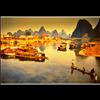


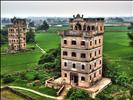

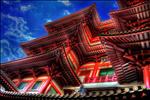
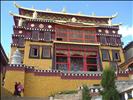
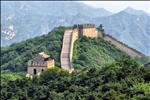

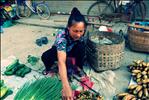
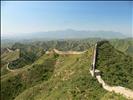











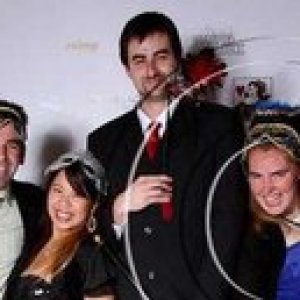

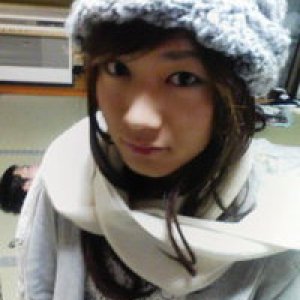
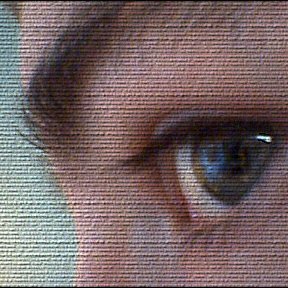
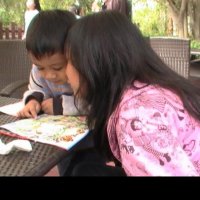

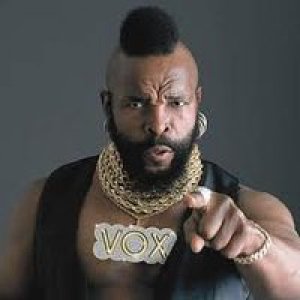




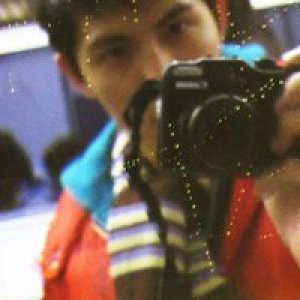
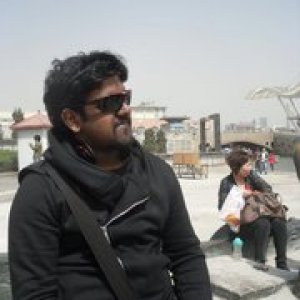
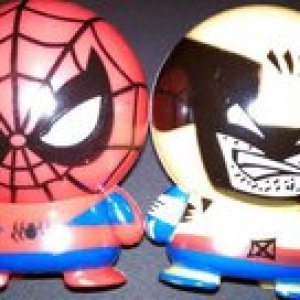

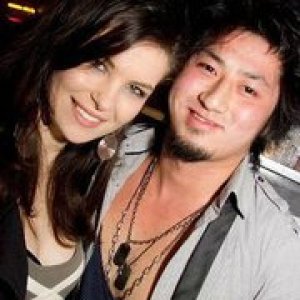





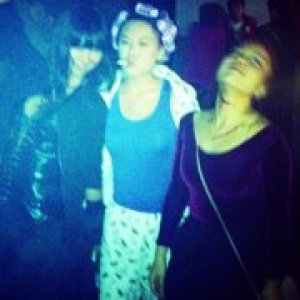























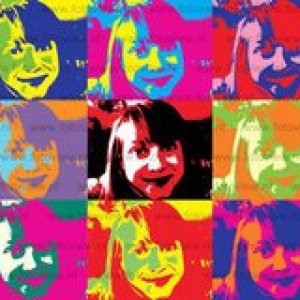





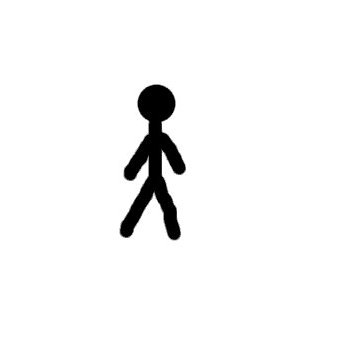




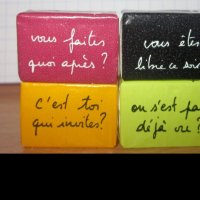








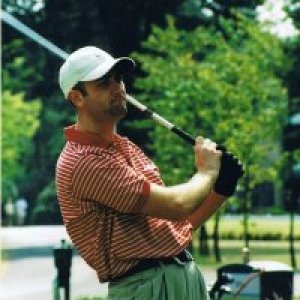



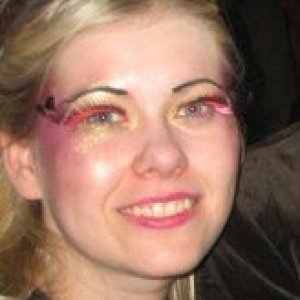

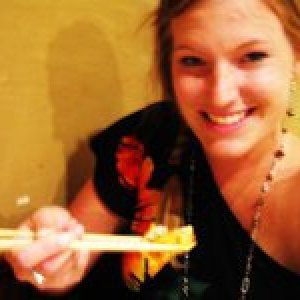

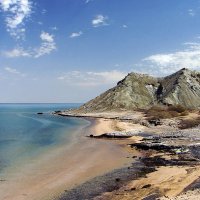




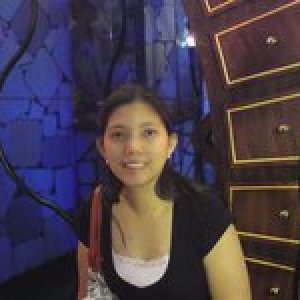











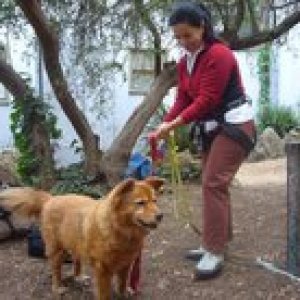
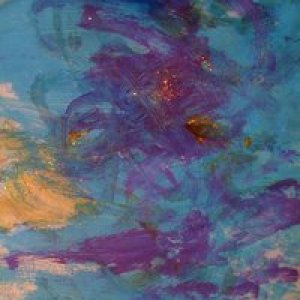

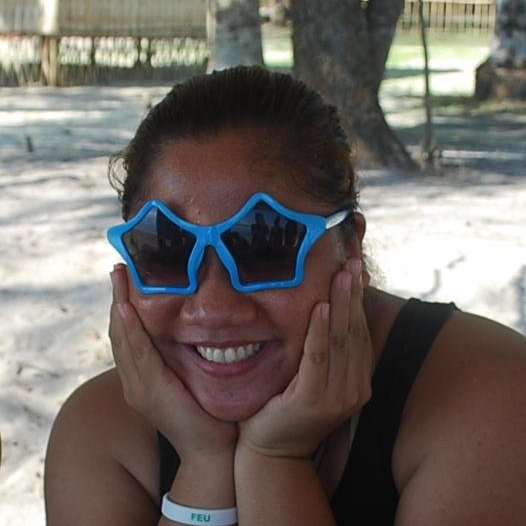









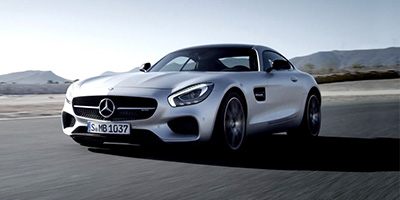







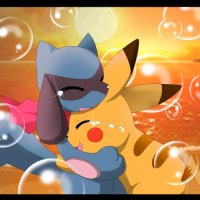

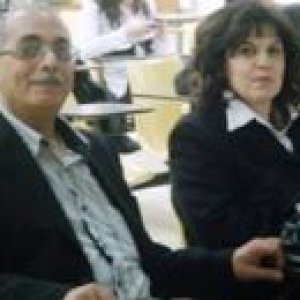
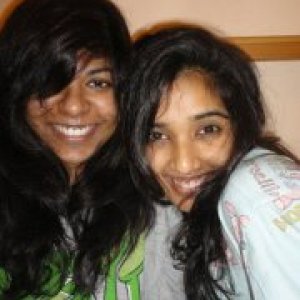






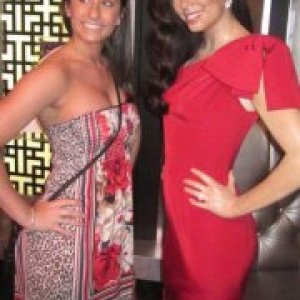











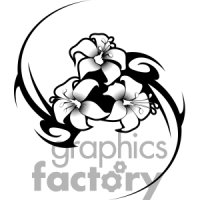








I liked
everything about China, from the food to its culture.I disliked
Nothing